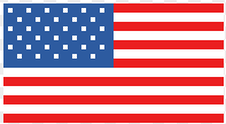|
With the advent You Tube, Facebook, and Instagram fly tying has become, in my opinion, a big melting pot of ideas, twists and tweaks of different fly patterns. In our last post, I talked in depth about how the particular pattern we were tying, O'Neill's Controlled Chaos, was really a stripped down version of 2 other flies. I do believe it was different enough from the originals that I could call it my own, some may disagree with that statement and that is fine, what I am saying is in today's day and age it is challenging to come up with a truly new idea for a fly pattern. Think about some of the staple patterns invented years ago; The Clouser Minnow, Lefty's Deceiver, Brooks Blond, The Gurgler, Ray's Fly, The Adams, Pheasant Tail, Zebra Midge, The list goes on and on and on. These patterns are originals and many, many flies have been designed using these as inspiration. I am not saying designing a new pattern can't be done, I am saying that 1) it is not as easy due to the great evolution of fly tying over the past 20 years and 2) many people come up with “original” patterns that are basically the same as flies tied years ago and they really are not “original”. Sorry guys, but it is the truth. Every so often something comes along in the world of fly tying that is truly revolutionary that has never been done before, Blane Chocklett’s Game Changer is one of those patterns. I guess I first saw the Game Changer close to 10 years ago, a bait fish fly that actually moved like a fish…who would have thunk it. The challenge is many times coming up with the idea is the easy part, bring the idea to life well, that can be the challenge. The game changer has gone through many variations over the years and I believe the “Feather” version to be the best. It is a pattern with fantastic movement, both in the design and the materials, it is faster to tie that some of the other versions, and you can tie it in a multitude of colors. It is lighter and easier to cast than some of the original flies, and they are very durable. Truly a revolution, below is a step by step of a Feather Game Changer tied and photographed by Norvise ambassador Braden Miller. Materials;
Norvise Legacy Vise Norvise Automatic Bobbin Norvise Standard Inline Jaws Norvise Fine Point Conversion Norvise Magnum Stainless Hubs (Coming soon to a fly fishing show near you) This picture shows how the Fish Spines chain together and where the proper hook placement is. The sequence that we like to use is a tailing shank (the one on the end with the 90 degree bend) 10 mm, 10 mm, 15 mm, Trailer hook (optional) 15 mm, 15 mm, 20 mm, Front hook. The secret is to gradually lengthen the shanks as you move up the fly. You can play with sizing and combo of your shanks, as mentioned, this is what we like to use. After placing the tailing shank in the vise (this is what the 90 degree bend is for) Put a SMALL amount of filler flash at the bend of the shank. 1 to 1 and a half wraps MAX! this bit of material will support and separate the tail. Prep 6 hackle tips to use as the tail of the fly, 3 for each side. You have options here for the tail, you can use marabou, hackle tips, I even saw Blane use material used for tying mop flies here. Put 1 to 1 and a half wraps of filler flash on at the bend of the tailing shank. This will help support and separate the tail feathers. After prepping the tail feathers and cutting the shafts to length tie 3 tips on each side of the shank. The feathers are tied on each side of the shank with the first section of filler in the middle of the feathers. Here we have added second tie in of filler flash at the tail. Palmer it up about 1/2 the length of the shank. Remember this is a small shank, it is VERY easy to overdress these. Less is more, we still have to get 2 Hen Saddle Feathers on here. Here is the completed tail section with the Hen Saddles tied in and palmered to the front. You can see how the filler flash is used to support the Hen feather. All of the materials work together to give this fly incredible movement. Tie off and whip finish a neat head and use head cement on EVERY section. I had mentioned this version of the fly is faster to tie than the original and it is. Fast is a relative term here, you are still going to invest over an hour in this fly. A long time for sure, we typically are throwing these on heavy tippet so you don't really loose that many so you want to glue the heads on each section so they are very durable. I have FGC's that have landed over 50 pickerel and they are still going strong so dont let the tying time scare you off. Here is a view of the tail from the top. You can see the filler flash in between the sides of the tail. You can also see how we are building a natural taper with our materials. Feathers; As mentioned we are using feathers from a Hen saddle. Hen feathers are a shorter, webby feather with softer fibers that make them perfect for this application. To build the taper is simple. As you move from the tail forward to the front of the fly you will select feathers that are progressively longer for each section. The easiest way to do this is to start at the top of your cape for the tail section and gradually pluck from a point lower and lower on the cape as you move up the fly. The lower on the cape you go the bigger (longer the fibers are) the feather is. The longer the feather the more taper you get. The picture above shows how to prep the feathers for tie in. We are tying in by the tip and palmering forward. Do not use the fuzzy part of the feather, I will typically strip this off before I tie in. On the tail sections we are typically using 2 feathers. As we move up the fly we are adding feathers on each section. By the time you get up to the head you are tying 4, maybe 5 feathers in at the same time. Always tie the feathers and palmer them at the same time, regardless of the amount using the filler flash as a support. The progression is actually pretty simple; With the exception of the tail section it is filler flash - feathers - whip finish- glue - repeat. you will need to adjust the amount of filler flash as the shanks (or hooks) get longer. Toward the tail the filler flash may be too wide, you may want to trim it so it is a little shorter (Measuring from the core out to the end of the fibers) than the fibers of the feather you are using. as you get to about the middle of the fly you can use the full width of the filler flash. We will use wider and more feathers as we work up the to the front of the fly. This will build bulk and natural taper into the fly, two very important things you need to get the silhouette and the movement you are looking for. The most important thing to remember is DO NOT CROWD THE EYE OF THE SHANK! if you do the fly will not move the way it is supposed to. Here the second section has been added. Here, several more sections and the trailer hook has been added. When you get to the point where you are adding a hook to the pattern we like to use a wire type leader material. This product from Berkley works well as does Surflon or a product called Beadalon you get in the craft stores. To make your connection cut a small piece of wire (about 4") and thread it through the eye of the shank folding it so the half way point is looped through the eye of the shank and equal lengths are pointing forward. Lay the section of the wire pointing forward on tip of the shank and use 3 or 4 loose wraps of thread to hold the wire on top of the hook shank. At this point you want to adjust the length of the loop coming off the back of the hook so the tail section of the fly has freedom to move, but is not so big it can foul. A good rule of thumb is to make the loop about the same size as the loop in the adjacent shank. Here we are working our way up the pattern by adding more shanks in front of the trailer hook. Here we are ready to add the front hook. This picture is a good example on how to do the wire connection. It also shows that Braden used a few wraps of lead on the bend of the front hook. this will help keel the fly and keep it swimming true. You can use lead wraps for this or, depending on the size of the hook, Tungsten Scud weights work fantastic for this step. Also notice Braden switched from the Norvise Fine Point jaws to the Standard inline jaws. We will typically use a hair clip to clip the back of the fly to the jaw to prevent it from flopping around when we are tying. Clipping the back of the fly to the jaws will also help to prevent us from sticking our fingers with the rear hook point. The Norvise Large, Saltwater jaw would be a good choice here as well. OK, we are tying on the front hook and close to bringing this pattern home. This is a cool technique that will really help bulk up the front of the fly. Tie in a long piece of filler flash in on the hook by the opposite ends at the bend of the front hook. This will make a loop of material hanging off of the shank of the hook. hang your dubbing twister in the loop and twist the 2 halves of filler flash together. This will tighten the core of the flash and really make the fibers stand out creating a platform for the 4 feathers you will use to finish the fly. After wrapping the twisted filler flash and the 4 hen saddle feathers to finish up the body of the fly we have added Hackle tips of either side of the fly to act as pectoral fins. This will help the fly swim and they just look way cool. NO we have a decision to make, what to do with the head. Just like the tail we have options here. We have used spun Deer hair, Slider or Popper heads, Fish Skulls or Masks, or my favorite palmered Schlappen. Here Braden has chosen to do a stacked laser dub head. This is the same technique we used in the collar for the popper and the slider on the last 2 patterns we tied. Pull a clump out, even up the tips and tie on the shank in the middle of the clump. Here Braden has tied 4 clumps, one at every 90 degrees. How far you bring the flash and the feathers will determine how big the head is. I like to use about 1/3 of the front hook shank for the head of the fly. Once the stacks of laser dub are tied in use a brush to brush out the fibers. Brush everything forward first, then brush everything back. This will give a very nice "airy" head that will veil back over the rest of the front section of the fly. Repeat these tie in's until you reach the eye of the front hook. Now you could call it quits here and this will fish just fine. Always tinkering and pushing the techniques of fly design. Here Braden trimmed the head a bit to give it the shape he wants and added some Flymen Dragon eyes. Here is the finished fly!
The Feather Game Changer really is not a difficult pattern to tie, it is basically repeating multiple sections of pattern over and over again. Once you see one of these in the water and better yet see how they produce fish I think you will understand why we spend the amount of time that we do to tie these. Your investment will be rewarded, trust me! Thank you Blane for coming up with such a fantastic pattern and a special thank you to Norvise ambassador Braden Miller for tying and photographing this step by step for us. I am sure the Norvise faithful appreciate your effort buddy! Till next time... Tight lines - Tim OK, So this week we are back on our series of my favorite Smallmouth patterns and this one may be my favorite. The O'Neill's Controlled Chaos is a pattern developed over the past few years. This fly is a direct decedent of Mike Schultz's Swinging D and Eric Snyder's Twisted Swinger. The Swinging D is a fantastic fly, one of the best Smallmouth flies out there. It takes a long time to tie. Mike himself offers a stripped down version to combat this issue. My buddy Eric Snyder stripped it down a little more with his pattern the Twisted Swinger. The Controlled Chaos is stripped down even more giving what I feel is good balance between a fly with the action that I want and time spent at the bench. More of a platform really, the possibilities are endless. When fishing this fly you want to throw it on an intermediate or a type 1 sink tip on a shore leader. The idea here is the foam head will try and float the fly and the line will try to sink it. The result is a battle of wills that give this fly incredible action. Originally designed as a Smallmouth pattern, we have successfully landed Smallmouth, Largemouth, Trout (Rainbow, Brown and Brook) Chain Pickerel and Striper to name a few. Size can be adjusted by modifying the hook, shank and head size. This one is about 3.5 / 4 inches and will throw nicely on a 7 weight. This one is in "Bleeding Shad" color. We also use Black / Chartreuse and Fire Tiger. Recipe; Hook; Partridge Attitude Extra #1 Tail; one white and one Pearl Grey Marabou Blood Quill Flash; 2 or 3 strands of silver Flashabou Body; Complex twist of Schlappen and Polar Chenille UV silver. Shank; Flymen 35 mm (1 3/8 inch) shank Body; Complex twist of Schlappen and Polar Chenille UV silver. Collar; Senyos Laser Dub red / white Head; Rainey's foam diver head size small Norvise products used; Rotary Norvise, Magnum Hub, Auto Bobbin, Saltwater Jaw  Tie the tip of both feathers and palmer forward until all of the fibers are on the hook. Take care not to trap any of the fibers as you are wrapping. Use your bodkin or a brush to pick or brush out the tail as you are wrapping forward. Remember, if you are using a Norvise you can just spin the vise. To see a video of how to make the Complex Twist with the Norvise click HERE 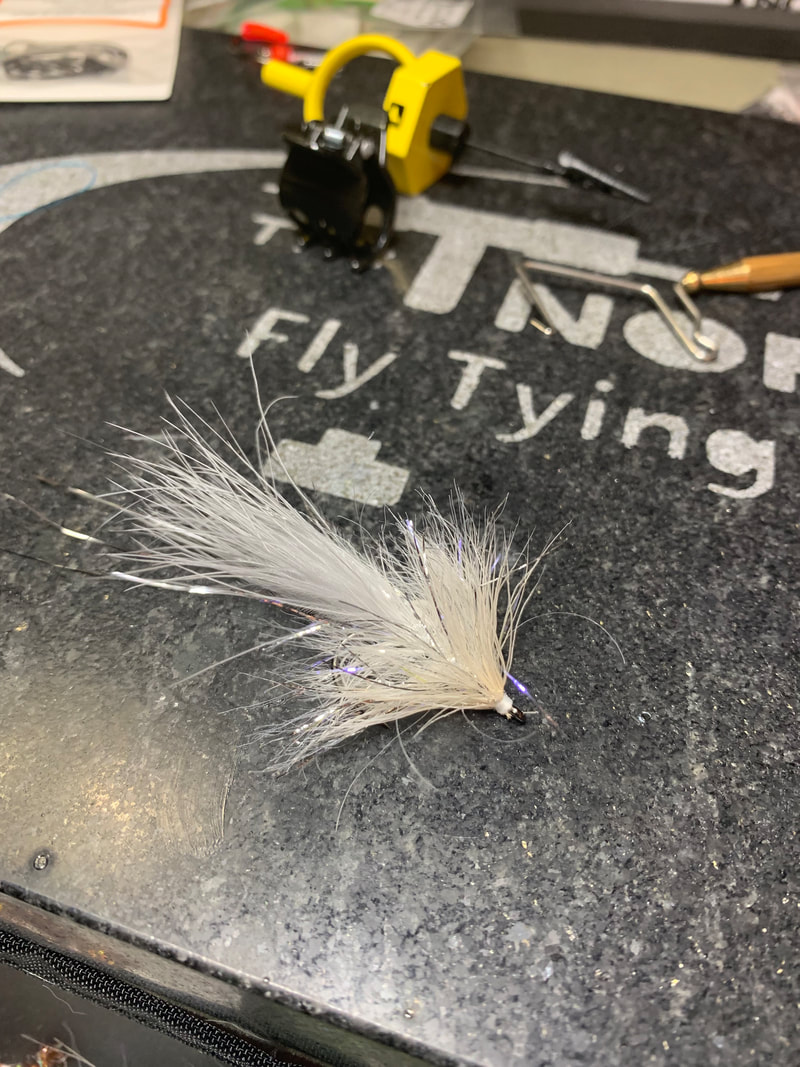 Palmer the complex twist forward to the eye of the hook. Take care to stroke the brush reward after each turn so the fibers are not trapped. Tie off and clip the brush at the eye of the hook. Use your bodkin and a brush to pick / brush out the body of the fly. This is the completed tail section of the pattern. 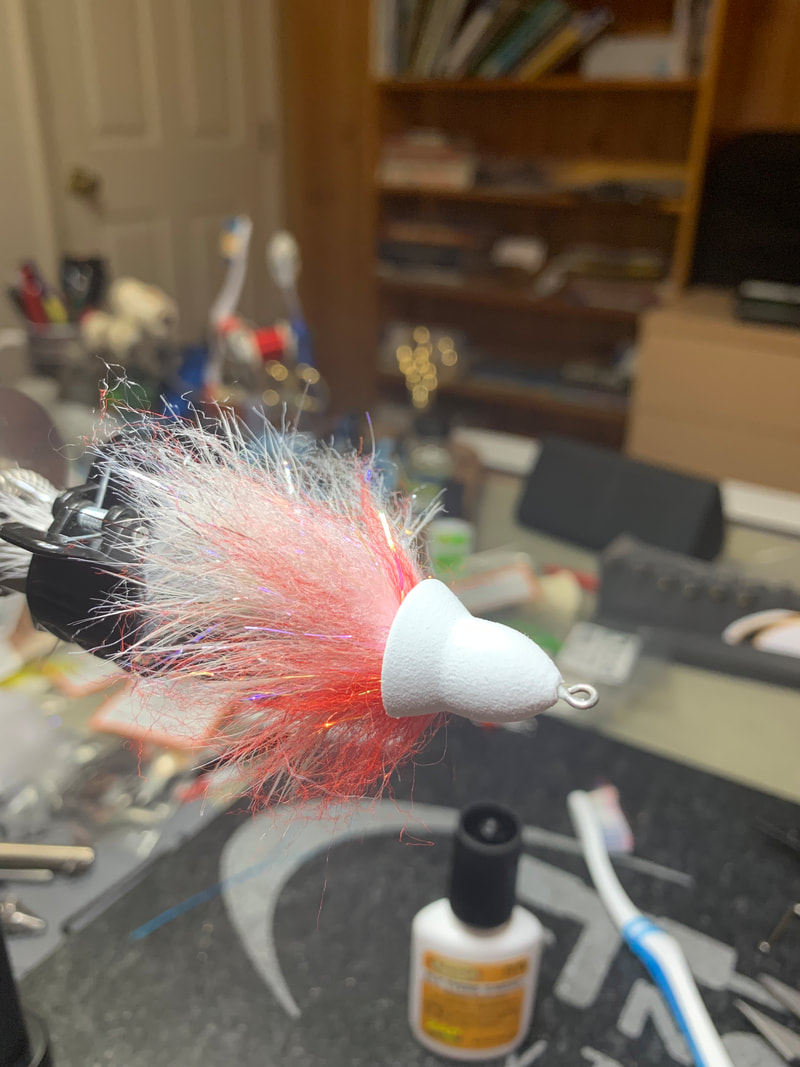 Coat the thread base and the front of the collar with a heavy dose of Zap-A-Gap and slide the head on over the shank. You have about 5 seconds before the glue takes hold so get it on and positioned quickly. You will only get one shot! Build a nice thread dam in front of the foam and head cement this to finish off the fly. The last three pics show the finished fly. As mentioned this Bleeding Shad color combo is a favorite of mine followed closely by Fire Tiger.
When fishing be sure to mix up your retrieves and most importantly pause between strips. You will be surprised to see, even when you are not moving the fly it is always in motion. Often the strikes will come during the pause. I hope you enjoy tying and fishing this pattern. It has become one of my favorites over the past few years. Till next time... Tight lines - Tim We have been Pretty busy the past few weekends here at Norvise. We will get back to the top 5 Smallmouth flies next week, I promise. I wanted to share this with you first. Many of you may know that Project Healing Waters is a program that was near and dear to Norm's heart and we have continued that tradition. Anyone involved in PHW as a participant, volunteer, program lead or administrator will receive a 40% discount on any Norvise product. We believe wholeheartedly in this organization and believe it to be one of the best programs out there for helping our veterans. This past weekend we got to see an organization as passionate about PHW as we are. Stars and Stripers is an annual outing for disabled veterans from Project Healing Waters. The Kent Island Yacht club id located right off of Rt 50 in the Stevensville, Maryland area. One day, typically in August many boat captains, mates, cooks, and volunteers descend on the club to host this great event. This year, the tenth year for this event, around 25 boat captains donated their time (and boat) to take close to 50 PHW veterans fishing for the day. We were invited down to set up a area to tie flies and show the veterans how we do what we do. This was such a rewarding day getting to tie and talk with several of the veterans. The event was very well run, and the food was fantastic! We would like to thank the Stars and Stripers organization for having us, we are already looking forward to next year! Check out some of the pictures from Saturday. As mentioned it was a great day, very fulfilling and for a great cause. I would encourage everyone in the fly fishing industry to be involved with Project Healing Waters on some level. These great men and women risk it all so that we can live in the greatest country in the world and do things like this everyday. Honestly, we owe it to them and it is the least we can do. Till next time...
Tight lines - Tim As mentioned in my "5 favorite Smallmouth Flies" post a few weeks ago, any Smallie fisherman worth his salt has a large assortment of Poppers. Smallmouth bass were tailor made for fly fishing. I have often said "pound for pound Smallmouth are the hardest fighting freshwater fish that swims". I dont think any true Smallie addict would argue that statement. Add to that a fish that is willing, dare I say prefers, to take a fly off the surface and you just may have the perfect fly rod fish! I love poppers! I love fishing them, I love tying them, I love designing new ones, I just plain love poppers. What is better than watching a huge frog or fish popper disappear in that tell tale "flush" of water then when you throw the steel to them, they just loose their mind. Watching a popper be eaten may be one of the most exciting things in fly fishing! Below is one of my favorite popper designs, it can be tied very small say on a #4 hook to very large, on a 4/0. This is the pattern I base most of my other popper designs off of. You can change the tail to Cohen's Creatures frog legs for a frog popper, bucktail and saddles for a longer profile or you can even articulate it. Check out this great pattern below... Recipe; This is for the "Bleeding Shad color, we also do Fire tiger and Burple (black / purple) Hook; Gamakatsu B10S (this is a size 1) Thread; Tyer's choice, color to match body (I am using Veevus 6/0) Tail; One white and 1 grey Marabou blood quill tip tied and palmered. Body; complex twist of 1 white schlappen feather and UV Polar chenille, silver Collar; Senyo's laser dub Head; Flymen double barrel Popper hers (this is a medium head) Eyes; Flymen 4mm Ice eyes I am using the Norvise Large Inline , Norvise Magnum Hubs and Norvise Material Clip to tie this pattern.  Tie both feathers in at the same time by the tip at the point where the thread ends right above the barb. Wrap 3 or 4 turns forward, Fold the tip back and wrap back over 3 or 4 tight turns back to front. This "fold in" method will keep the tips from pulling out while you are palmering the feathers forward.  Advance the thread forward to just past the tie in point, half hitch and place the bobbin on the thread post. I like to grab the feather stems with a pair of hackle pliers. Now wrap the feathers forward (or spin your Norvise) taking care not to trap any of the feather under the stem. Once you have wrapped the whole 3/4 of an inch of feather tie off the bare stems with several tight wraps. 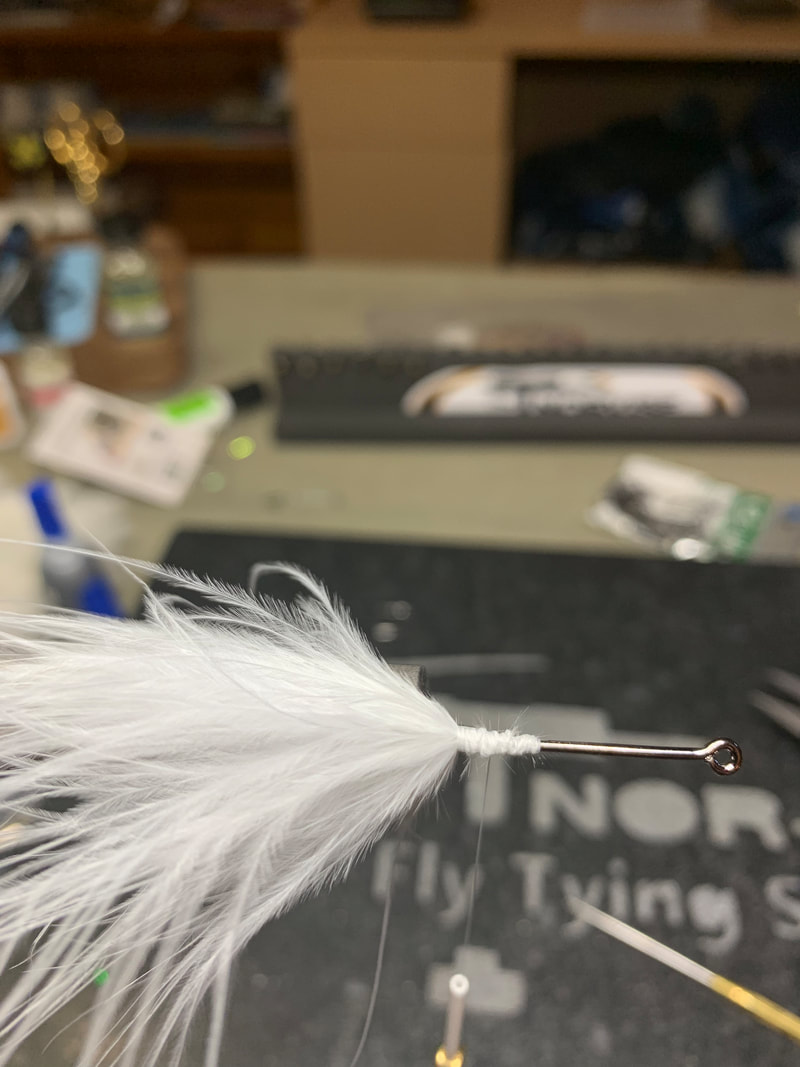 Marabou gets a bad rap in my opinion for not being durable, here is how to make it very strong. Use your bodkin or a tooth brush and stroke back all the marabou, Take care to make sure they are evenly distributed around the hook shank. Now, take your thread and COMPLETLY cover the stems with thread. A drop of Flex Cement here is a fantastic idea. By covering the stems you are protecting the weakest part of the tail. If the stems don't blow up, the tail will last a very long time. I have tales tied in this manner with well over 50 Pickerel landed and the tails look almost brand new. Remember, a Pickerel is a cousin of the Pike and Musky! 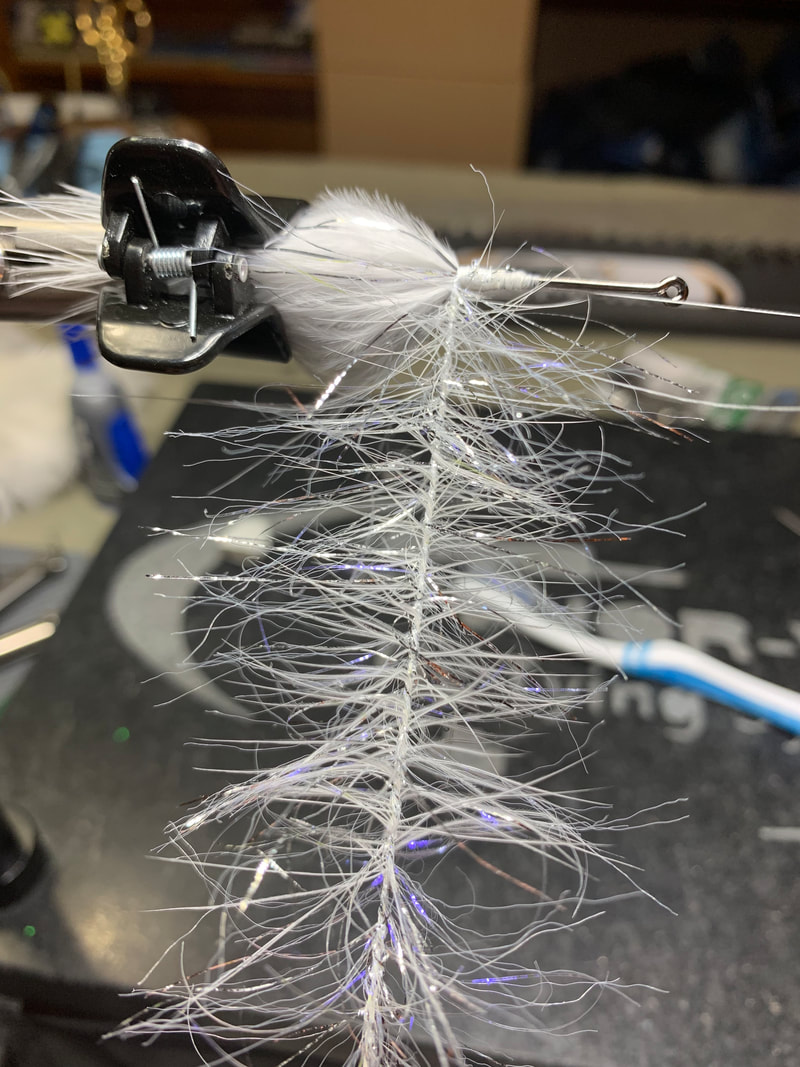 Now, hold the feather and the Polar Chenille together with a pair of hackle pliers at the base and spin them together. This will make a dubbing brush of sorts. This "Complex Twist" will blend the feather and the polar chenille together, it will also strengthen the feather by wrapping the core of the polar chenille around the feather stem again, protecting the weakest part of the brush. You will have to use a brush of your bodkin to pick out the fibers. Spin a little and brush, spin and brush, etc. Note; at the bottom there is a link to a video showing how to do this step by spinning your Norvise, it is pretty cool. 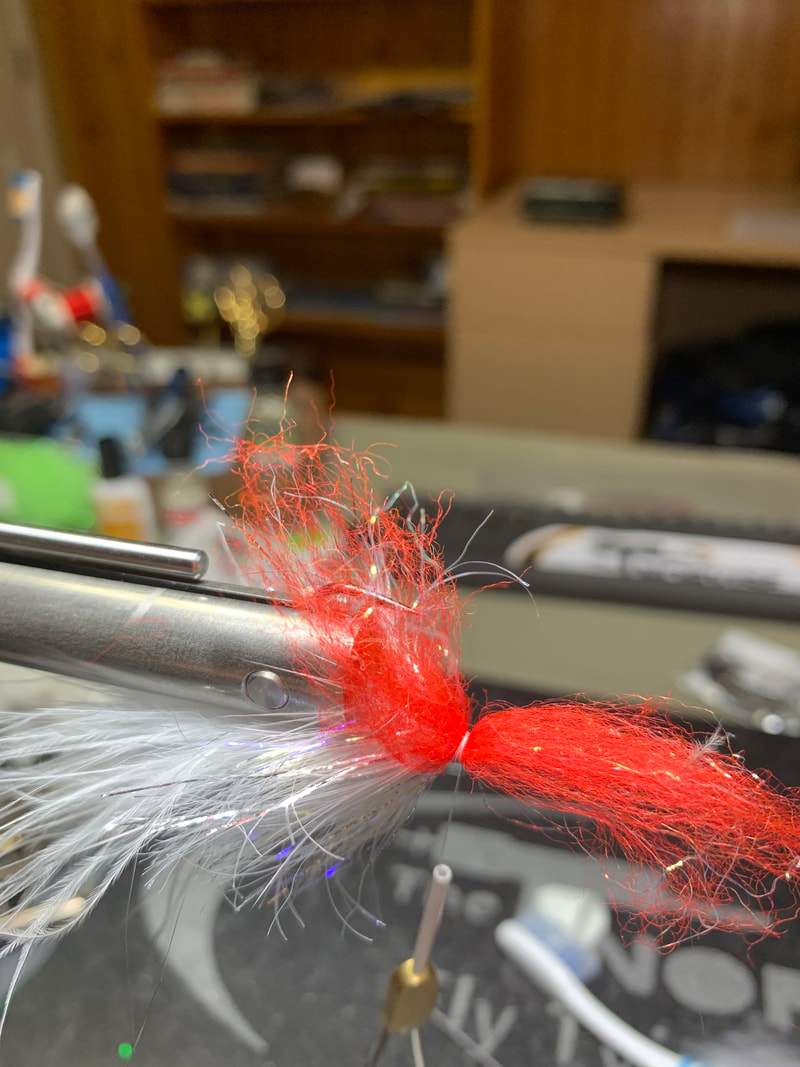 Now we are going top build the collar. We will use Senyo's laser dub, red on the bottom and white on the top. Select a small bit, about the thickness of a match stick. Align the the fibers and tie the clump to the hook in the middle. Make sure the material is distributed 180 degrees around the bottom of the hook. Repeat this step in the top with white laser dub. 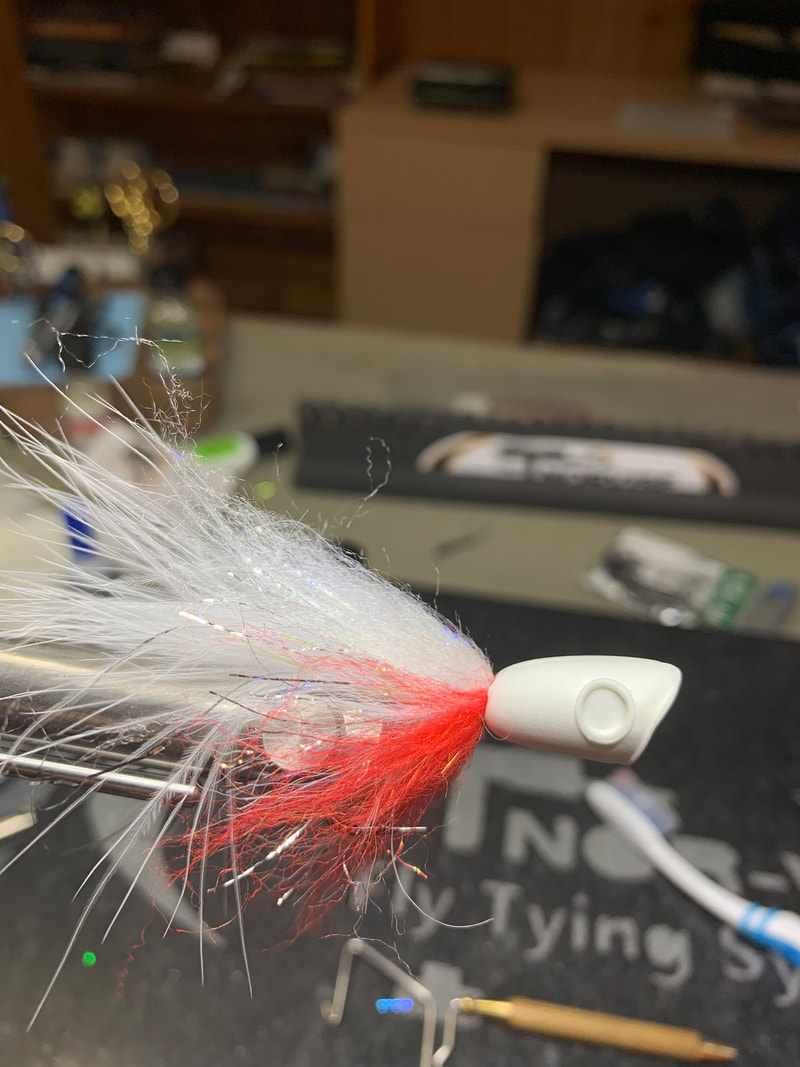 Cover the entire front of the hook with several layers of thread. This will give the glue something to grip on TEST FIT THE HEAD FIRST! once you are happy with it use ZAP-A-Gap to glue the head to the hook. Warning; you have 1 shot and about 7 seconds before the glue takes hold! Get the head on and situated quickly, if not you may be cutting a perfectly good popper head off and trying again! This is one of my favorite of my designs. I say "My" designs, The palmered tail I learned from Rich Strolis and the body I learned from Eric Snyder. Thanks guys for being part of a great pattern! Till next time...
Tight lines - Tim For a link to a quick video on how to do the complex twist using the Norvise, click HERE. As mentioned in my last post this fly has become a staple in my Smallmouth arsenal. It is a rare, very rare occasion that you will see me on a float with out this rigged on one of my three rods. My buddy Ed started using this pattern several years ago after talking to William Heresniak of Eastern Trophy Fly Fishing. This pattern comes form the mind of Chuck Craft, arguably one of the most accomplished Smallmouth fly anglers in the country. Crayfish patterns are kind of like Stonefly patterns in that it is hard to get the look you are going for without getting too detailed. This typically adds tying steps and time to the fly. When tying bottom crawling type flies you already know going in you are going to loose some. It is a tough pill to swallow when you take 30 / 45 minutes to tie a fly and than hang it on a rock and break it off 5 minutes after you tied it on. The Clawdad hits on all of the key features of an impressionistic Crayfish pattern, is relatively fast to tie, and just plain catches BIG smallmouth! Could this be the perfect Smallmouth fly? Check out the Step By Step below, tie up a few on your own and see for yourself. Recipe; Hook; Mustad R749672 2X heavy 4 XL signature hook (this is a size #4) Thread; Tyer's choice, color to match body (I am using Veevus 6/0) Eyes; Medium lead dumbbell eyes Body; Medium Chenille, color to match tail Claws; Eastern Trophy Fly Fishing Clawdad tail size to match hook, color to match fly Legs; Medium round rubber legs To purchase everything you need to tie click HERE I am using the Norvise Large Inline jaw and Norvise Magnum Hubs to tie this pattern. Disclaimer; I vary a little from the original dressing. This is a matter of personal preference in some of the things I like to see in the pattern and is not as any form of dis-respect to Chuck or William. I believe confidence in a fly is very important, while I dont think I have deviated much from the original, I do know if I like the way a fly looks I will fish it more effectively. In capable hands, both flies will produce equally as well. 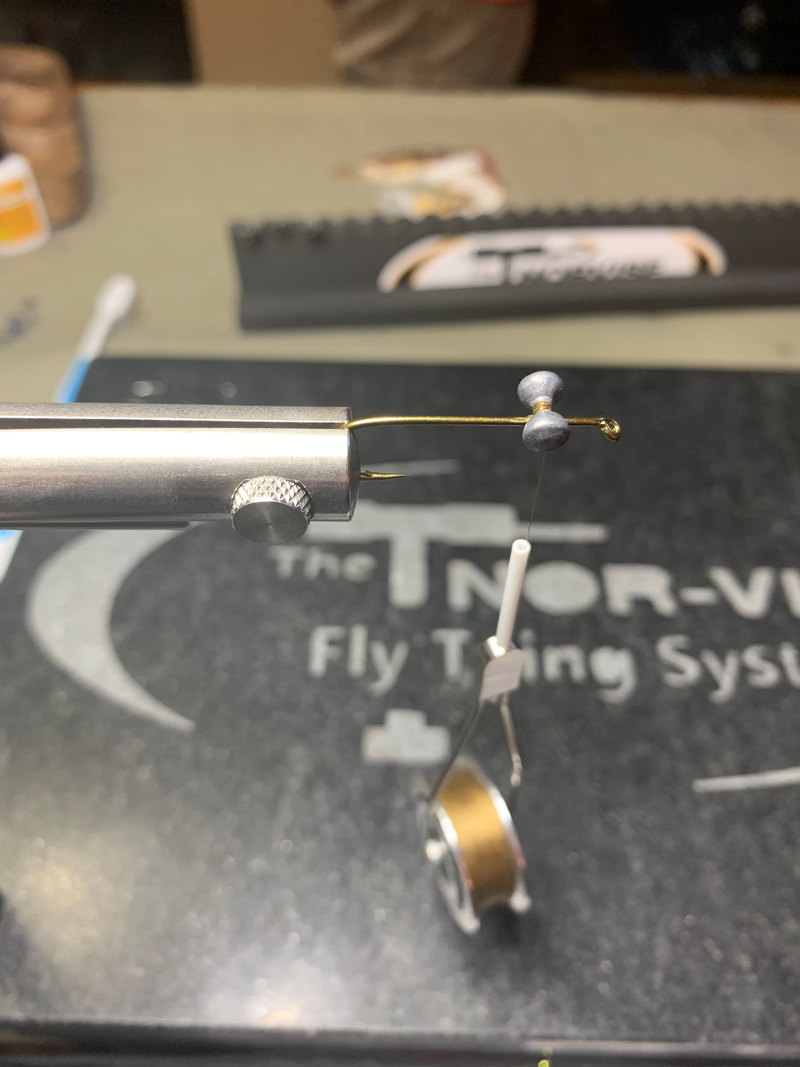 Next tie in a set of medium dumbbell eyes in the same fashion you would if you were tying a Clouser Minnow. Couple of tips; 1) you can use the black coated eyes or paint the eyes afterward to match the color of the body. 2) I will use the length of the dumbell to measure back from the hook eye to know where to tie them in. 3) ABSOLUTELY glue, epoxy or light cure the eyes after tying in.  Strip the fuzzy part of the chenille off of the core and tie the core in right behind the eyes. Here I have "folded in the core". Folding in is where you tie the core down with several tight wraps, fold the tag end back over the thread wraps and wrap back over top of the core. Doing it this way makes it virtually impossible to pull out. 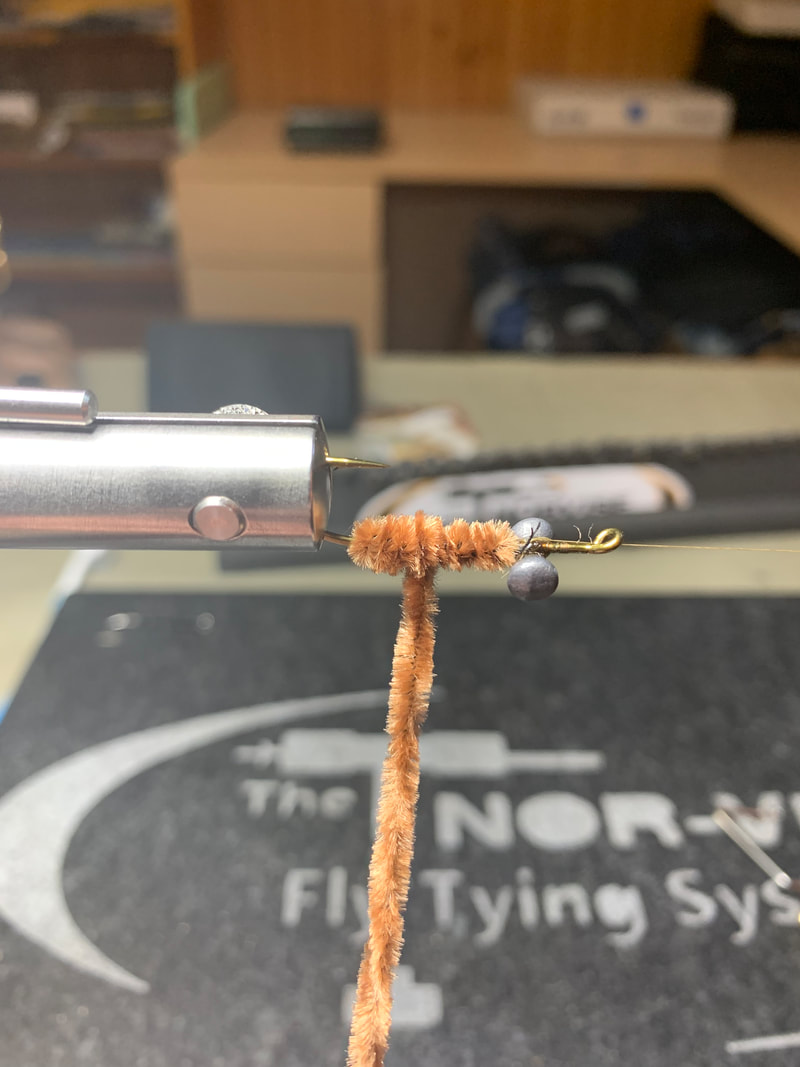 Here is the first tweak from the original. first lay down a little Flex Cement on the hook shank. Next wrap (or spin if using the Norvise) the chenille around the hook shank from the back of the eyes to just under the barb of the hook moving front to back. Next, wrap the chenille up on top of itself, making the body double thick, for 3 wraps moving back to front. Stop here. 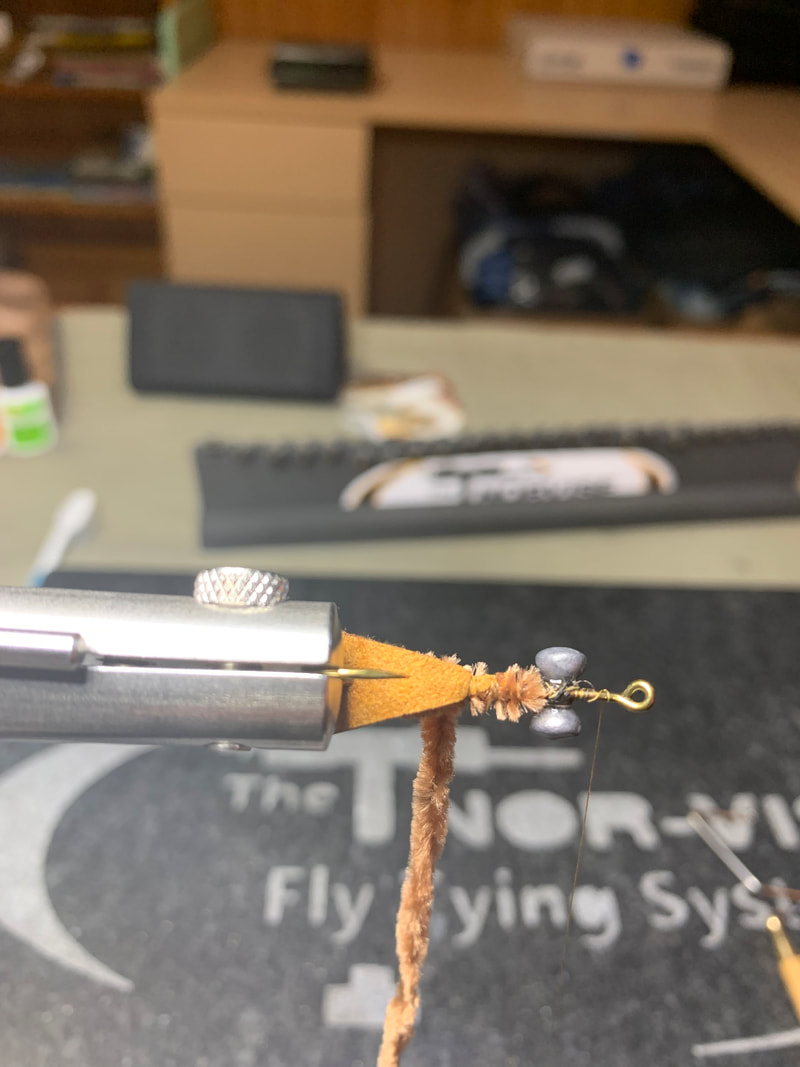 Wrap your thread back to the point where the chenille is hanging and secure it with several tight turns of thread. Carefully remove the fly from the jaws and put the tail on. The tails are pre punched with a hole and will easily slide over the hook point. Return the fly back to the vise. Position the tail so it is straight and on top of the chenille on the inside of the hook bend. secure the tag end of the tail with several thread wraps advancing the thread up to the eye of the hook. A Dab of Flex cement will do you well right where the tail meets the chenille. 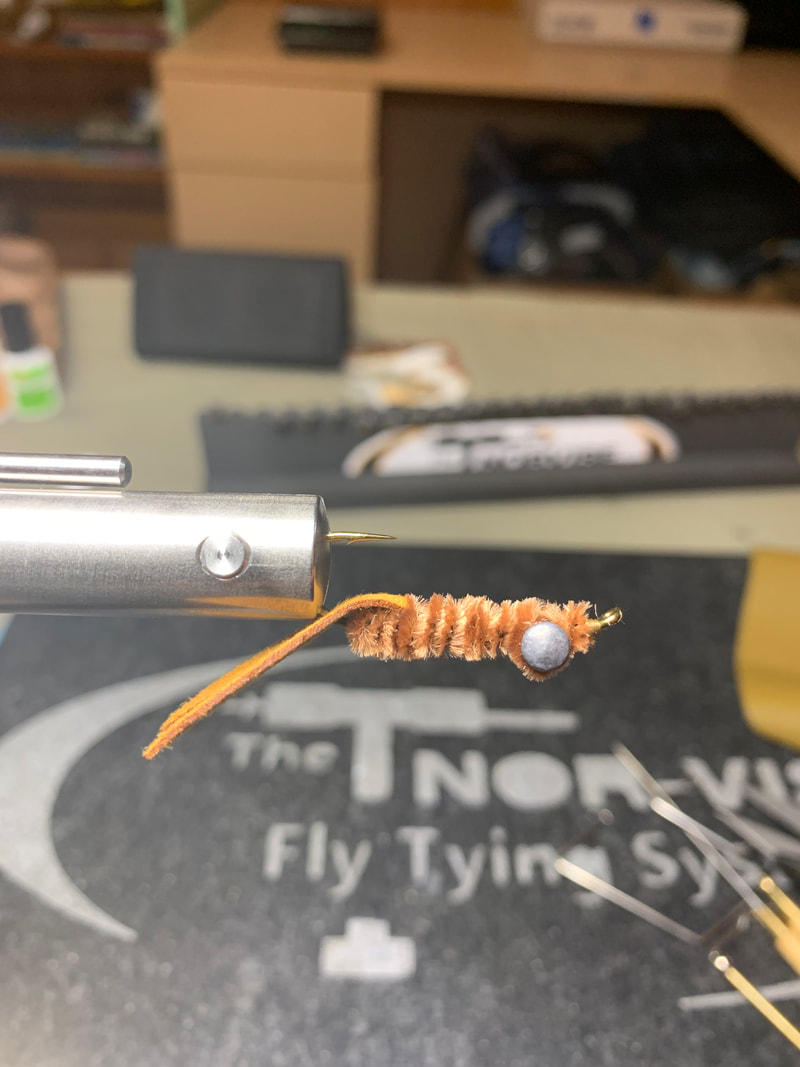 Now wrap the remaining chenille over the tag end of the tail and forward to the eye of the hook. Figure "8" around the dumbbell eyes to make sure they are covered. Tie off the chenille, clip and build a nice thread head. Clip your thread from the hook. You can see this double wrap technique gives a little fuller body, it also acts as a support for the tail and will keep it from sliding around the bend of the hook. I believe the fly swims better this way. To fish the fly I like to throw it on an intermediate or a sink tip line on a short (4' max) 12# leader. Use a non slip mono loop to connect the fly, this will allow the fly to move and the action won't be effected by the heavy tippet. Cast out, let it sink and crawl or hop it back. 2016 was the best year I can remember in 30+ years of fishing our Smallmouth rivers. Myself and Ed landed well over 2 dozen fish that year over 18", several were over 20 and my personal best ever on a fly a true "blackjack" pictured below. ALL of these were landed on the Clawdad! Till next time...
Tight lines - Tim Most of my friends locally that know me know that I am a self proclaimed Smallmouth nut! They are my favorite fish and they are tailor made for fly fishing. Myself, Tyler and my friends spend many hours chasing Smallies each Summer. We have our rods, reels, and watercraft dialed in. We each carry several rods with different lines so we can cover the entire water column from top to bottom and we are very familiar with the rivers that we float. What does all of this mean? Well, we are fortunate enough to land several 18 to 20 inch Smallmouth each year. Our Smallmouth game is tight, and we take pride in that. I always say if you were to look into my working fly boxes you would probably be extremely underwhelmed. You may expect to see box after box with hundreds of different patterns in every color under the rainbow. While I do love tying flies, I love catching fish even more. and when I am all on the water it is all about the fish and catching them! While we are constantly experimenting, tweaking, and coming up with some new patterns. What follows are my core 5 Smallmouth flies. I call these "American Express Flies' because you don't leave home without them (you will have to be over 40 to get that reference) and you can bet if you see me on the river one (or 3) of these will be tied on my tippet. We are full into summer fishing right now (the heat index is 108 as I type this) so I thought for the next couple of blog posts I could do a series of my 5 favorite Smallmouth patterns followed by a step-by-step tutorial in the coming weeks of each pattern. If you are a Smallmouth Junkie like me this is a great opportunity to fill your boxes with some proven producers. Here we go... The ClawdadIf you told me I could only ever fish one fly for Smallmouth this may be the one. This fly has accounted for more 20+" fish in the last 8 years than any other fly I fish. Spawned from the mind of Chuck Craft and available through William Heresnaik in materials or whole at Eastern Trophies Fly Fishing this could possibly be the perfect Smallmouth fly. I typically ALWAYS have one of these rigged and fish it on the bottom on an intermediate or sinking line. Brown (or moccasin) is my go to color, we have also done well on olive and black. I tie mine a little bit different than the original dressing, just a few little tweaks. They probably don't really help and the original is probably best left alone. Fishing is 90% confidence and if I feel more confident in the pattern, I am going to fish it more effectively. PoppersAny Serious Smallmouth angler worth his salt loves fishing poppers. The fishing is very visual and the takes can be explosive. We have used several popper styles over the years, some tied and some purchased. we have settled on these 2 as our favorites. The Boogle Bug. A friend from Virginia turned me on to these several years ago. We got to talking about Smallmouth fishing and he said in his Virginian accent "you ever fish Boogles"? You have to say with the accent or it kind of looses the presentation. I had no idea what he was talking about. Boogles are a hard face popper tied with a hackle skirt and rubber legs. They are very durable and catch a ton of fish. The one thing I noticed is the hard face poppers, especially the Boogles have a higher pitch pop when you strip them. Something I believe the fish really key on at times. If interested check them out here. A few years ago the Flymen company came out with the Double Barrel popper heads. As soon as I saw them I knew I had to try them. The dual sound chambers and the semi-soft popping face gave us a sound that was very familiar. Remember the old Arbogast Hula Popper? The big gaudy, weird looking Bass hard bait? We fished these all the time as kids and they produced a deep, hollow pop it seemed the fish couldn't resist. Well, the Flymen Double Barrel popping heads come the closest to reproducing that sound. We quickly put these heads into some of our current designs (both mine and some of my friends) and the results have been fantastic. O'Neill's Controlled ChaosThis type of fly is really more of a tying style rather than a pattern. Mike Schultz of Schultz Outfitters came up with a great pattern Called a Swinging D. This was the first time I saw a foam popper head turned around backwards to create a diver type of fly. The Swinging D is a GREAT fly, it takes a long time to tie with a lot of steps. Many people, including me, have taken Mike's pattern and tweaked it a bit for various reasons, for me it was strictly tying time. This is probably my favorite pattern in the bunch and, like the Clawdad you will be hard pressed to see me without one if these rigged up. Throw this on an intermediate or a type 2 sink tip on a short leader. The foam head want's to naturally float the fly up and the sink tip wants to pull it down. This self imposed Tug -of War creates an action that is incredible! This pattern is ever changing and here are a few of the variations I have used over the past few years. I am currently working on a all Synthetic version of the fly using some of the great new brushes that have hit the market recently. Like I said, this is more of a basic platform pattern so have fun with it. The Feather Game ChangerAbout 8 years ago a fly hit the market that was truly a revolution in the fly tying world. Blane Chocklett's Game Changer is truly an innovation in the fly tying world. More of a platform for tying multiple patterns the Game changer is available in many variations today. My favorite is the Feather Game Changer. MUCH faster to tie that the original (not fast mind you, they still take 45+ minutes to tie) the best thing about this version is the taper is in the materials, there is little to no trimming. Now you are seeing variations with spun deer hair heads, popper heads and the like making this pattern very versatile. Check out one of the great videos on how to tie this great pattern by searching Feather Game Changer. Shumaker's Shimmering MinnowBrian Shumaker is one of the premier guides on Pennsylvania's Susquehanna River. You may have heard of the Susquehanna before as it is where the famous Clouser Minnow was born. The Shimmering Minnow is a bit of a wide body baitfish pattern, a perfect match for the juvenile Shad the Bass in my area enjoy. Easy to tie and fishy as any fly out there it is easy to see why this pattern has become a staple in my buddy Ed's Fly box. You can tie this in Multiple colors, we prefer the pearl / grey version. To date I believe the shimmering Minnow has landed something like 40 different species from Smallmouth on the Susquehanna to Steelhead in Erie, it is just a great all around fly. Well, there you have it, my top 5 Smallmouth flies. Stay tuned in the coming weeks for tutorials on how to tie all of these great patterns. Till next time...
Tight lines - Tim Check out the summary of Norvise Ambassador Mike Corrigan's recent trip to western Manitoba to chase this great species, the Tiger Trout. Where I live in the central part of Canada, we are blessed with a seemingly endless number of species that can be caught on a fly. Two years ago I landed 20 different freshwater species locally (to go with an additional 10 saltwater varieties). Spring 2019 is late in Canada this year, most spawners are still "busy" as I write. The Pike are a few weeks late and the Smallies are still on their nests. So, for an early season fix we headed off to the western part of Manitoba for one of my favorite species to target; the beautiful Tiger Trout. Tigers are a sterile hybrid, a cross between a Brook Trout and a Brown Trout. The province of Manitoba introduced Tigers to a lake 10-15 years ago and they have been a favorite for anglers from all over Canada and the USA. As seen in the pictures below. they have a vermiculited camo back and the white tipped fins of the Brookie. In the Fall they go through a mock spawn and get the orange bellies. Tigers grow quickly and reach an incredible 28"; my largest is 24". Tigers are incredible fighters and the best part......they take top water flies! I fished with a relative newbie on this particular trip, who had never landed a Trout on a fly before. We also entered something called the Bug Chucker Cup; an annual 4 lake tournament based out of the town of Roblin, MB. Back in January 2019 we hatched a plan, during a -40C cold spell, in Winnipeg to enter the fun event. As I mentioned the season was late and we were hoping for the best....... I still use my river boat for the lakes, powered by a 55 Minn Kota. The flat bottom and spacious interior make for a comfortable day. We fished 4 different lakes on the trip, with the Tigers being our main focus. On day one my partner got into his first fish and literally had his new Orvis rod almost ripped from his hands. These are very strong and very aggressive fish. We both missed fish that day, and the Tigers won round #1. We fished a lake nearby to our hotel the next morning before setting out to try round #2 with the Tigers. (Below are a few shots of the Rainbow and Brown Trout typical of the other lakes). Arriving at the Tiger Trout launch at 6 pm we saw a still water fishing school just finishing up. After comparing notes, we targeted a portion of the lake the group had not tried. This time of year the sun is up until 10 or 11 pm, so we had lots of daylight ahead of us. Tigers, with their Brown trout genes, become less wary as the sun gets lower in the sky. They will hit most anything that is thrown within the ring of their rise; so that was to be the game. Find a rise, find a feeding fish! We both had my Foam Mouse on (Topo Gigio, for those old enough to remember the Ed Sullivan show). You can see the evidence in the corner of the Tigers mouth. We landed several fish to 19". So, the day came for the tournament. Our first venue would be an afternoon session, on a Brown Trout lake which we had pre fished the day before and had caught 6 fish to 20". This day, however, we would be shut out! The second venue saw us back at the Tiger lake for the evening session, which was perfect. Without hesitation we tied on Topo Gigio! My partner landed an 18" Tiger and I a 22" beauty. After day #1 we were near, or at the top, of the leader board! Day #2 was spent on two Rainbow/Brown Trout lakes and we ended up doing a lot of casting but no catching. The fish were deep because of the cooler waters. As a note, earlier in our pre fishing time period we woke up to ice in my boat, after an evening rain storm, to start one of the days.......ice in late May! The post tournament banquet and social was first class. A total of 13 teams were entered in the tournament and we finished out of the top 3, but my partner did get his casting tuned up and he did land fish, so all in all a very successful outing. Thanks to Roger for his camera work! So all in all we came, we saw, and we tamed the Tigers. Now we need some heat to get the Muskies to get their spawning done. It will be season opener in a week. On to the next species...... Mike Corrigan What a great story and even better pictures! Thank you Mike for sharing this with us. Till next time... Tight Lines - Tim Our buddy and Team Norvise member Braden Miller attended ICAST a few weeks ago in Orlando, Florida. We kept seeing posts on Facebook and the pictures He and his mom Casey were texting us. I asked him to write a Blog post for Norvise about his experience. He just sent it to me today, so here id "ICAST / IFTD through the eyse of a 12 year old" By Braden Miller.
Hi, my name is Braden Miller and I was lucky to attend my very first ICAST/IFTD in Orlando, Florida this July with Temple Fork Outfitters (TFO). In this post I want to talk about my three days at the show, my Facebook live interviews with TFO, what booths I visited and some of the famous fisherman and youtubers I meet. My mom and I arrived in Orlando Tuesday, July 10th and we stayed at the Hilton Orlando with everyone from TFO. There were many people/companies that stayed here too. As soon we walked in the doors the first people we ran into in the lobby was Mr. Duke Davis and Mr. David Folkerts with Project Healing Waters Fly Fishing (for those of you who are not familiar with PHWFF, they are a non-profit organization that has volunteers and partners that work with veterans to teach them classes in fly tying, rod building, casting and they have fishing trips/tournaments, with over 200 programs throughout the country). You can check out all the exciting things PHWFF has going on by visiting their site at http://projecthealingwaters.org/ Tuesday was a very relaxed day, we checked in, mom unpacked, while I tied a Blake Chocklett feather game changer with a spawn fly head, and then we spent the rest of the day at the pool. |
Archives
April 2024
Categories
All
|

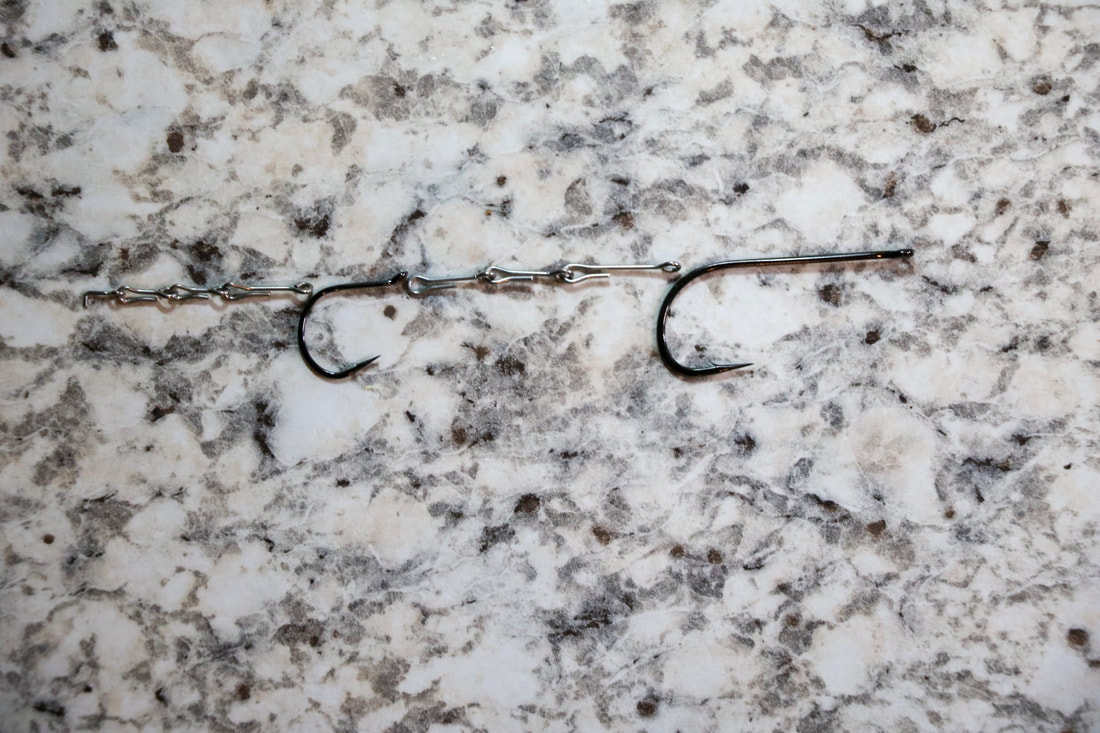
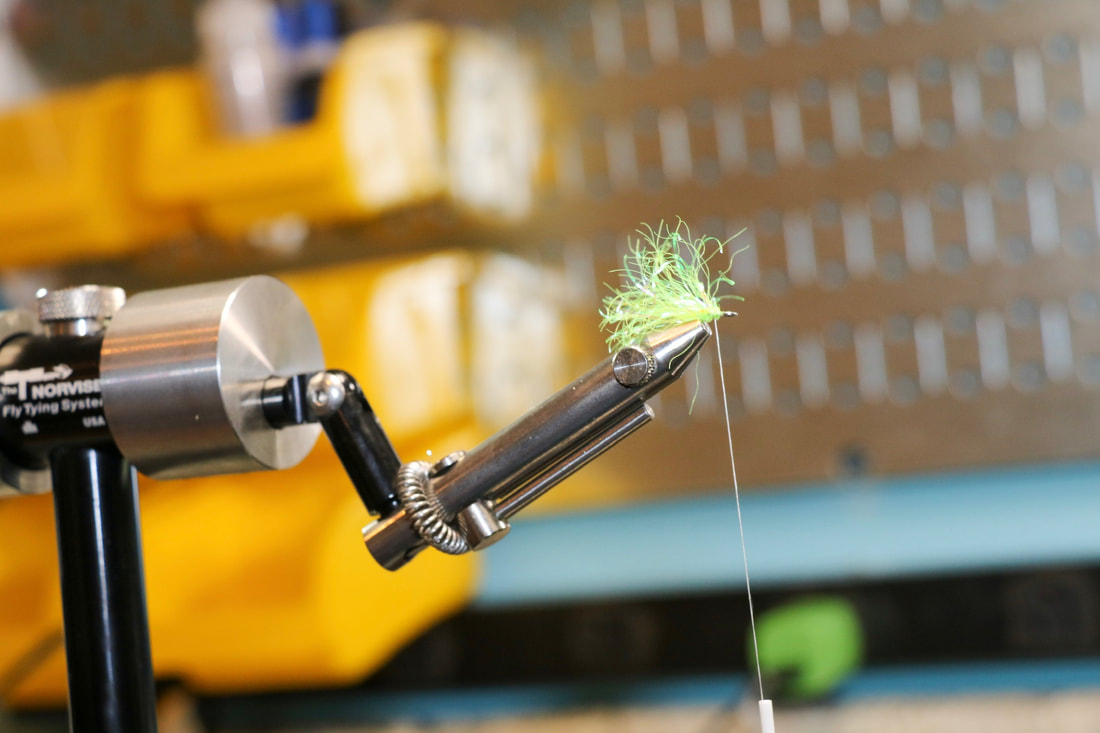

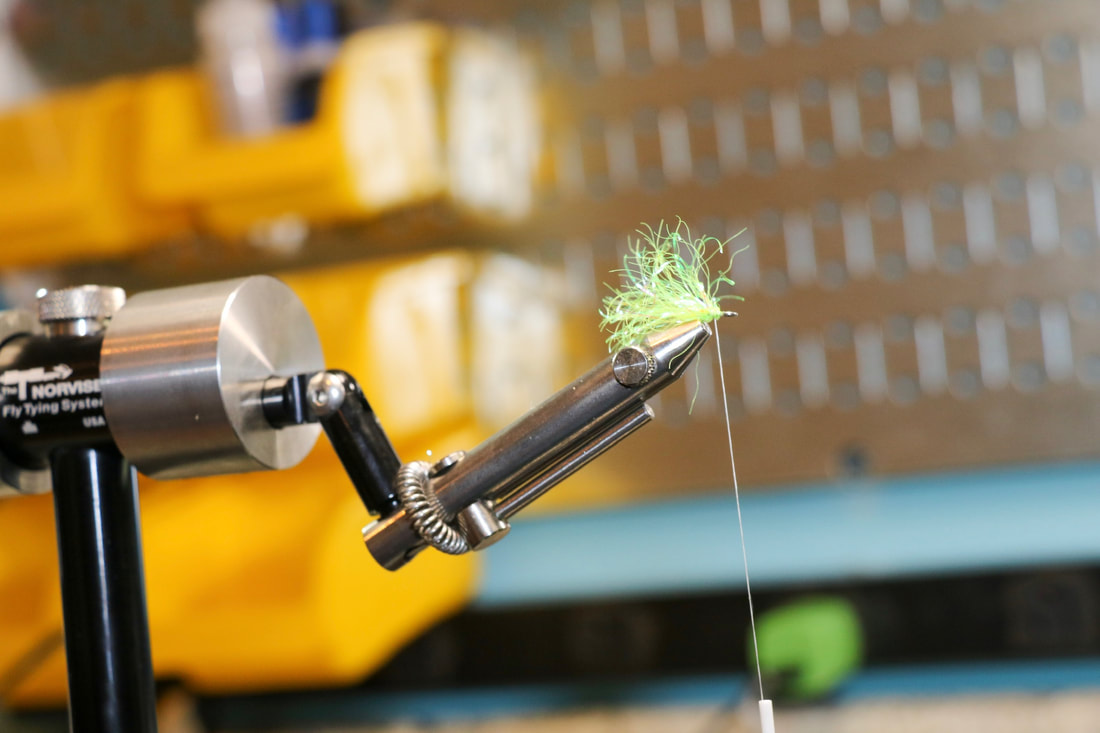
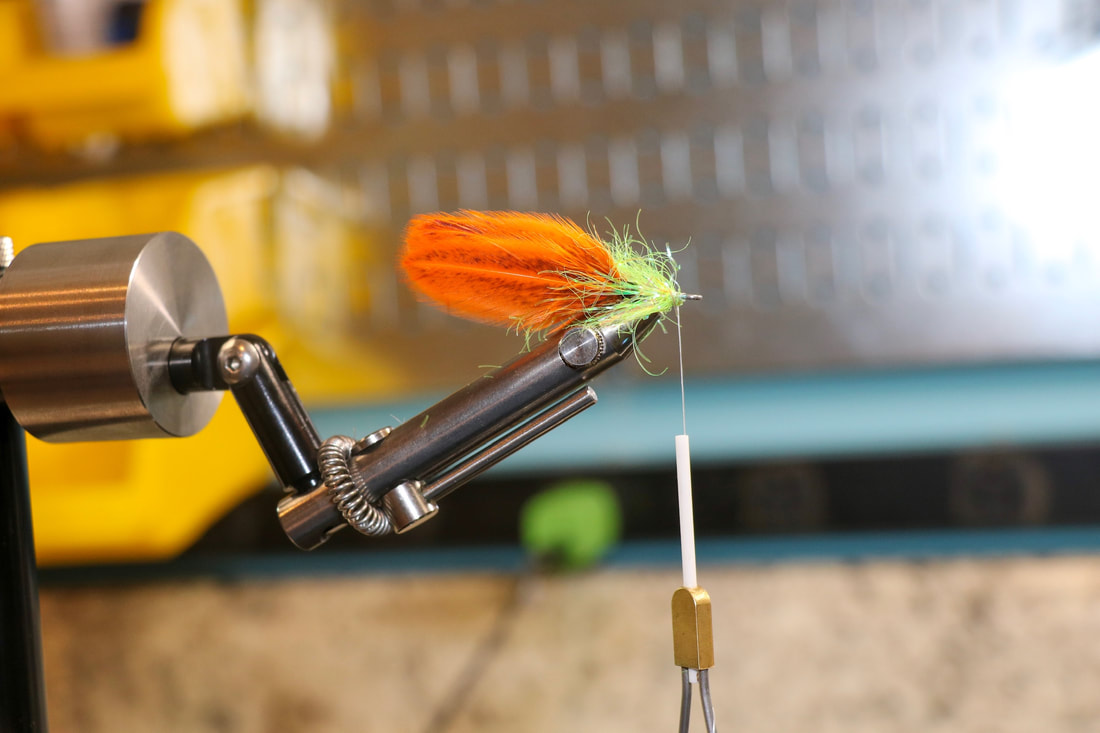
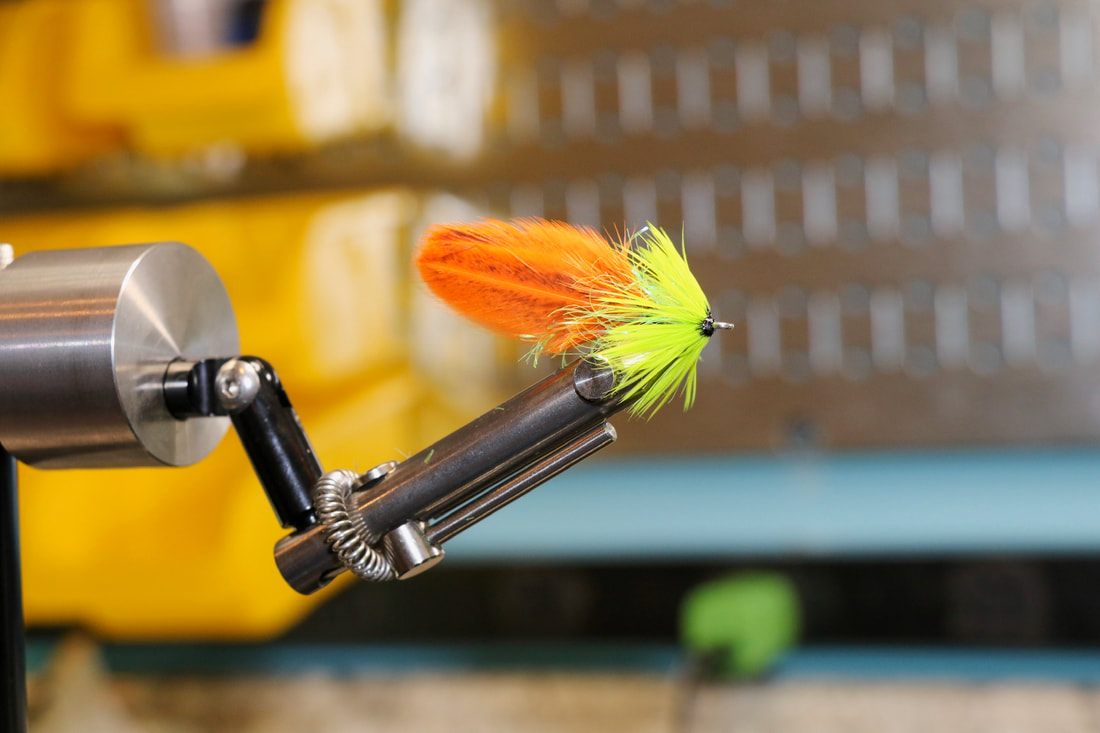
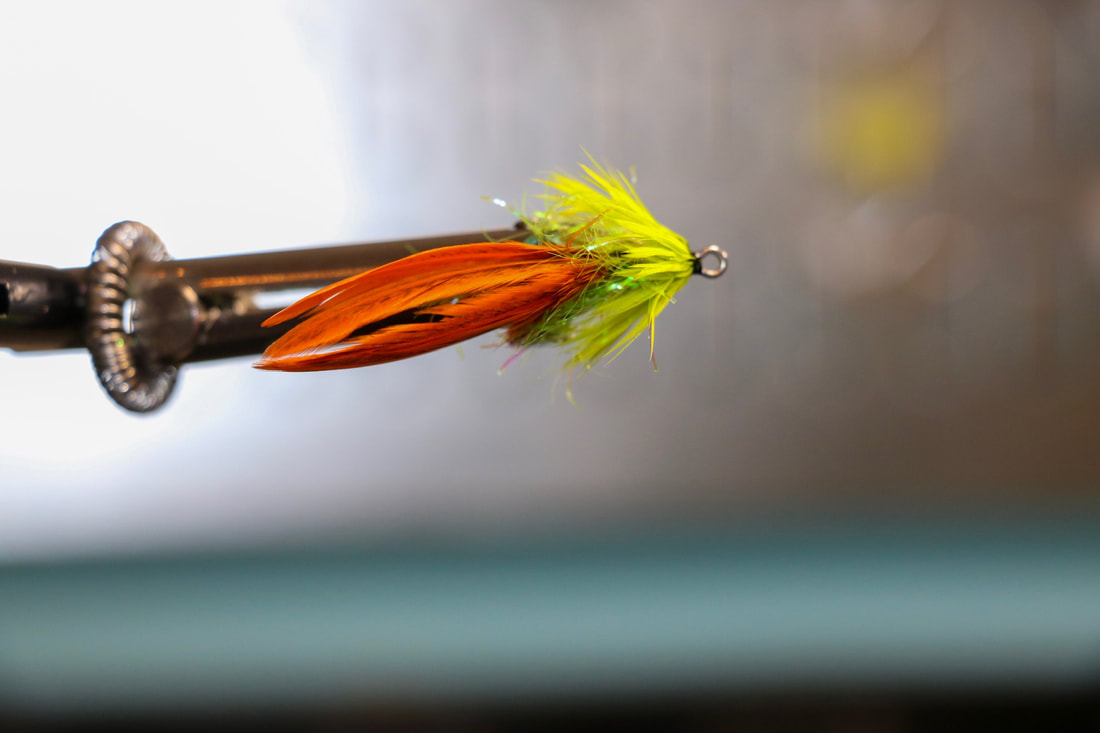
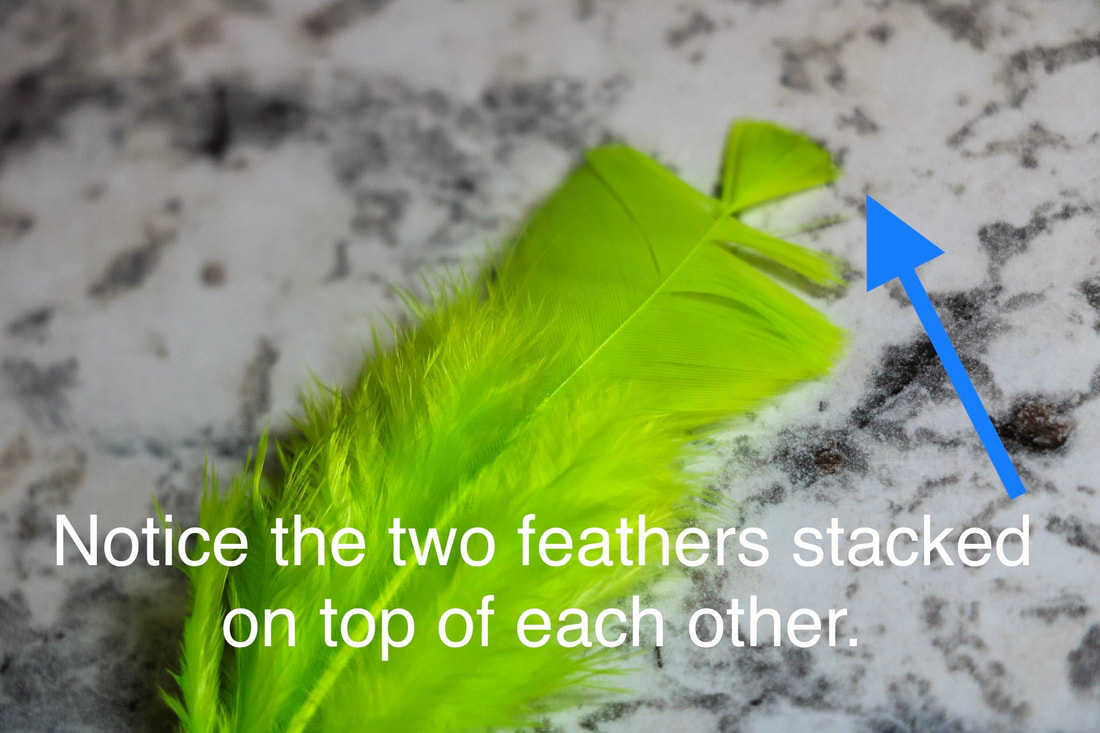
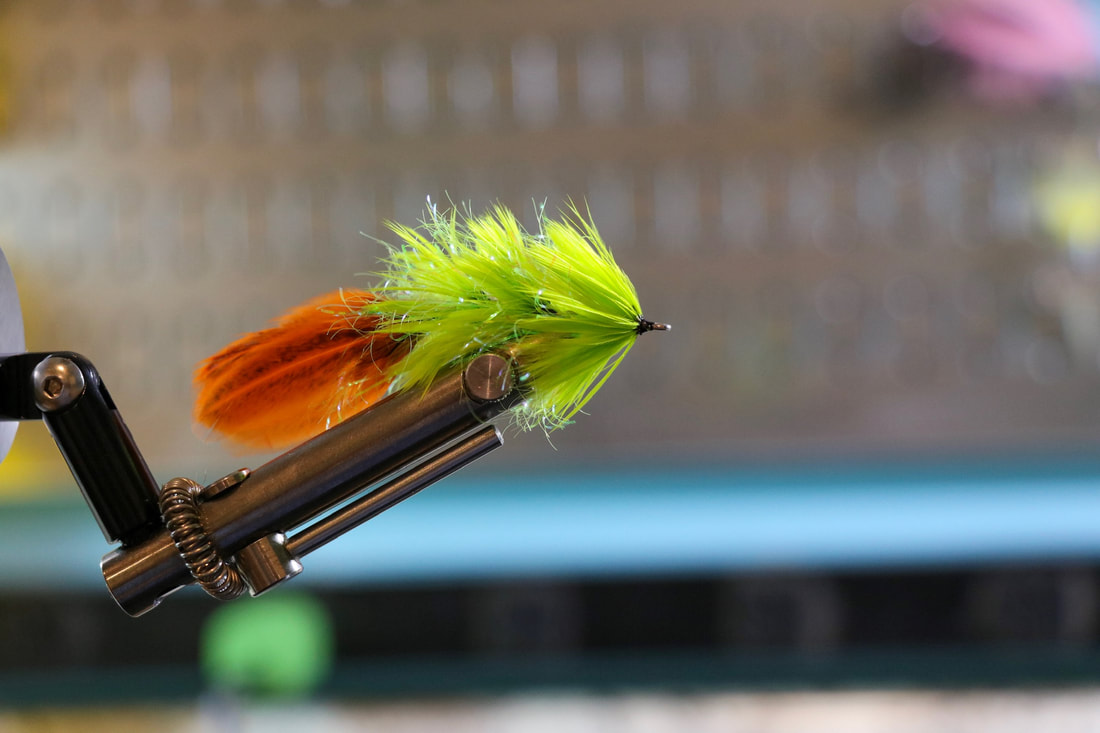
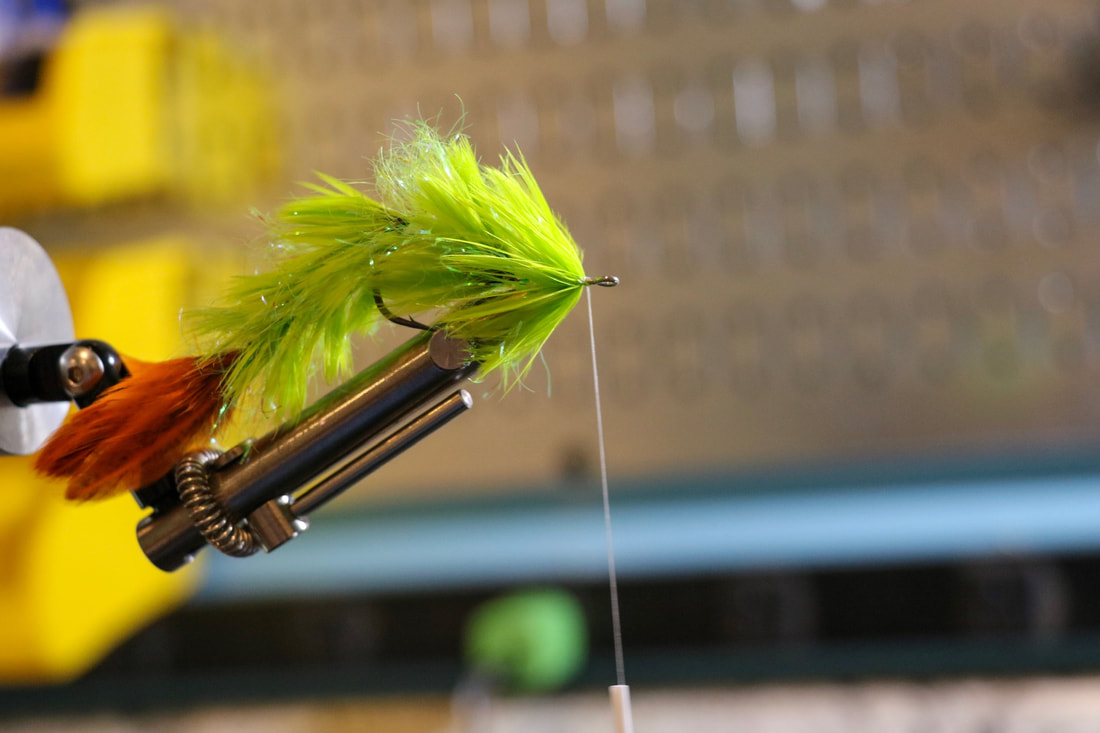
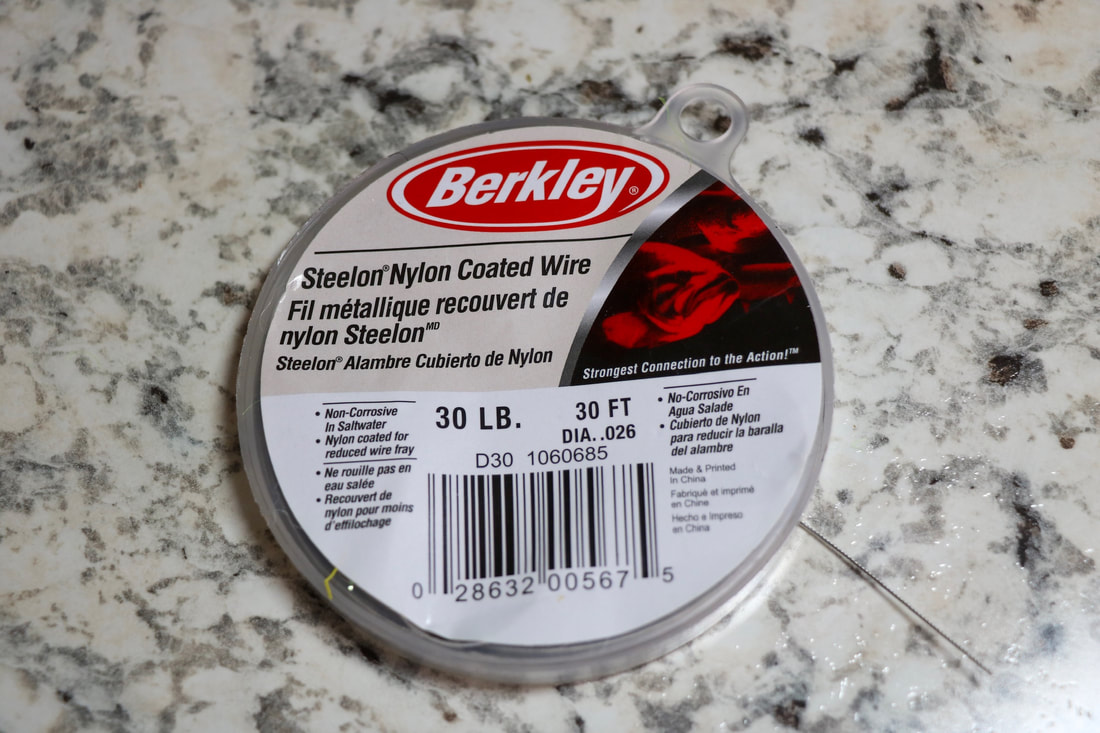
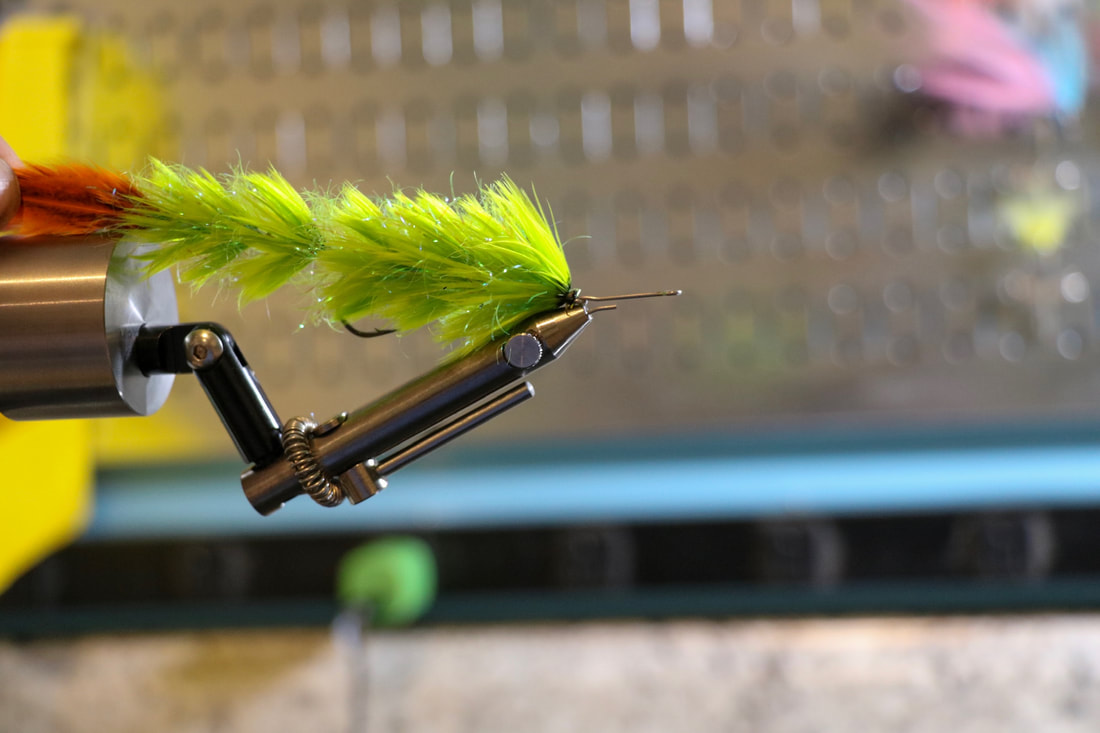
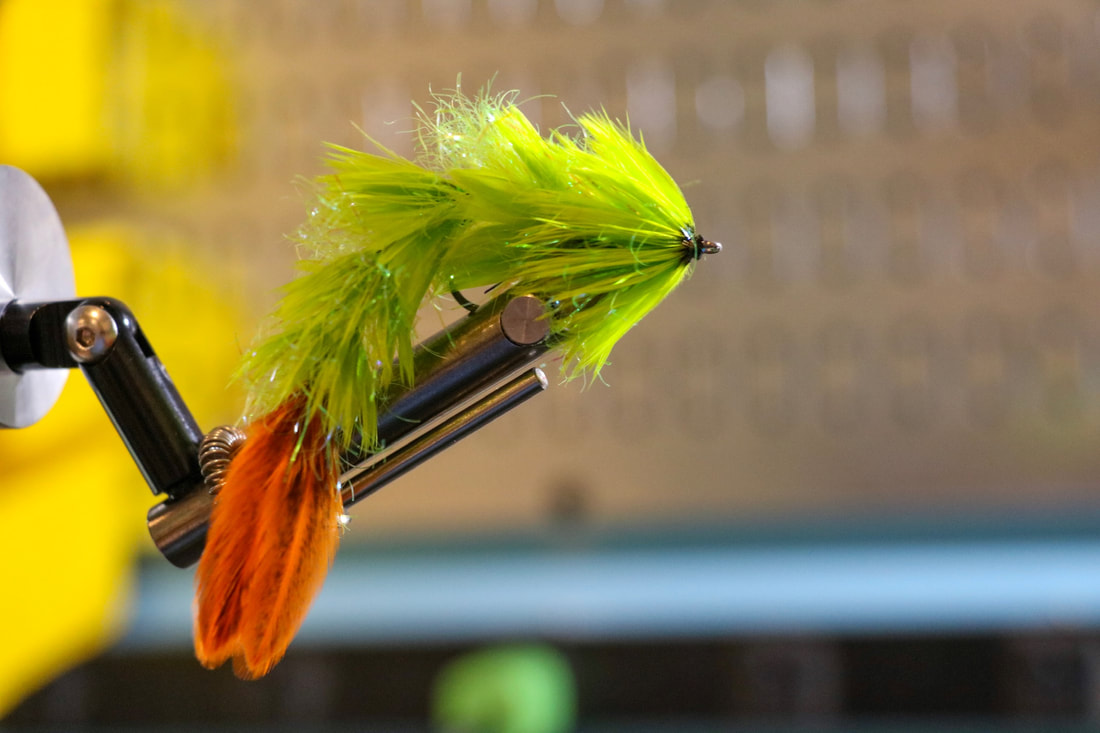

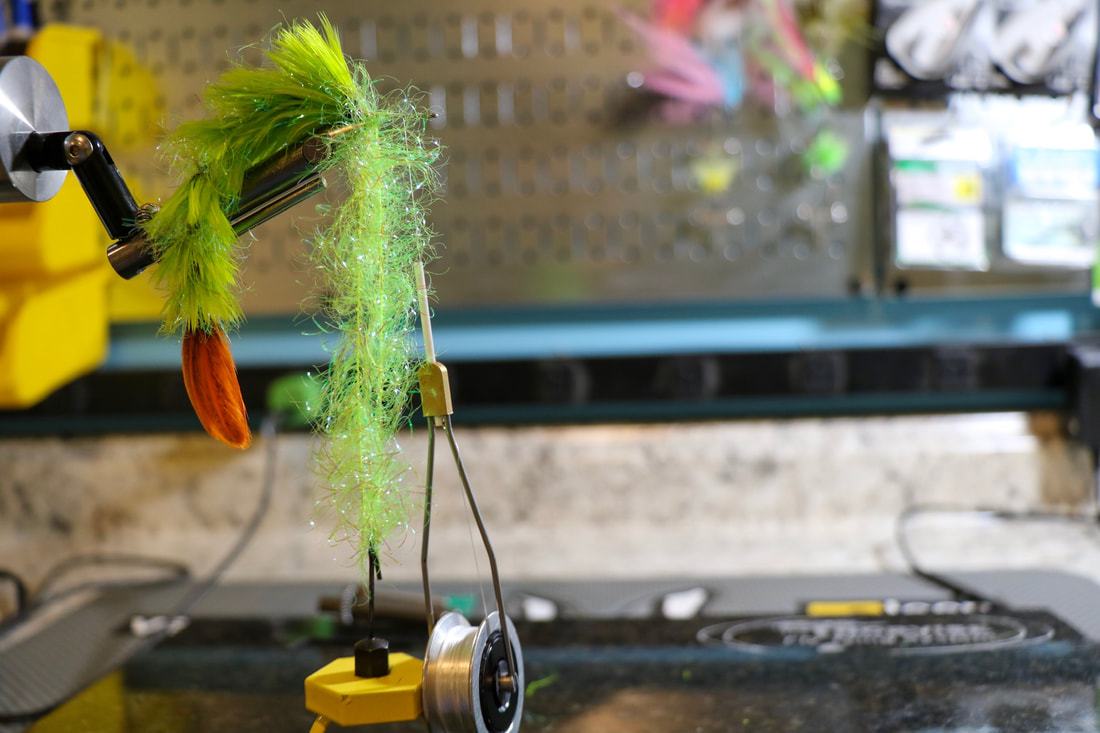

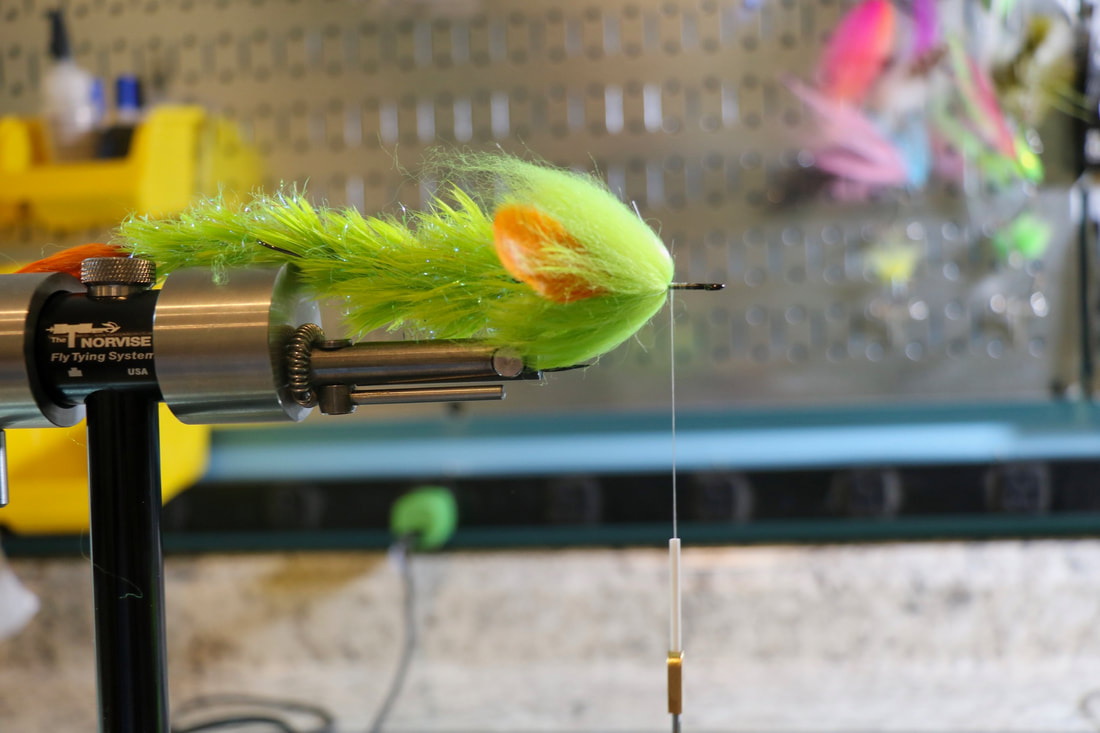
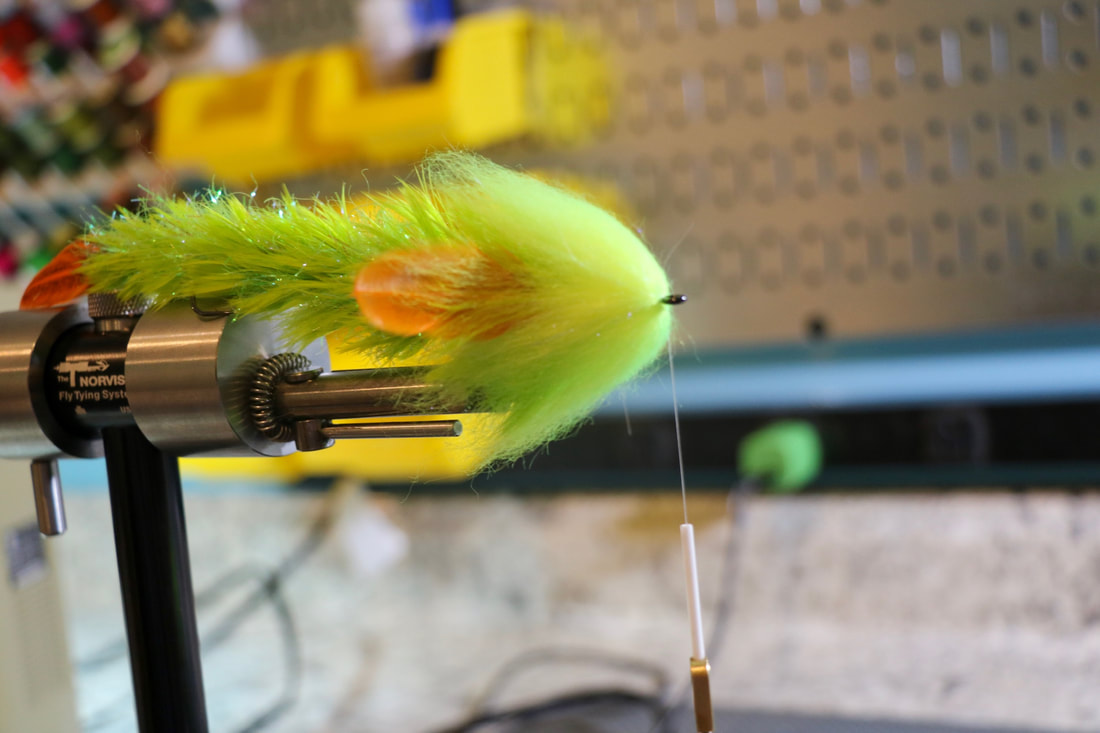
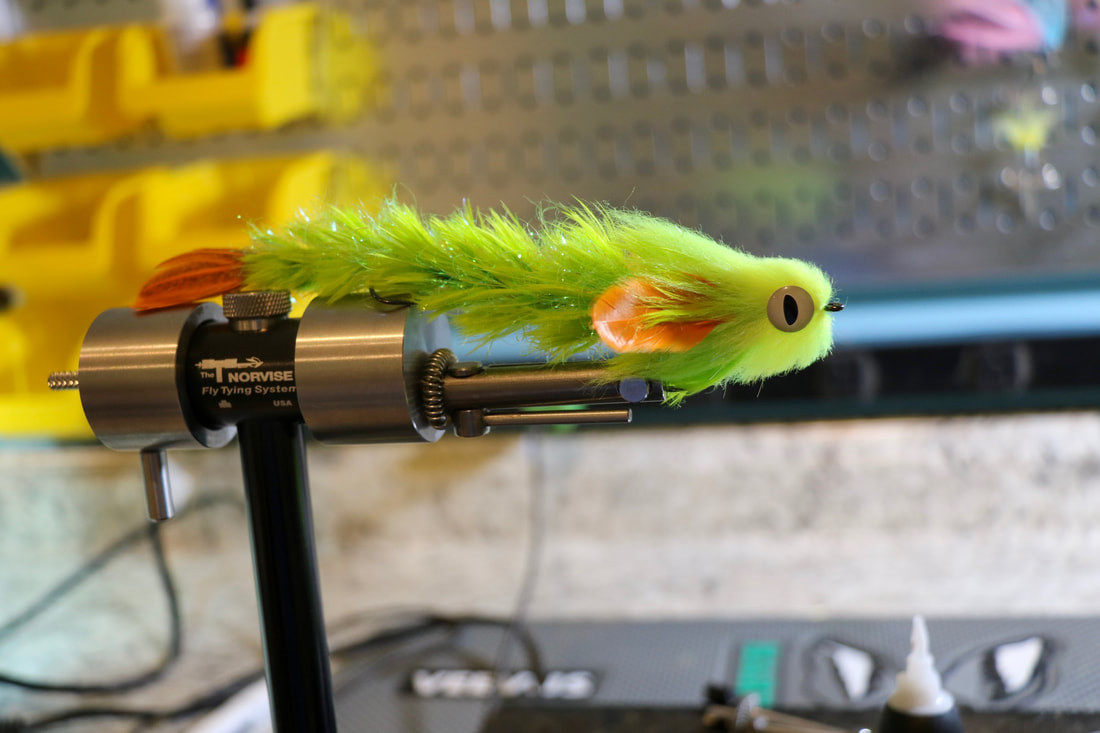
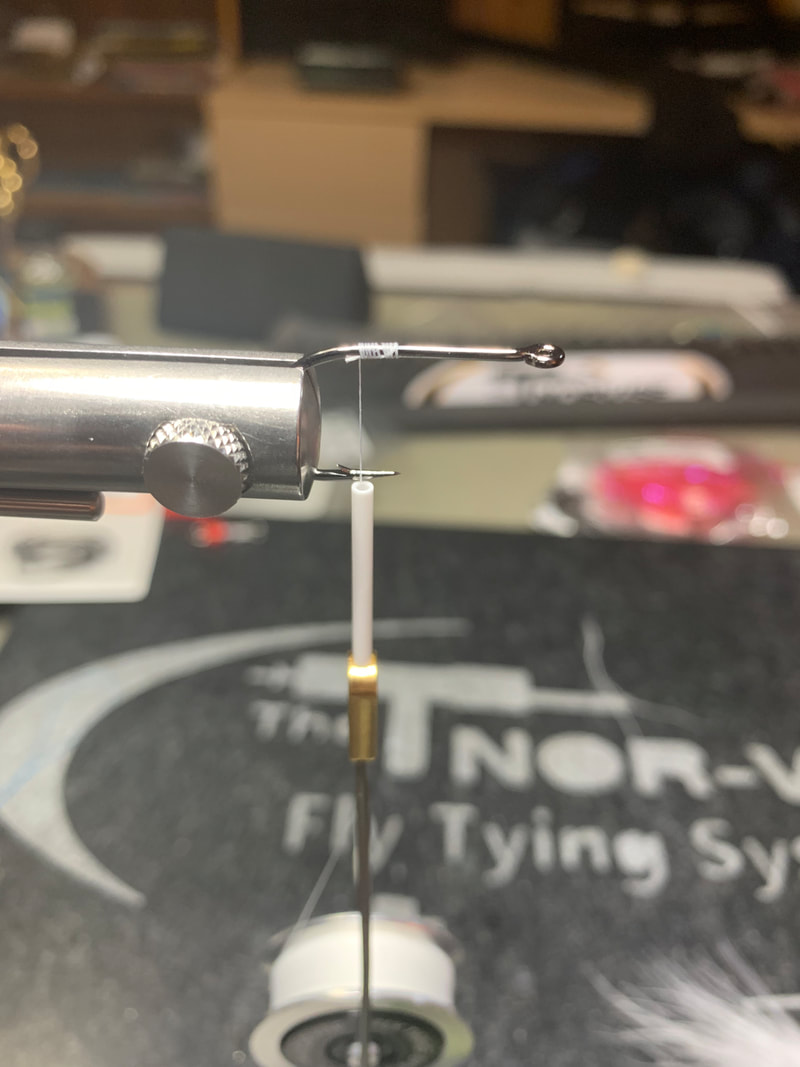
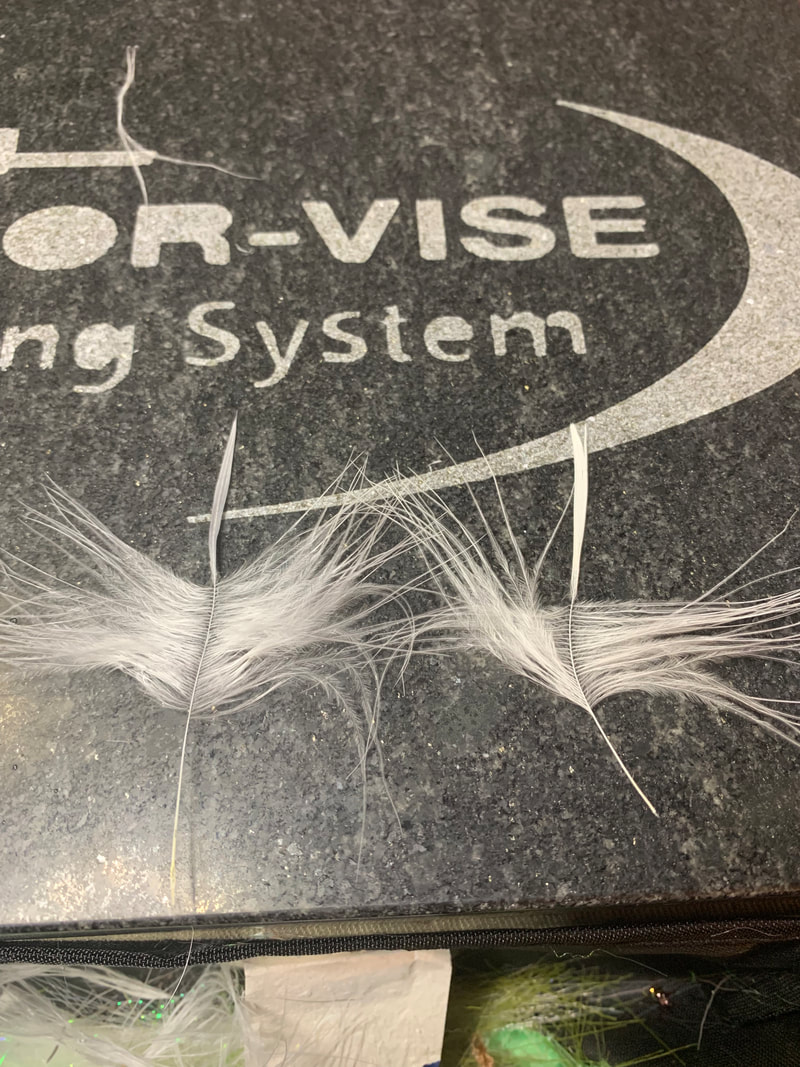

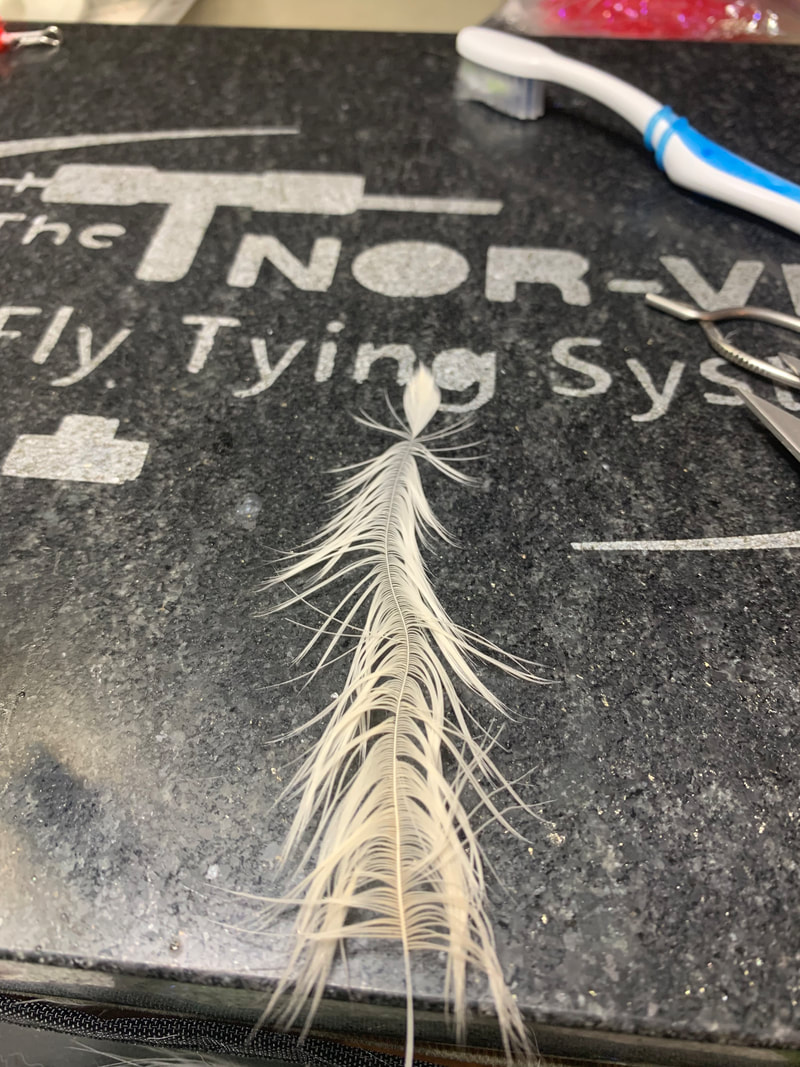
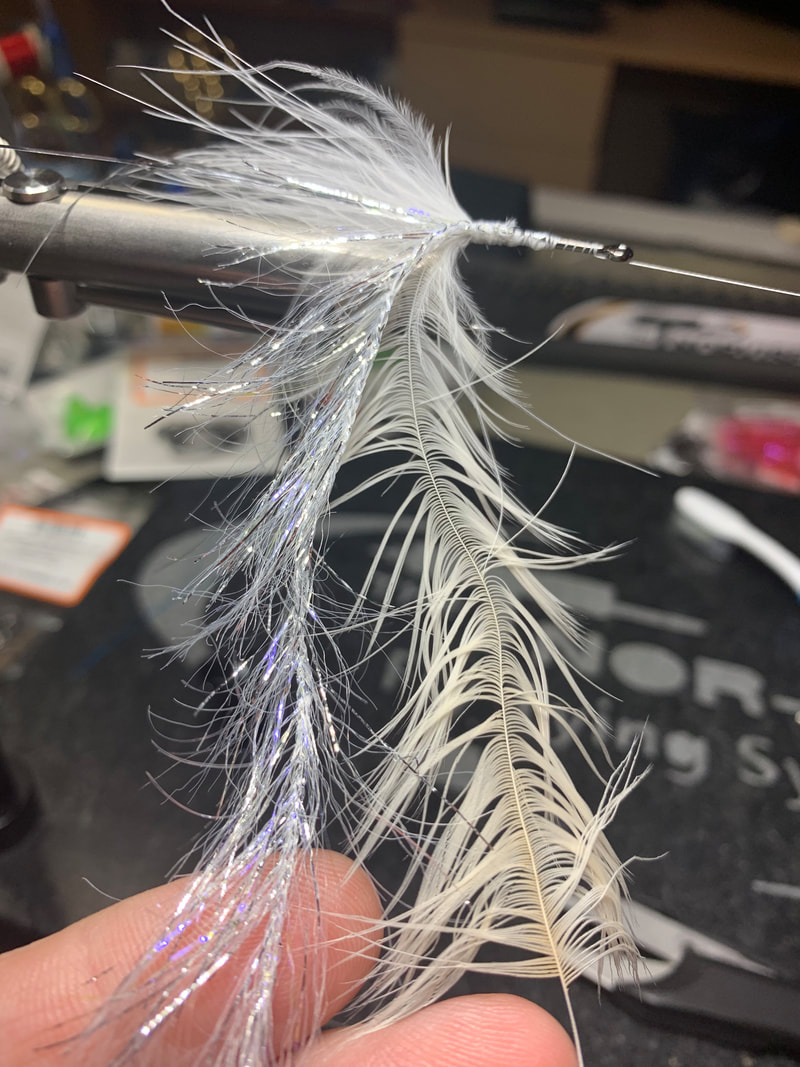

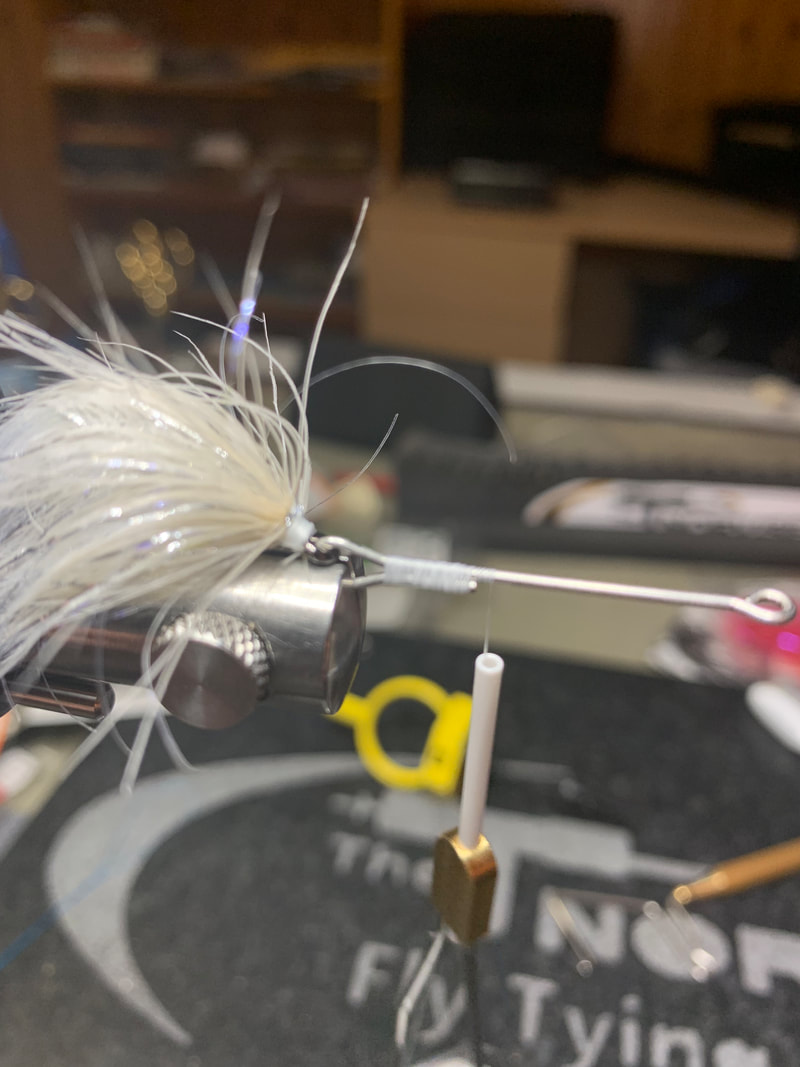
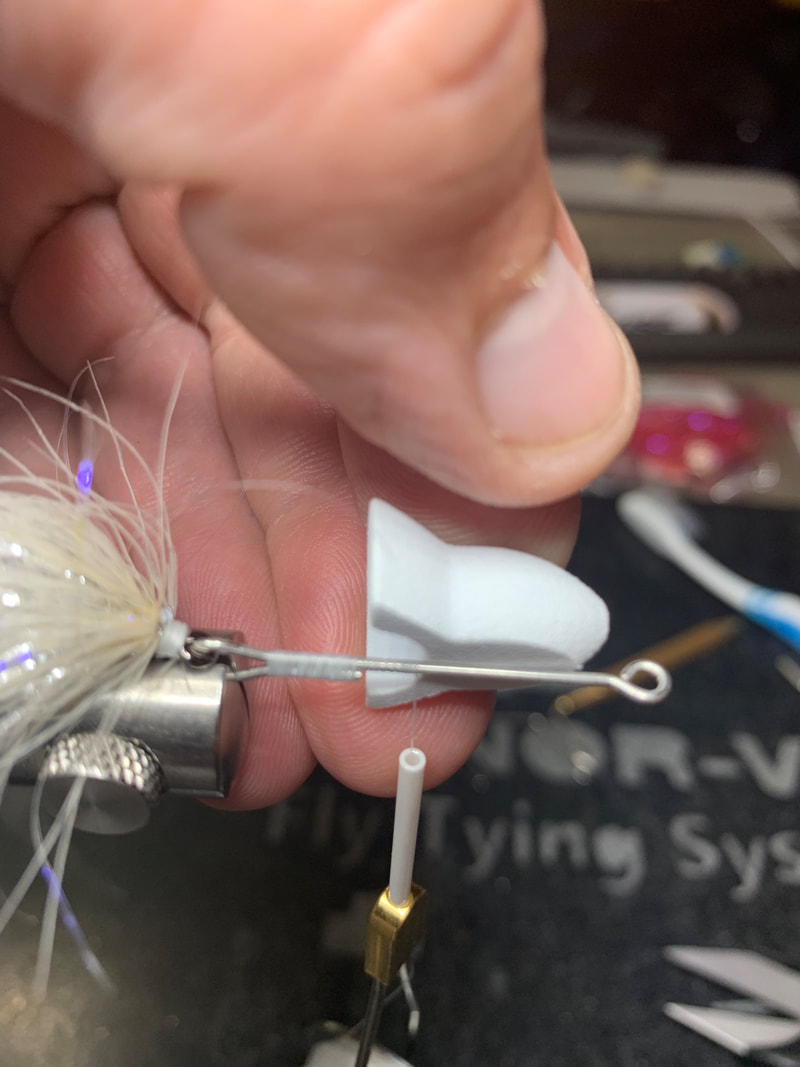
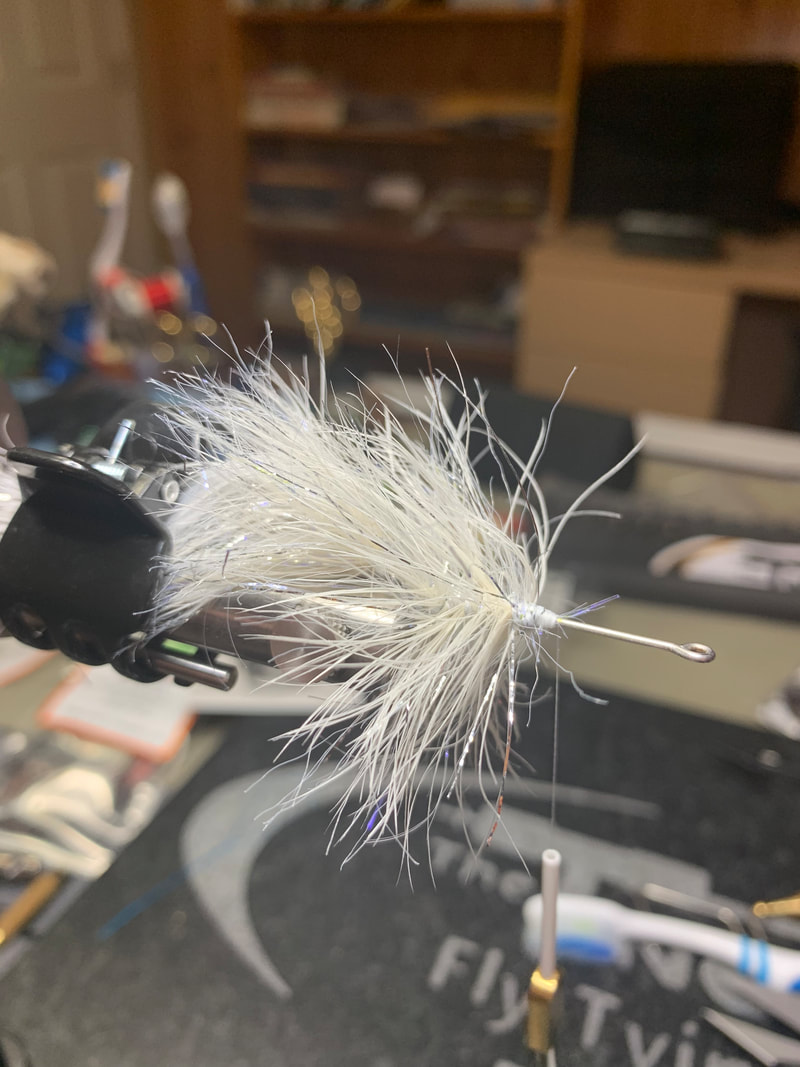
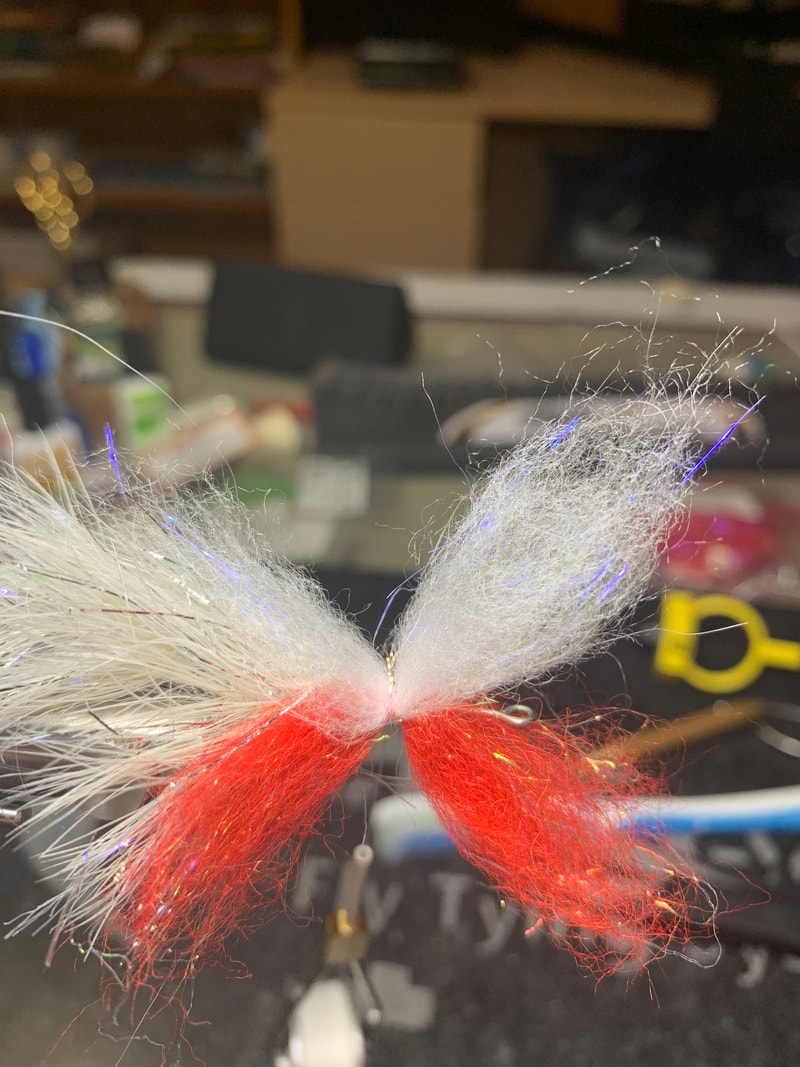
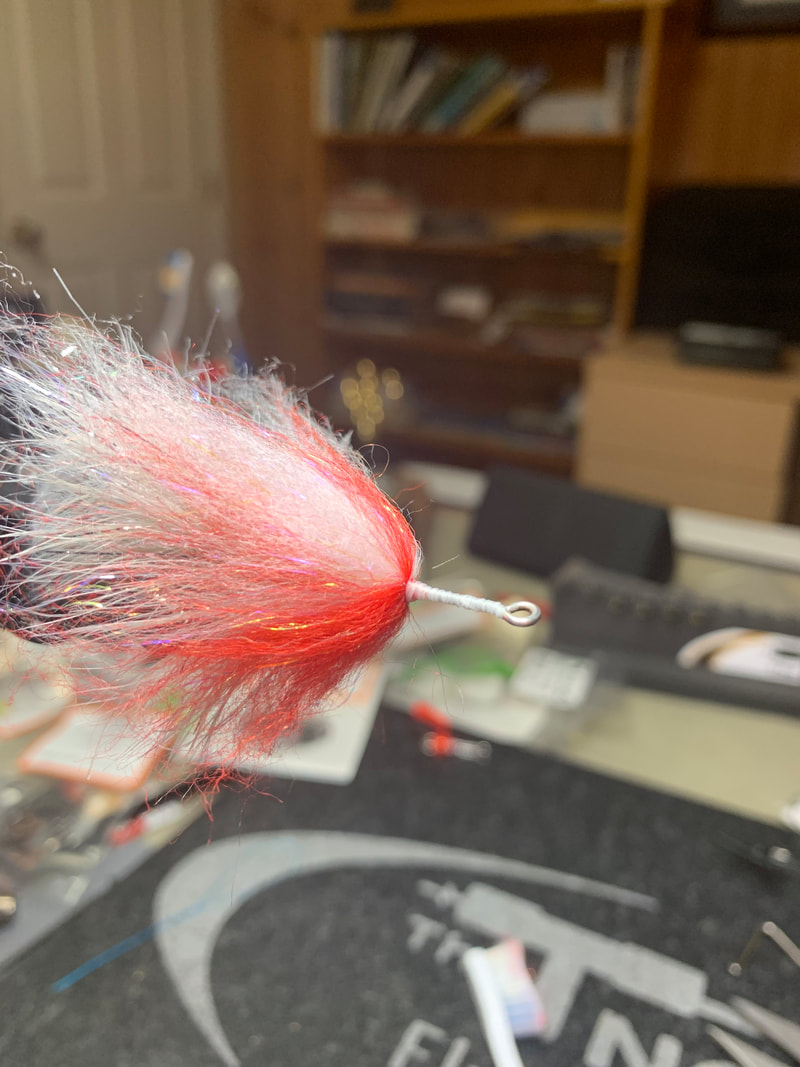
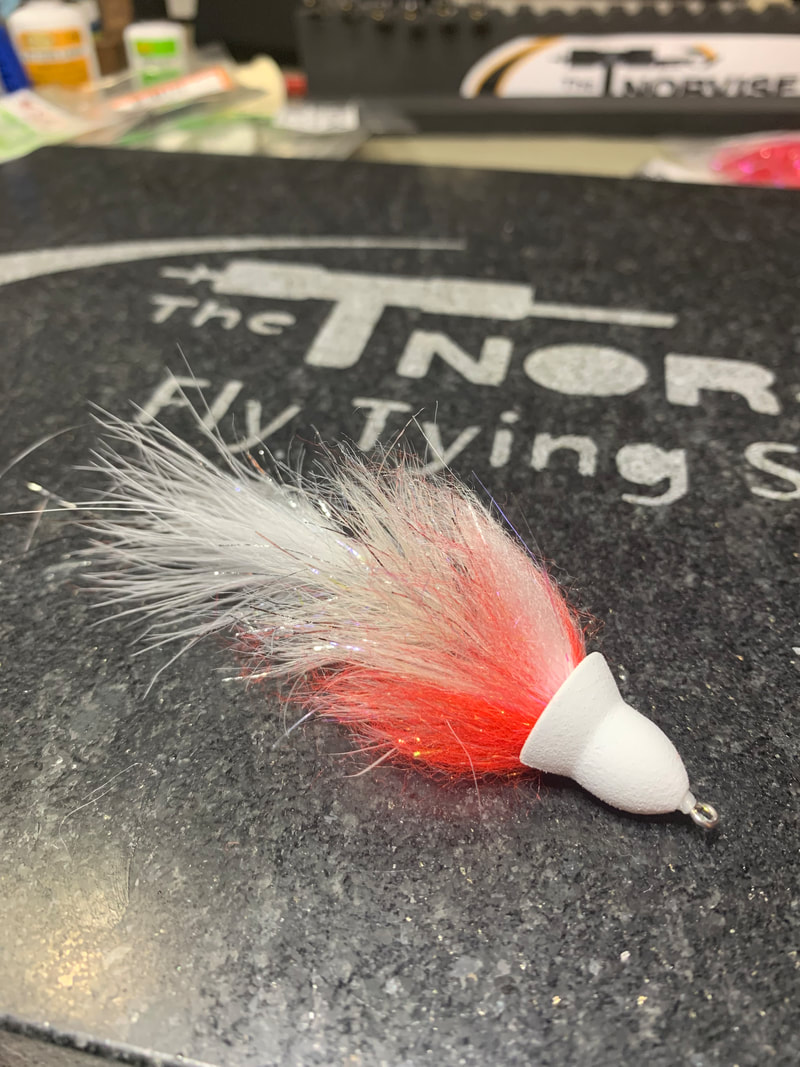
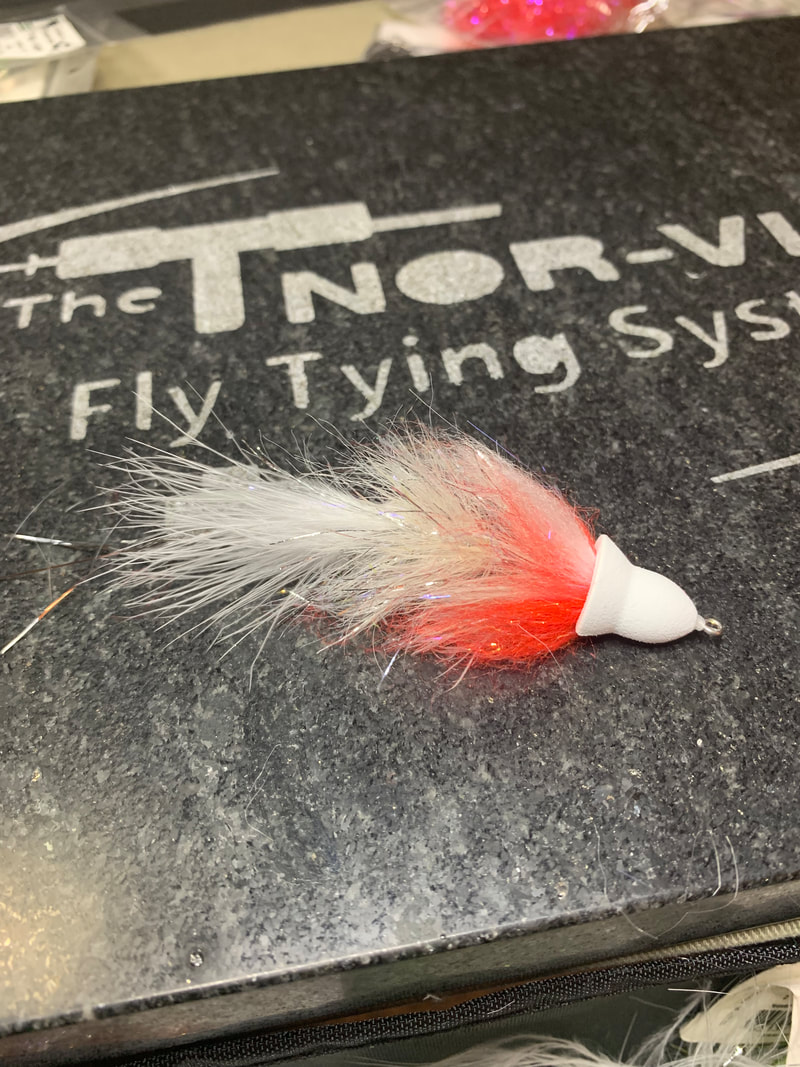

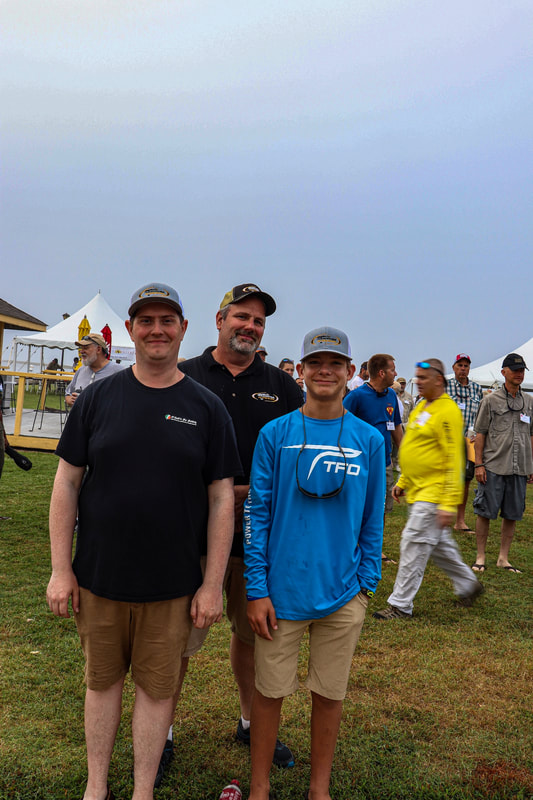

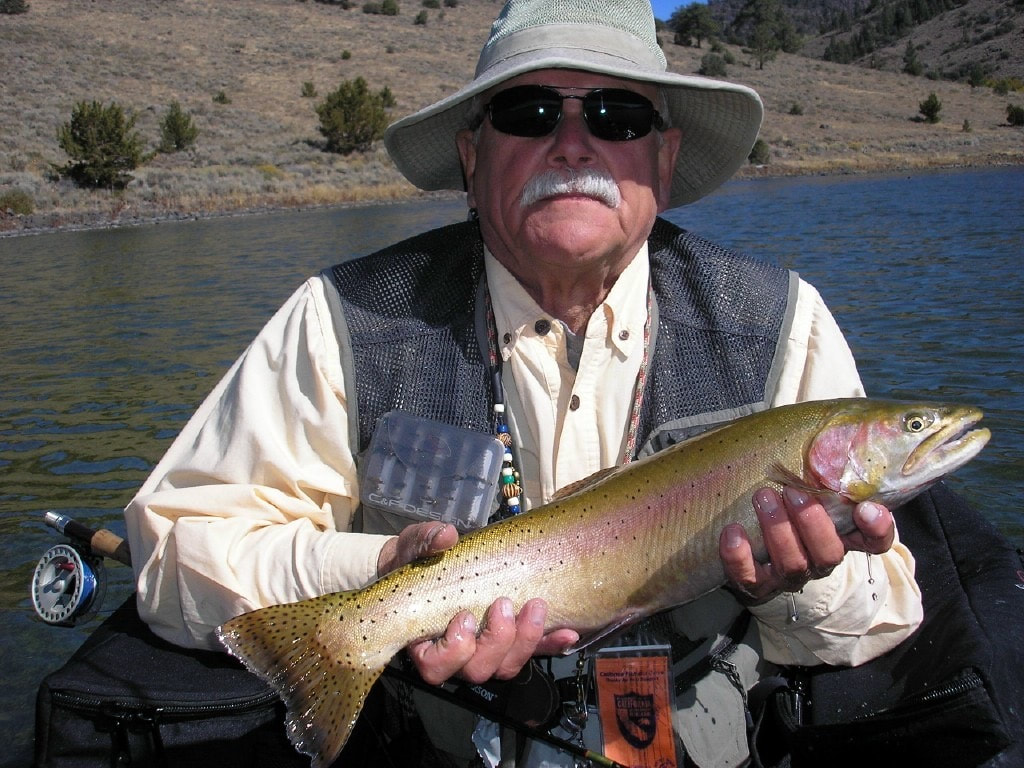

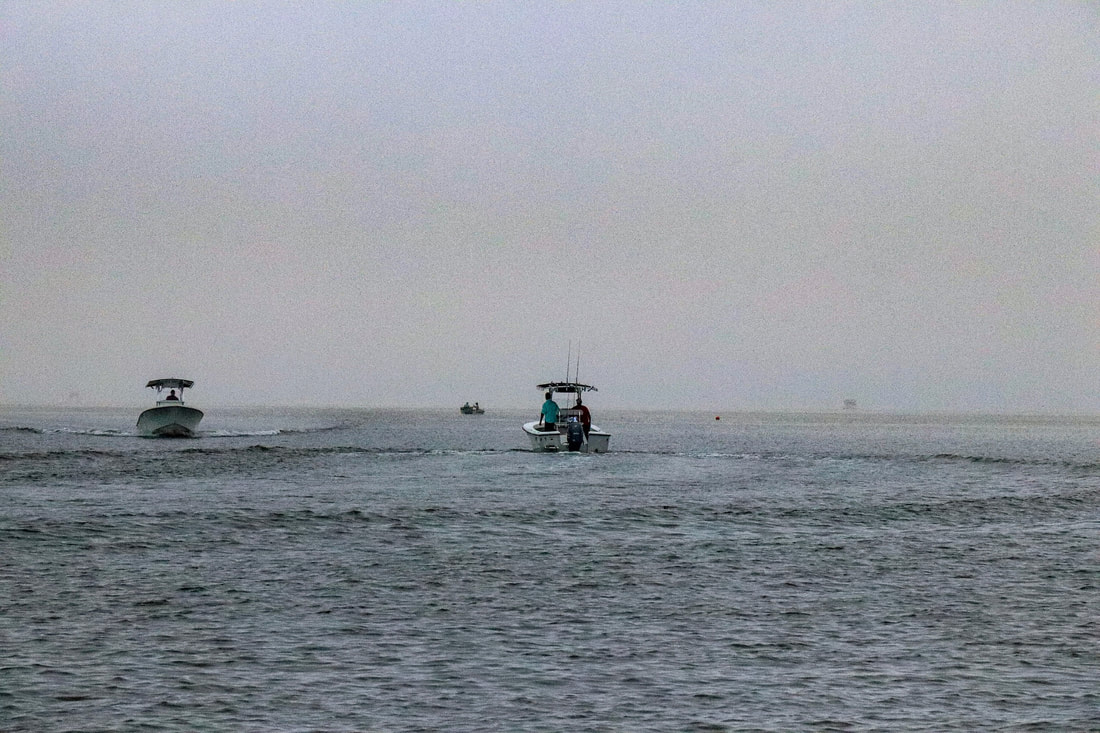
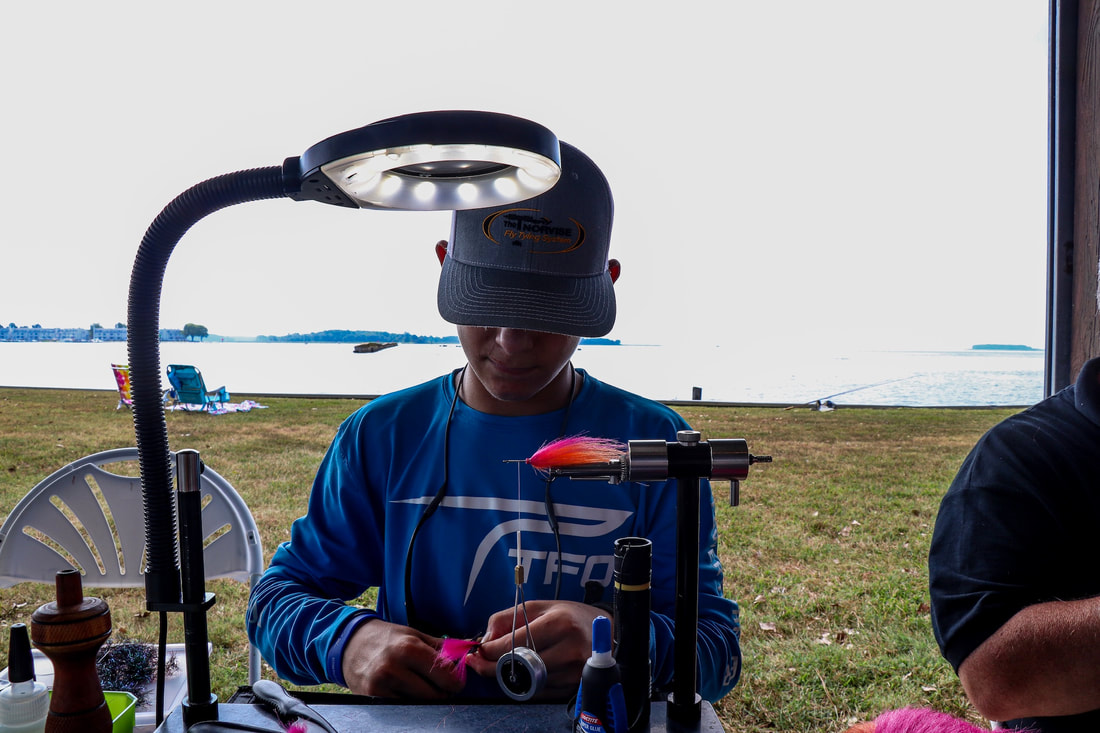
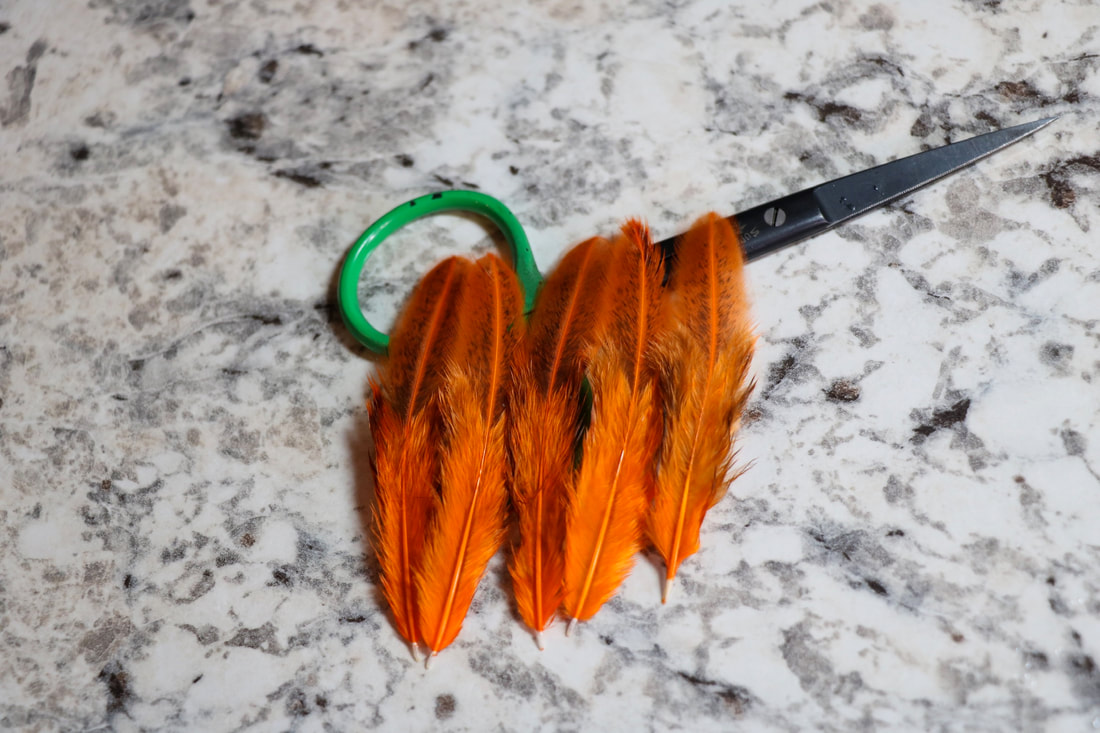
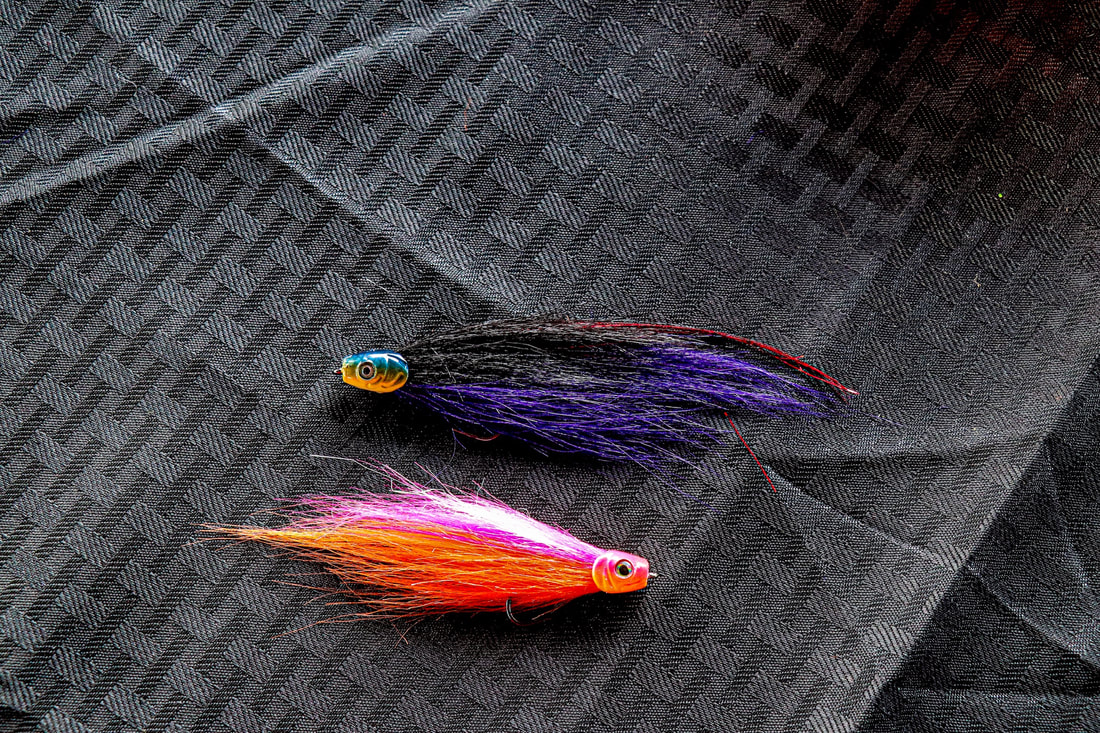

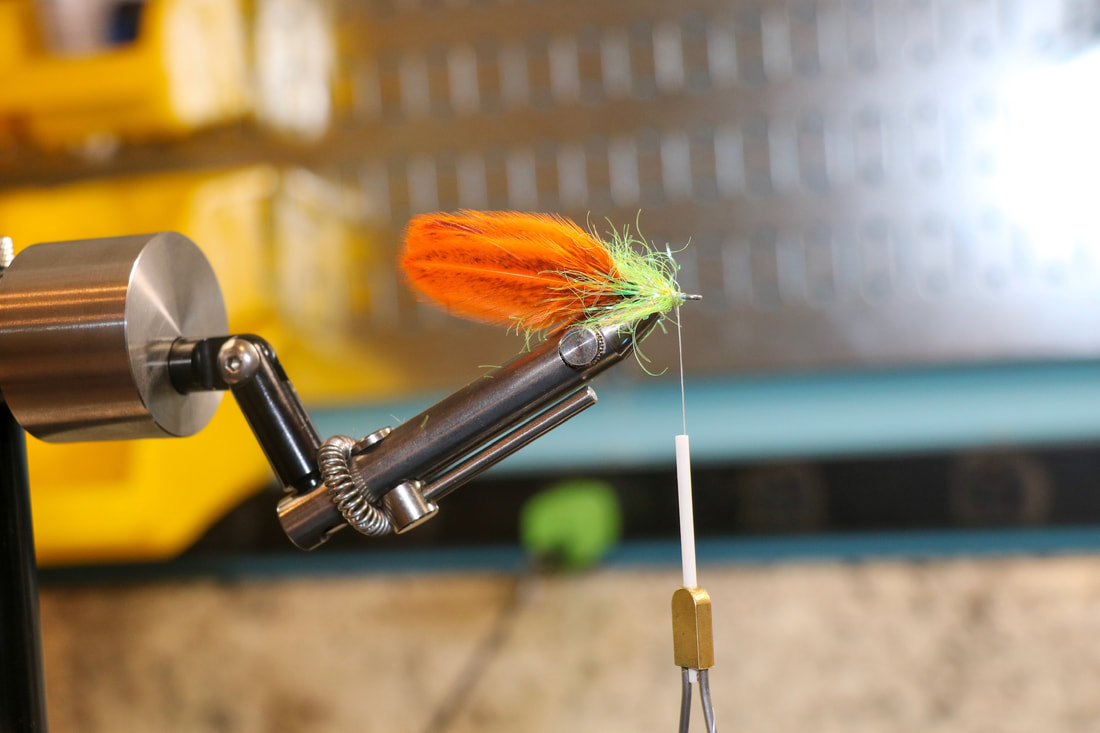
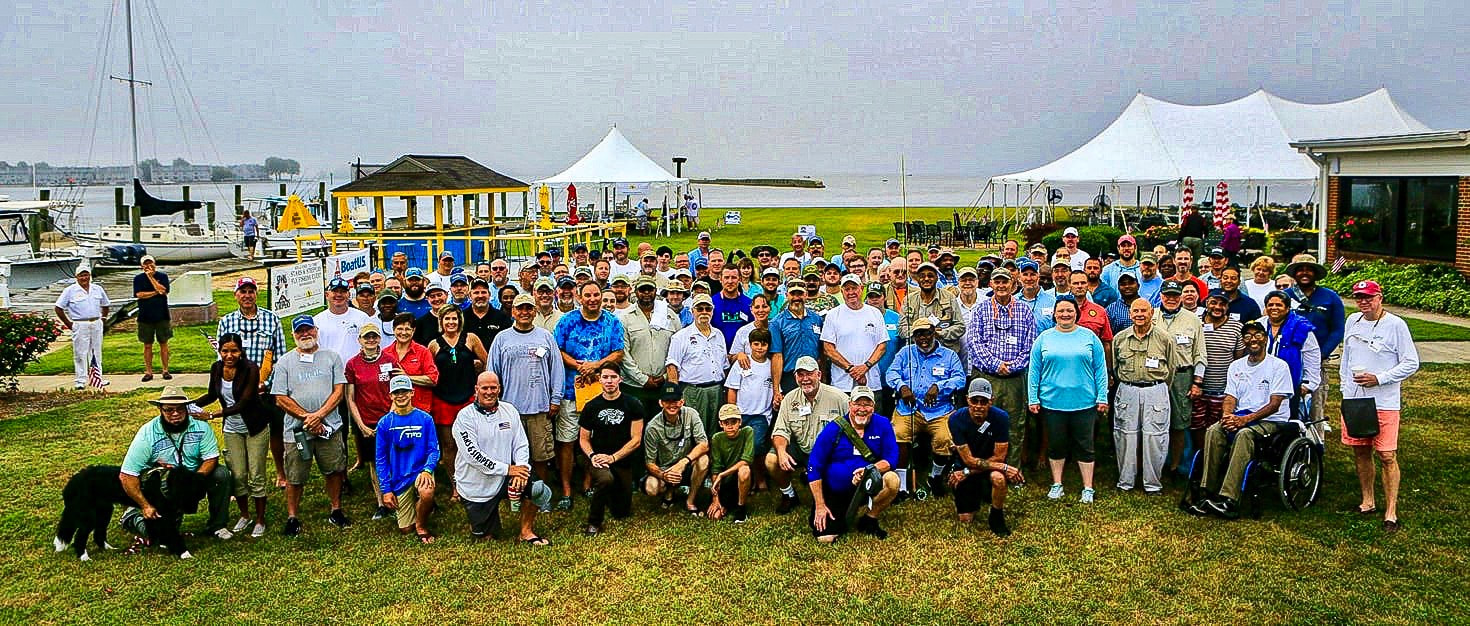
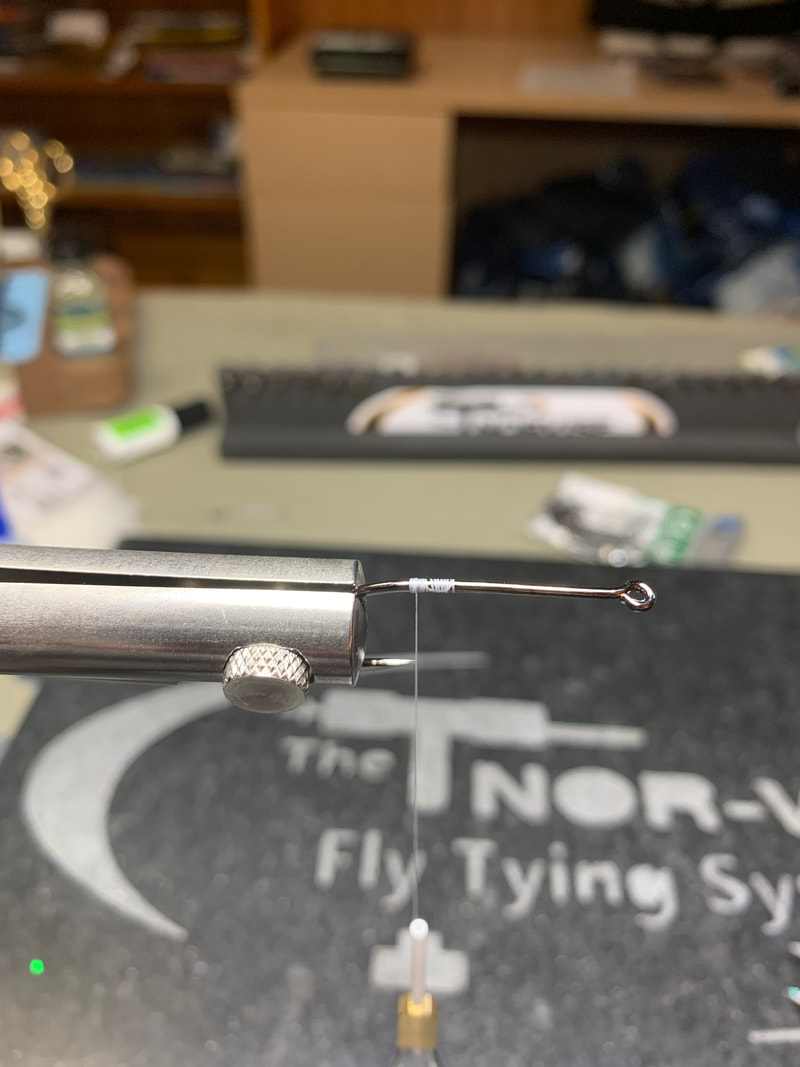
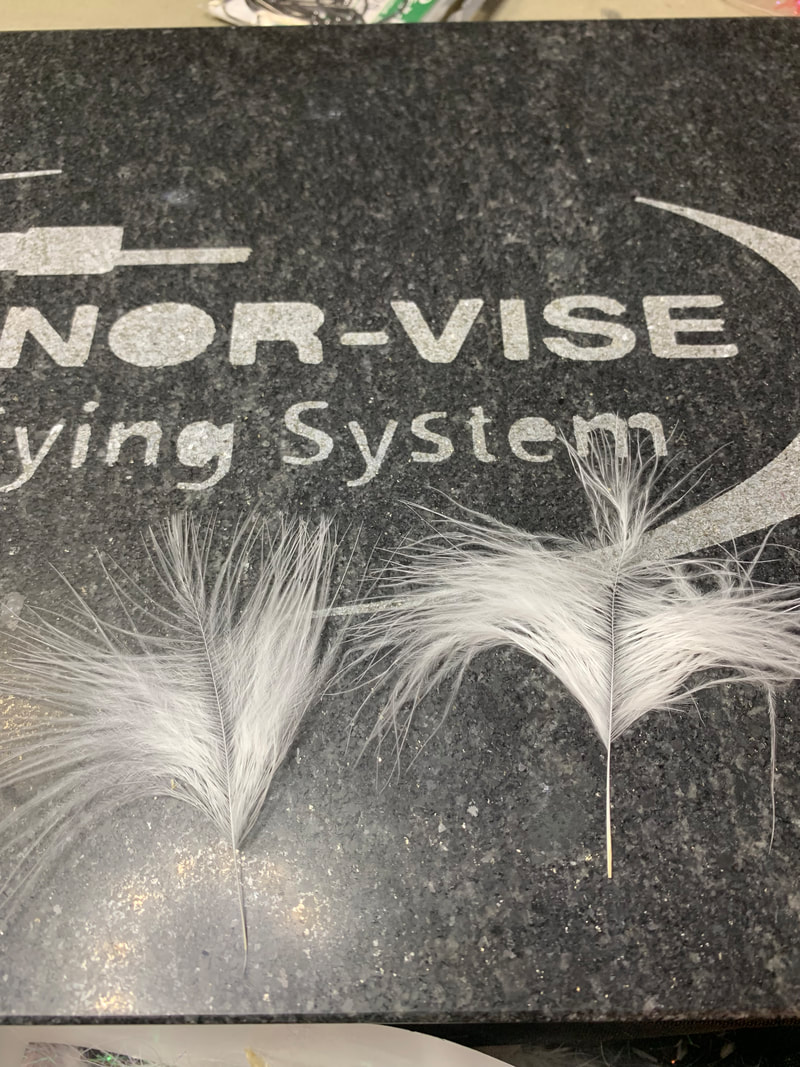
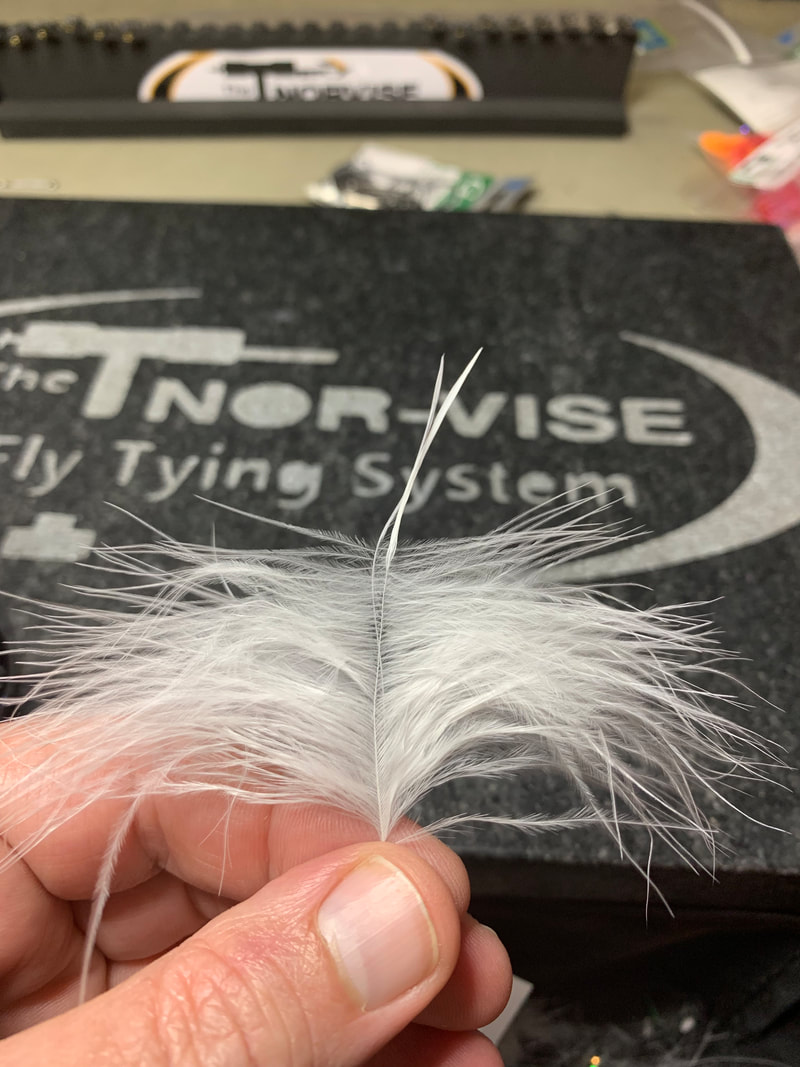
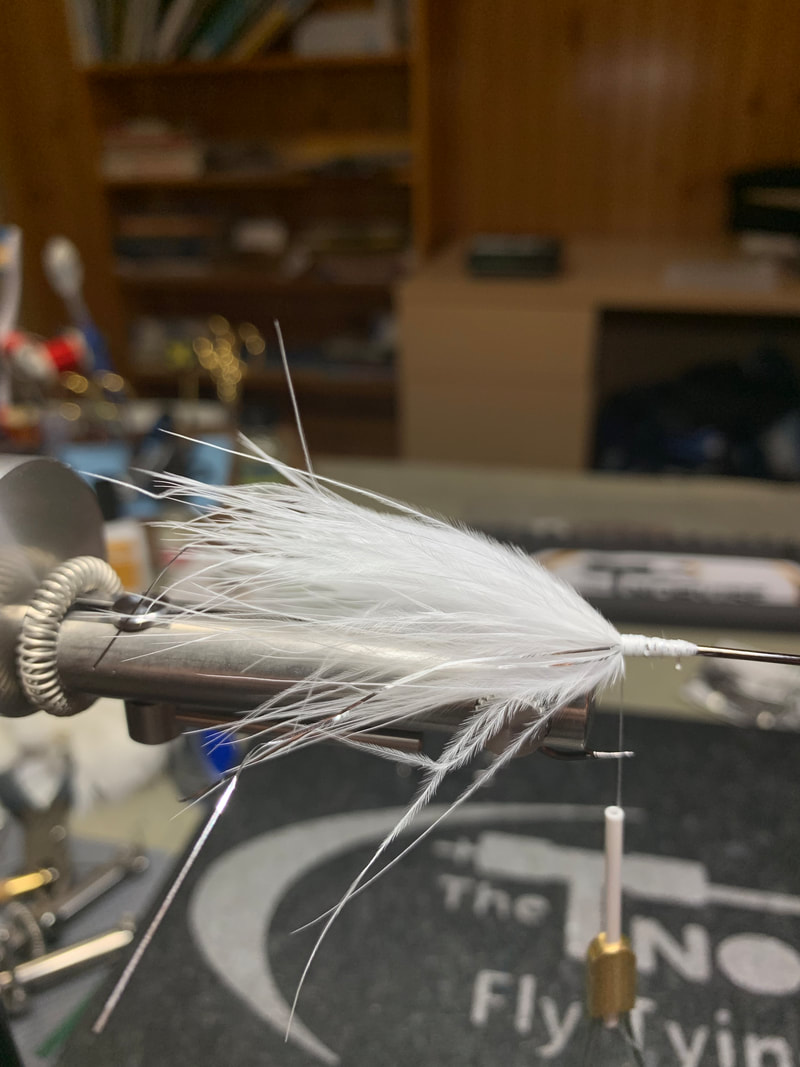
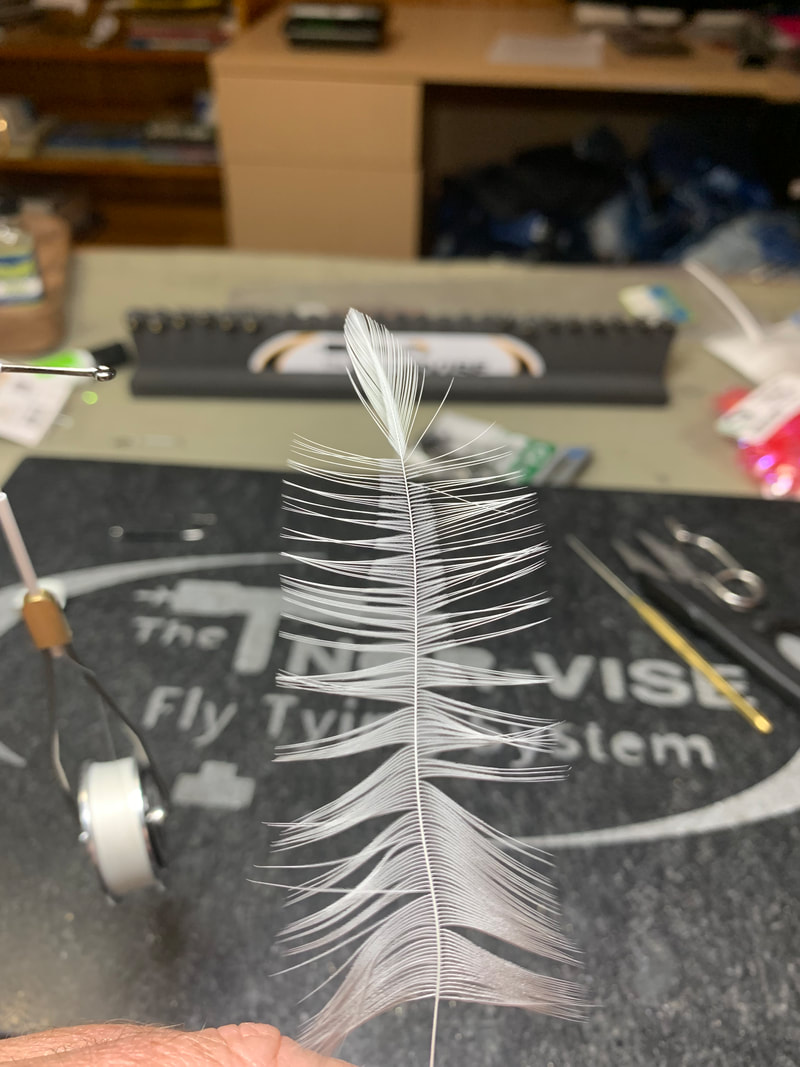

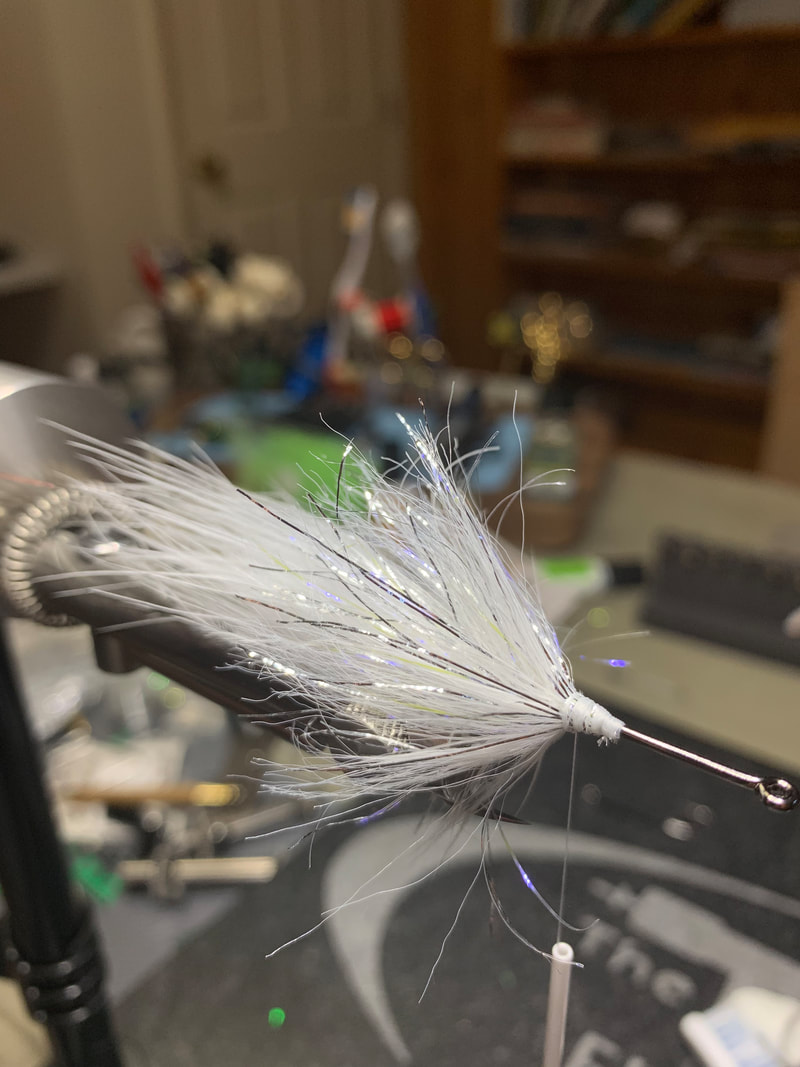
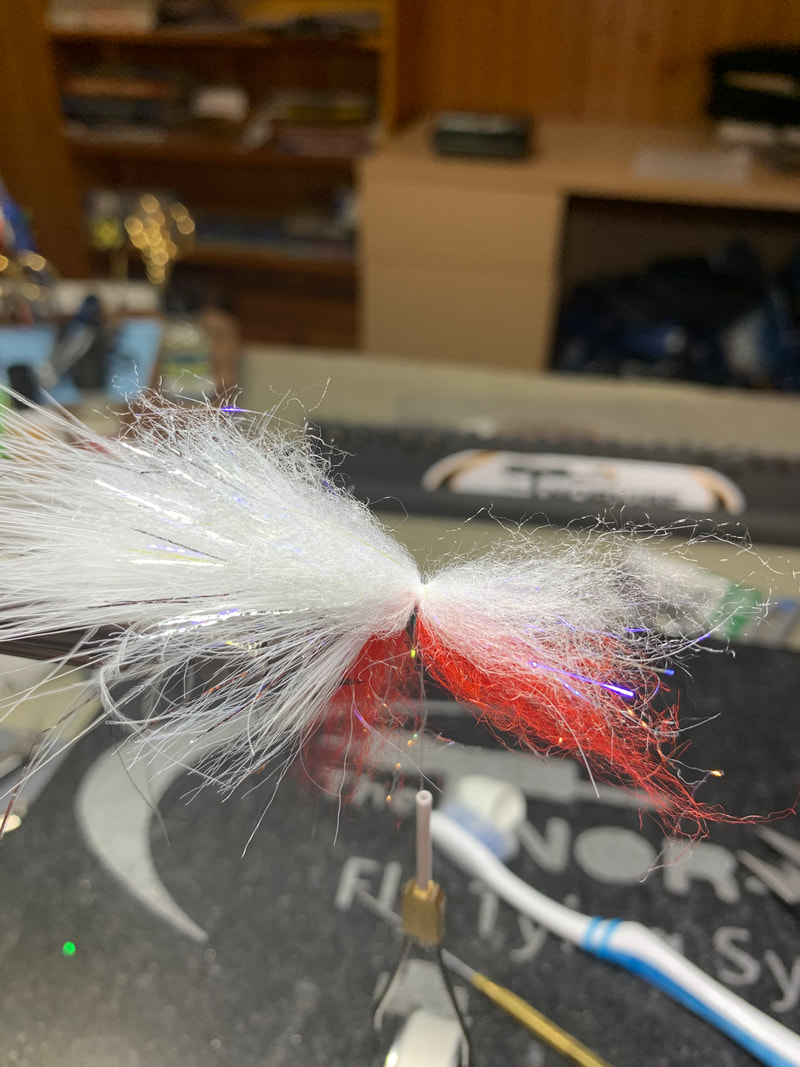
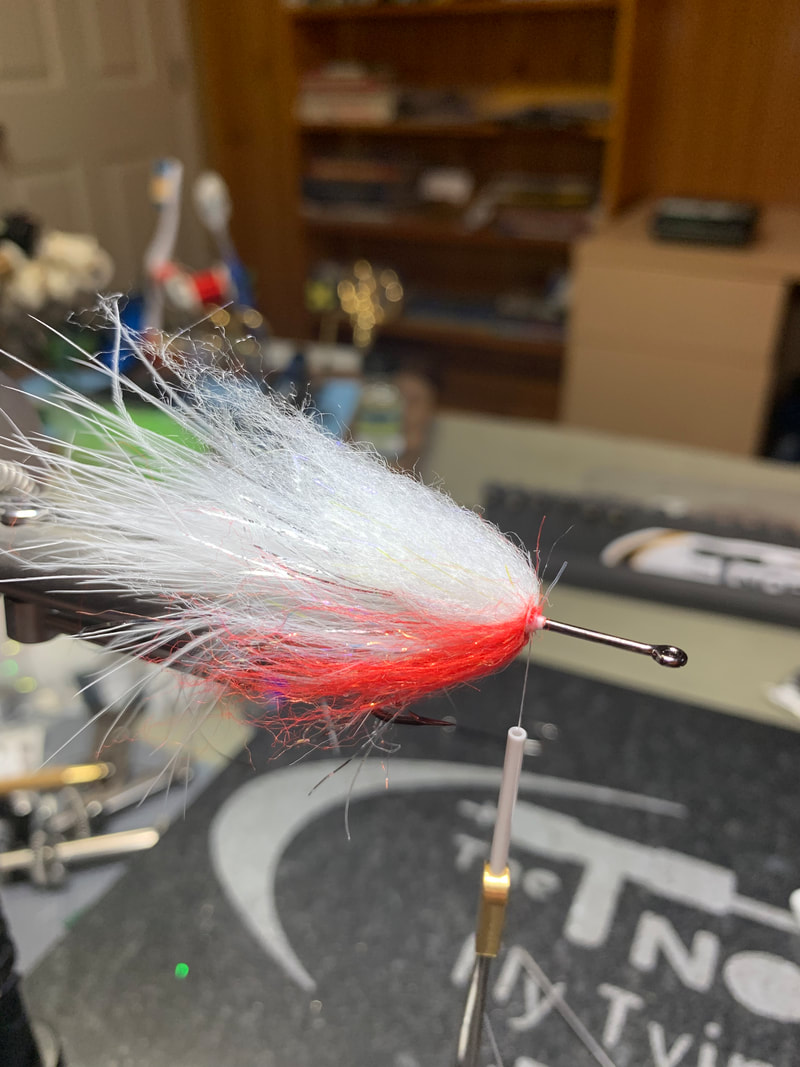
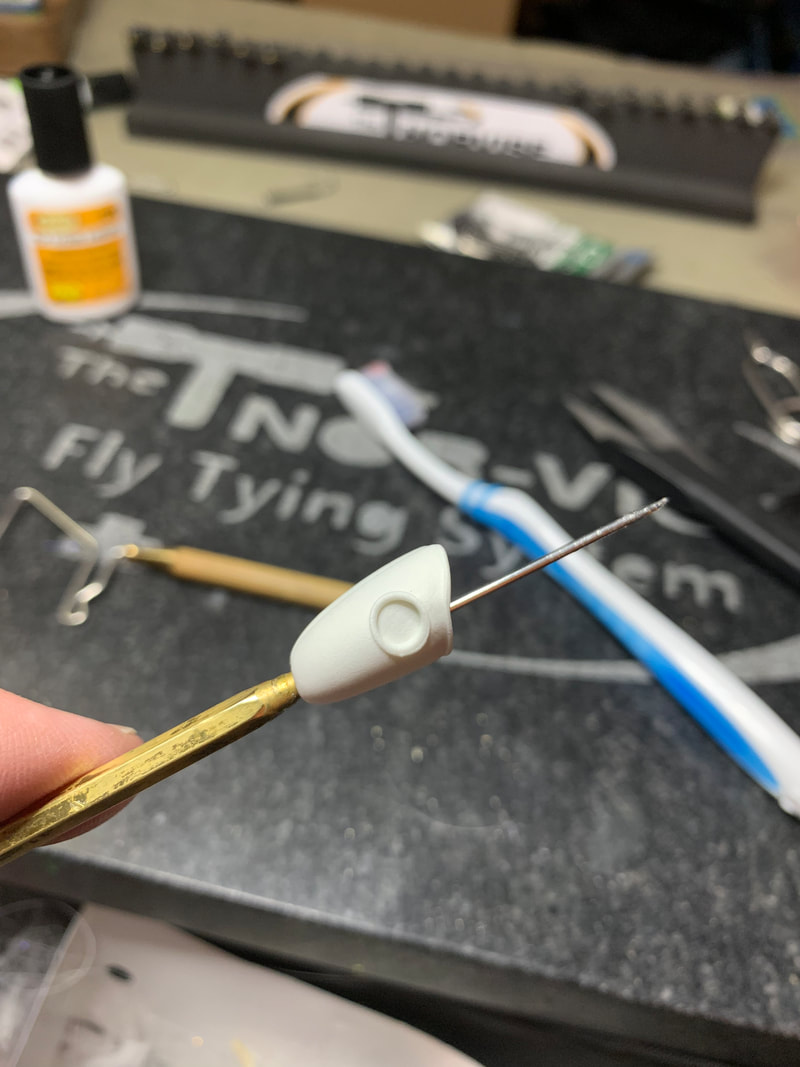
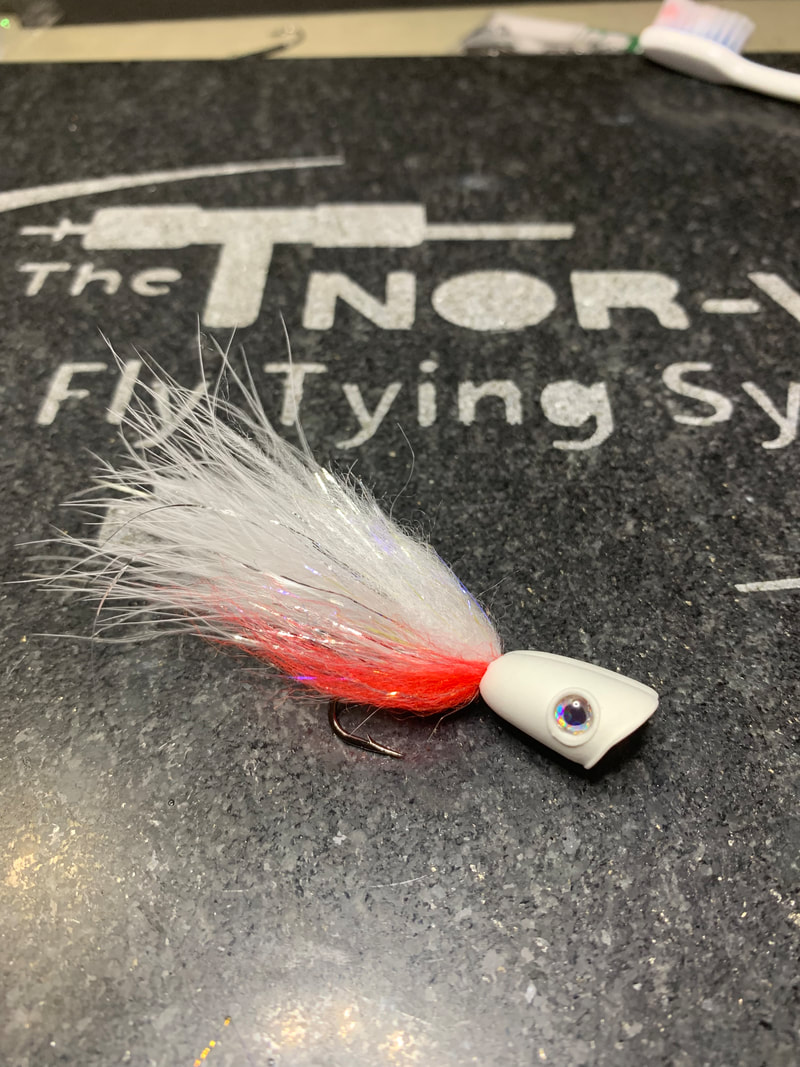
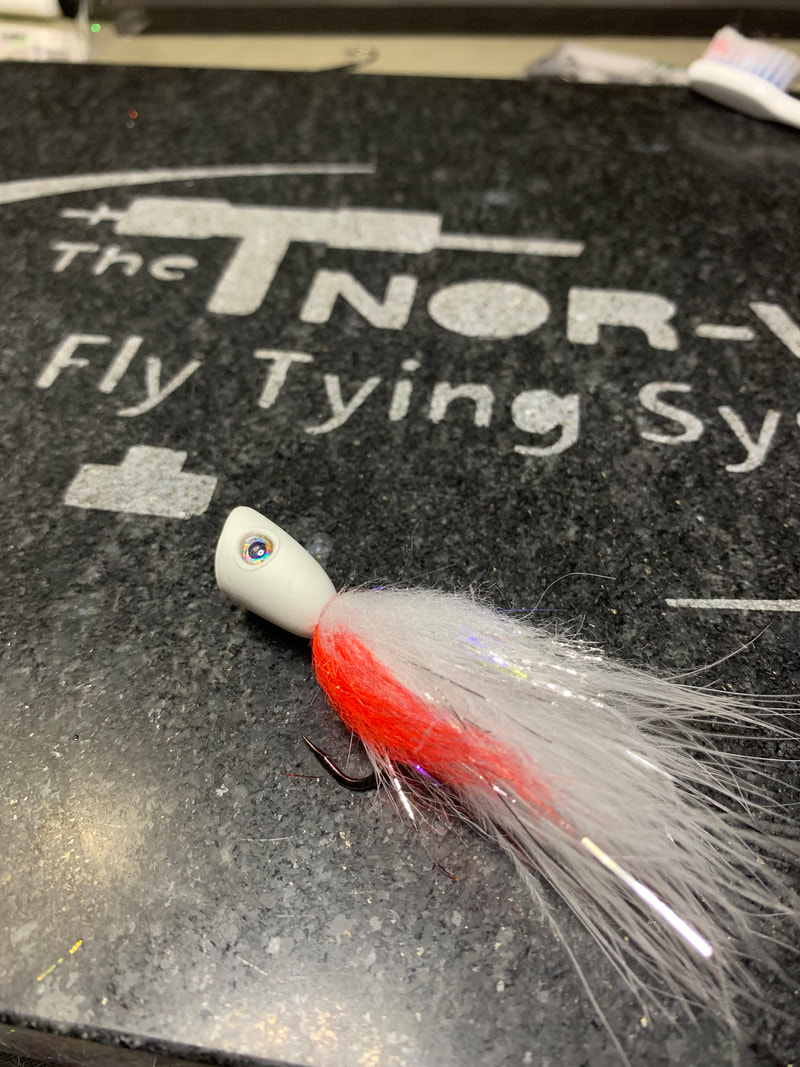

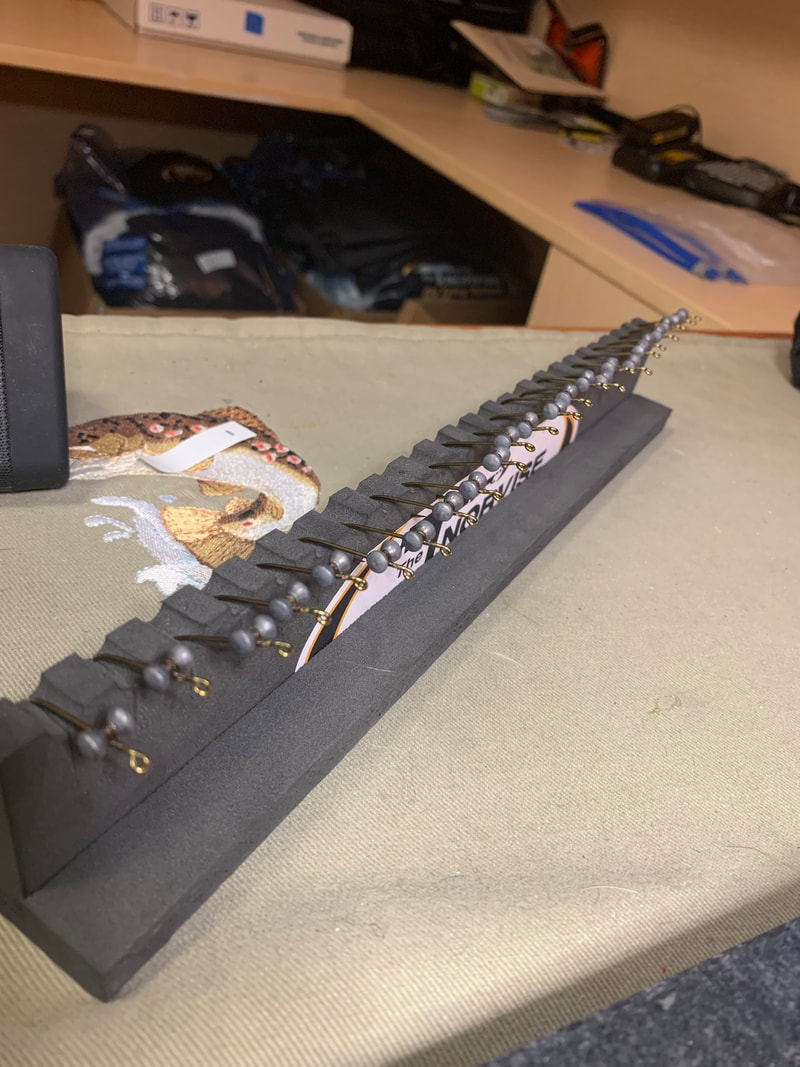
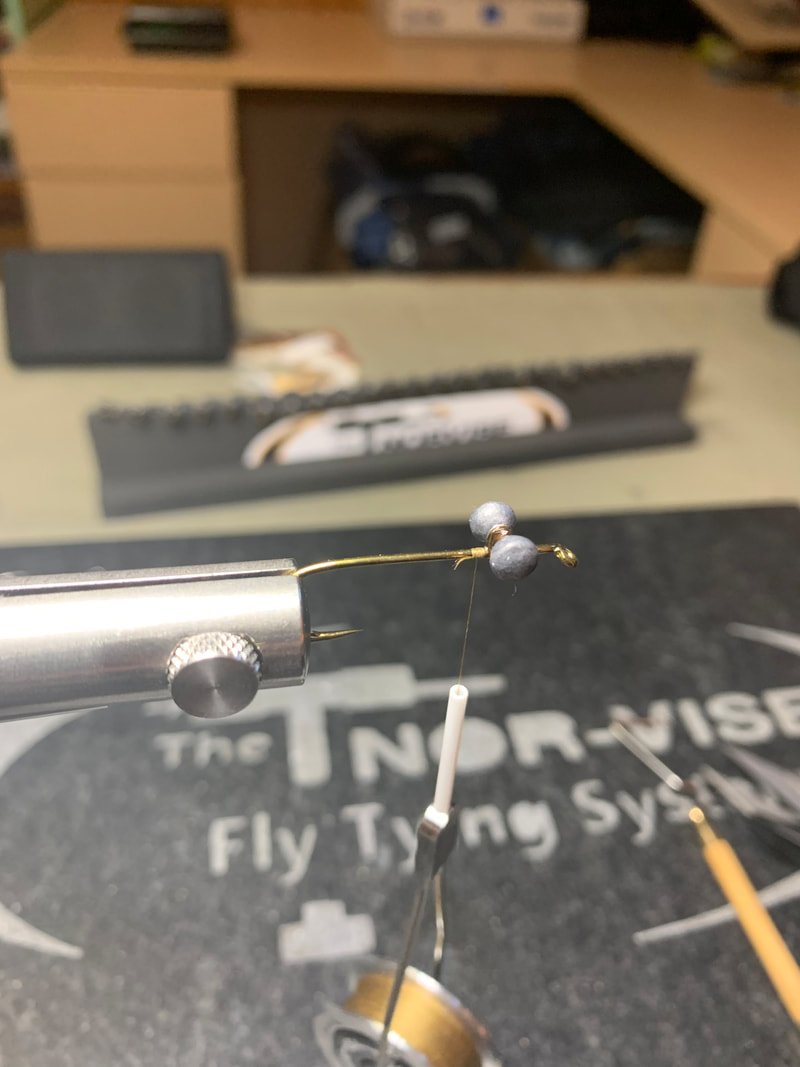
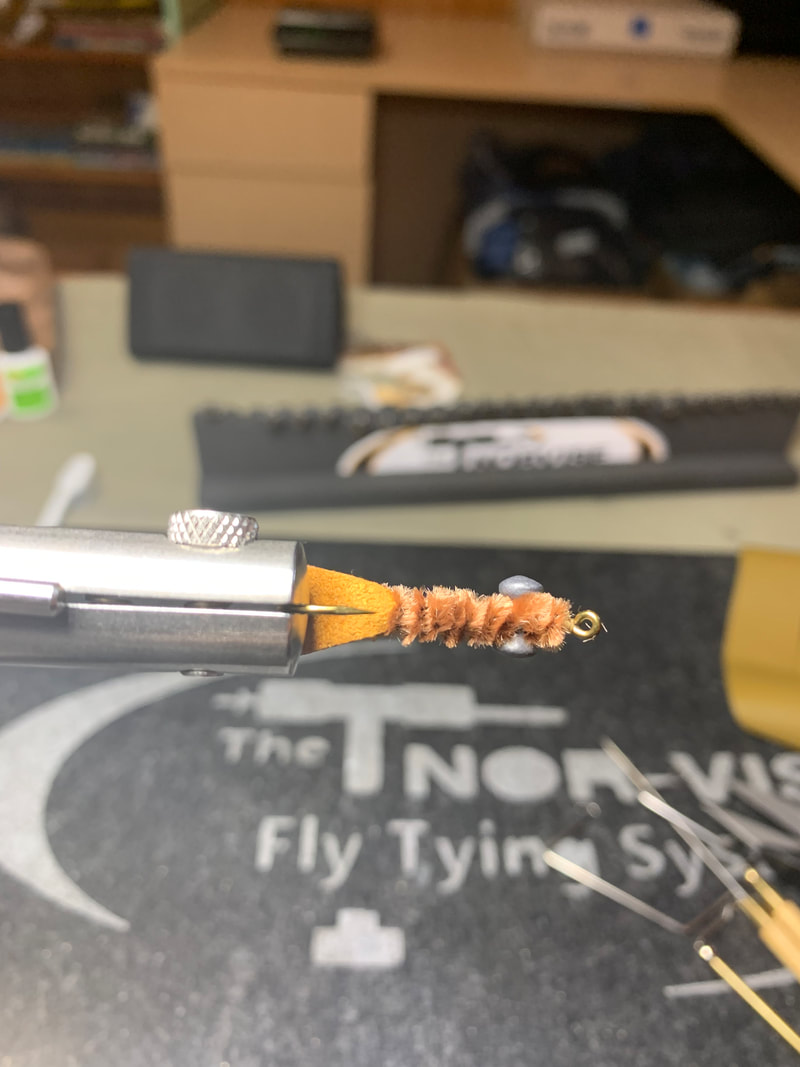
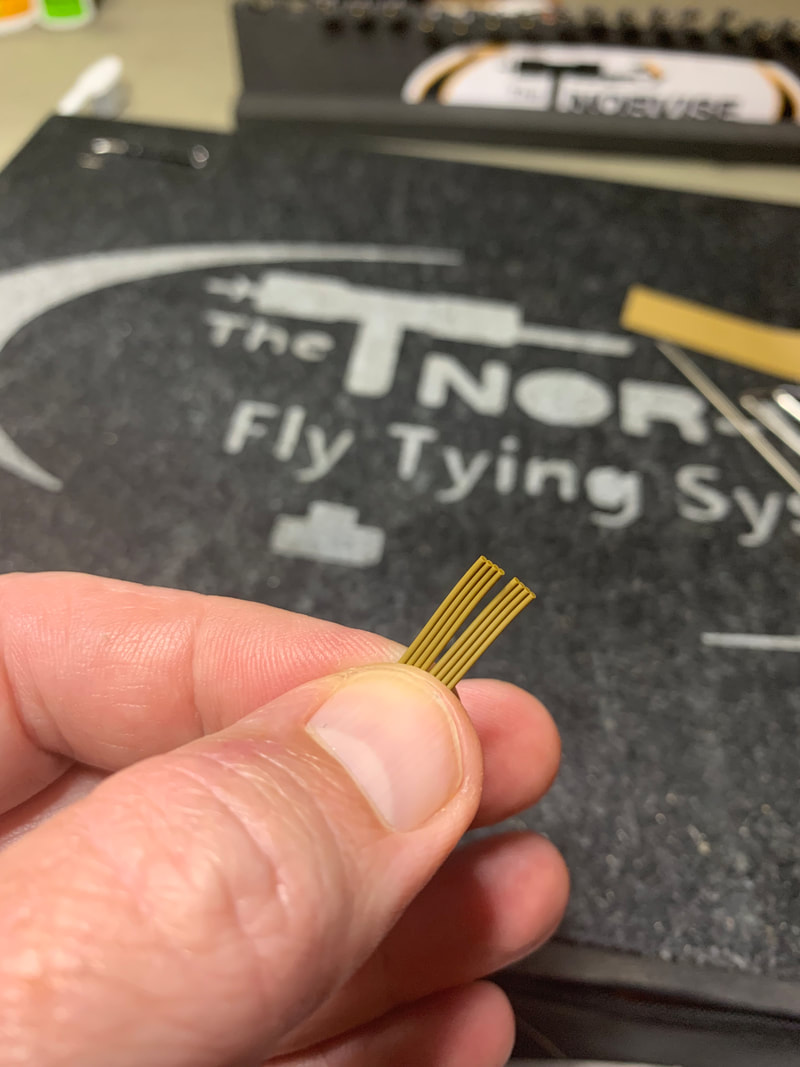
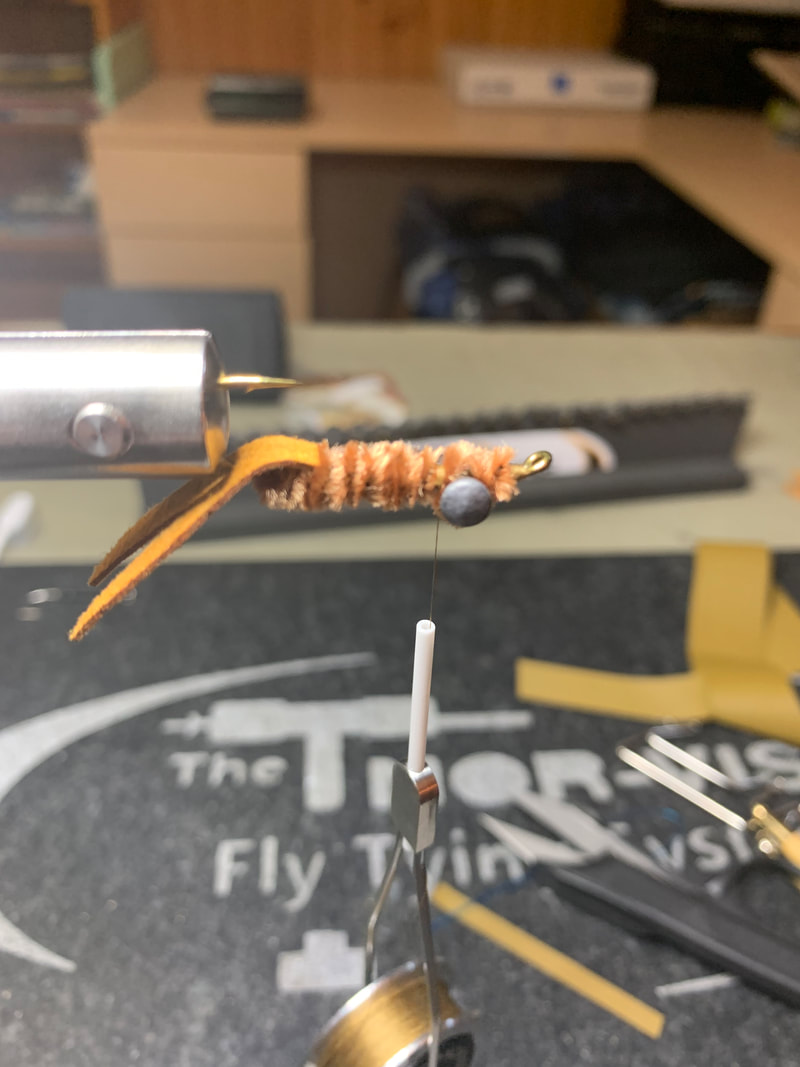

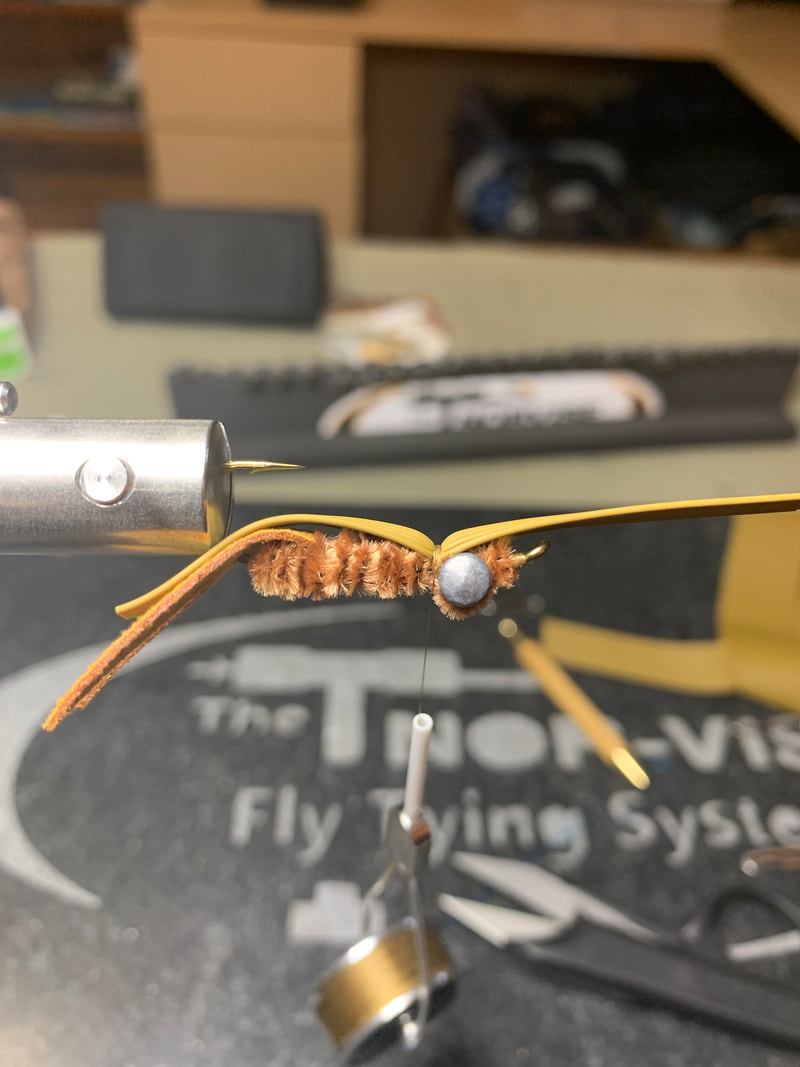
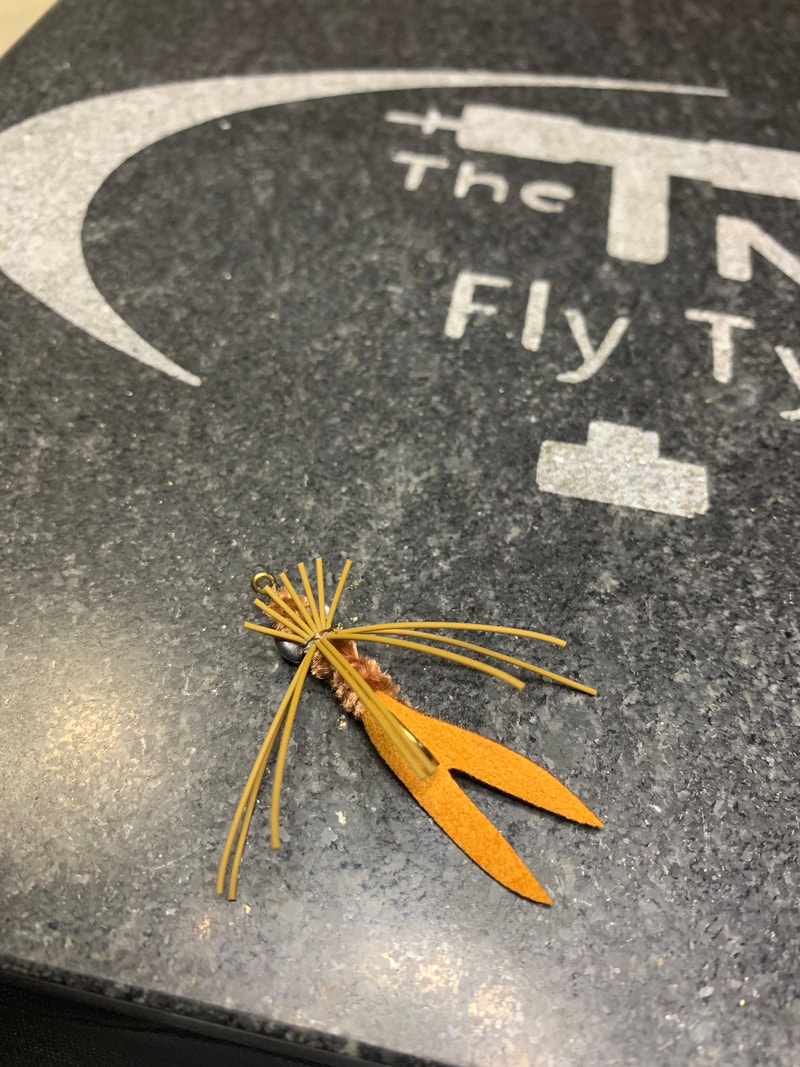
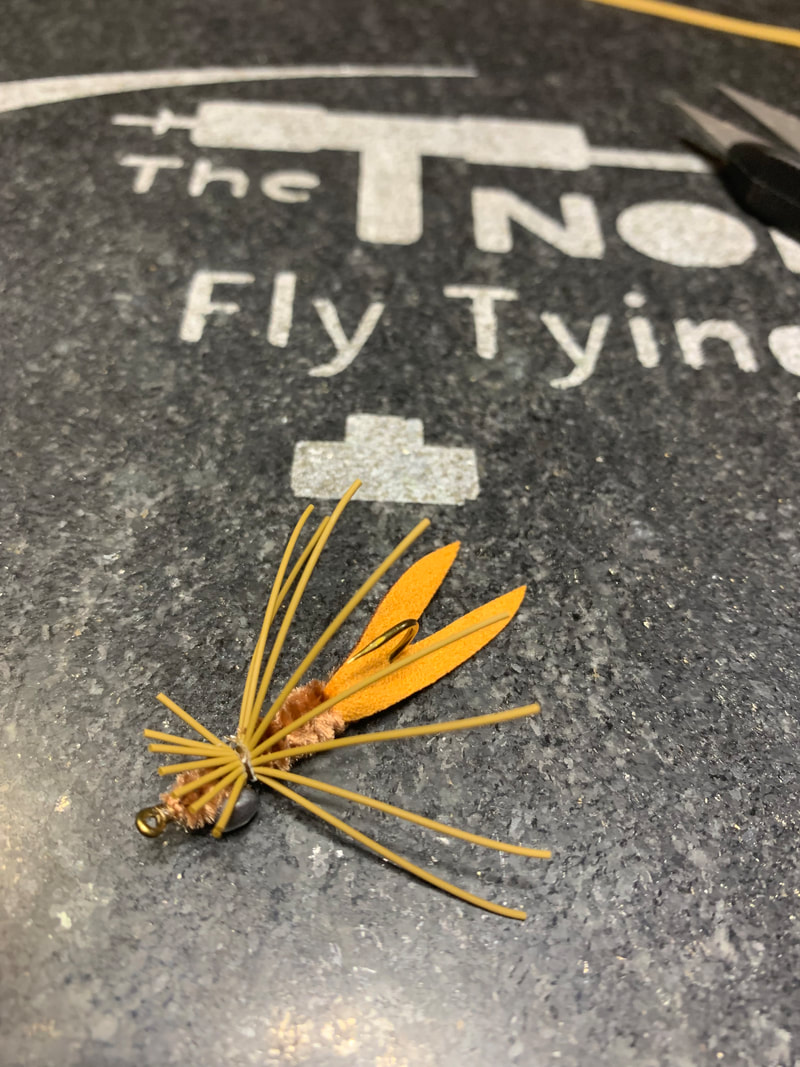
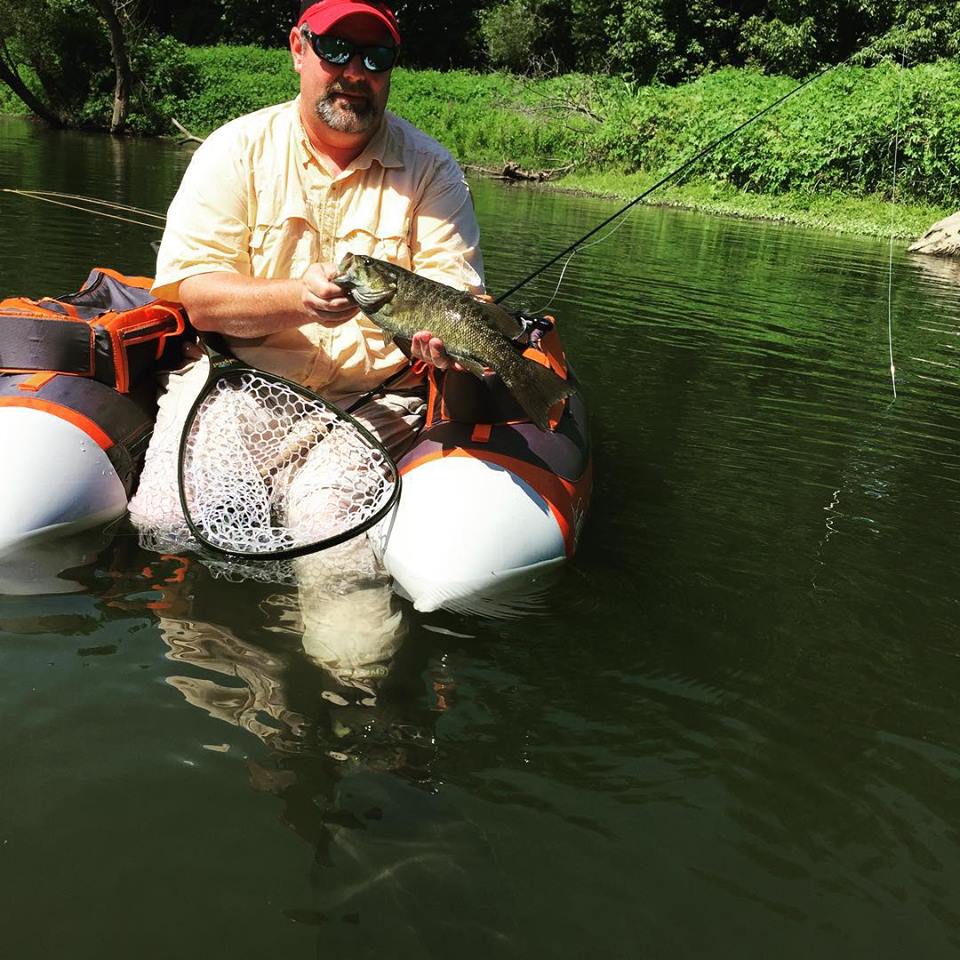
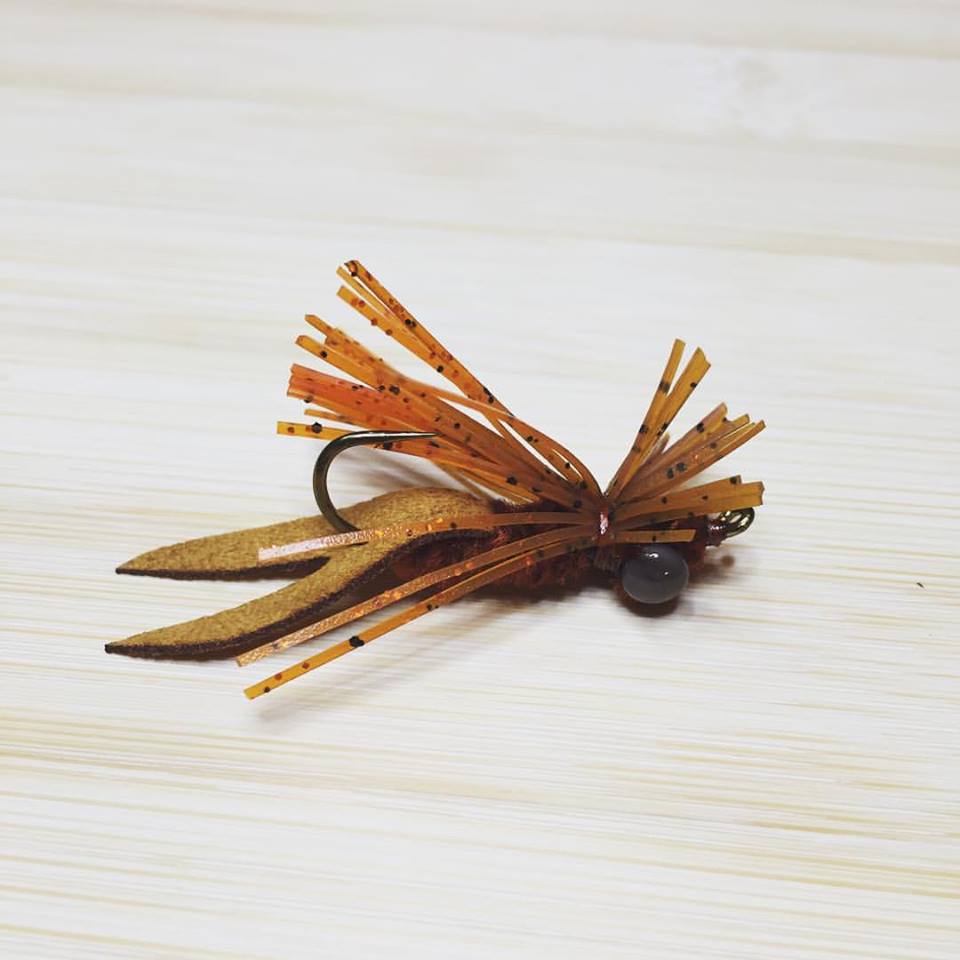
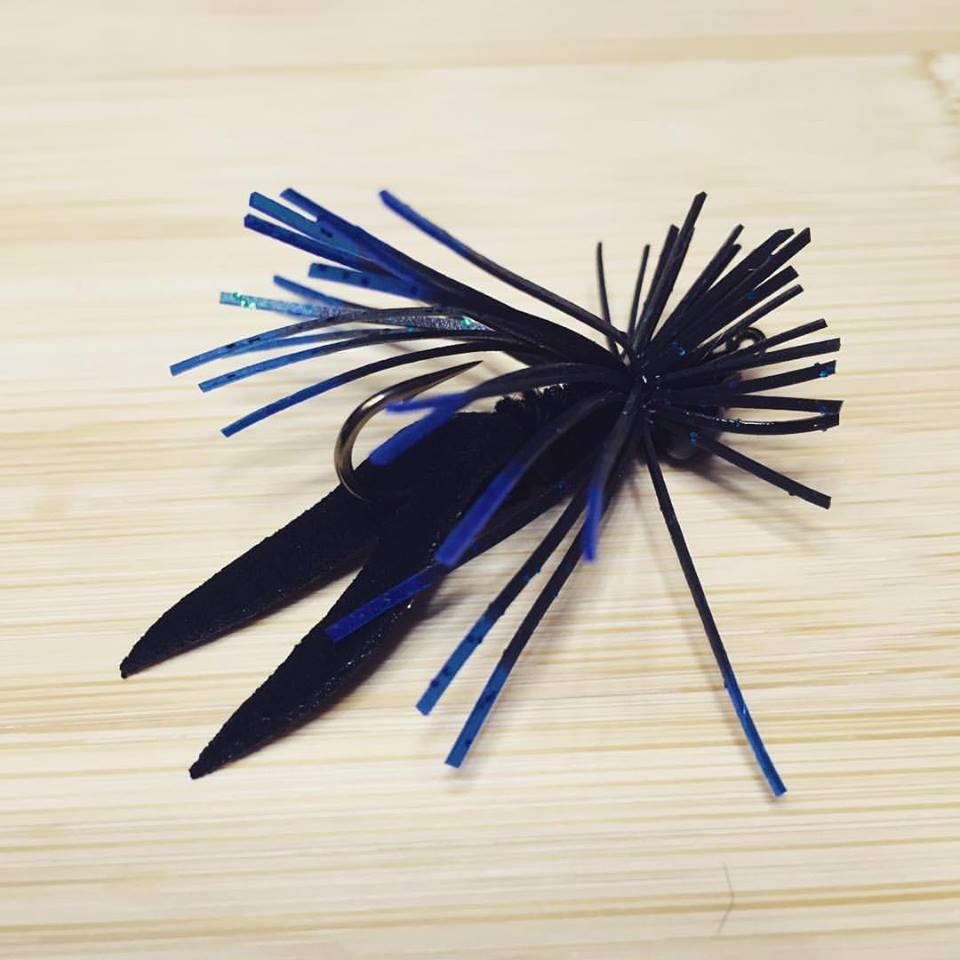
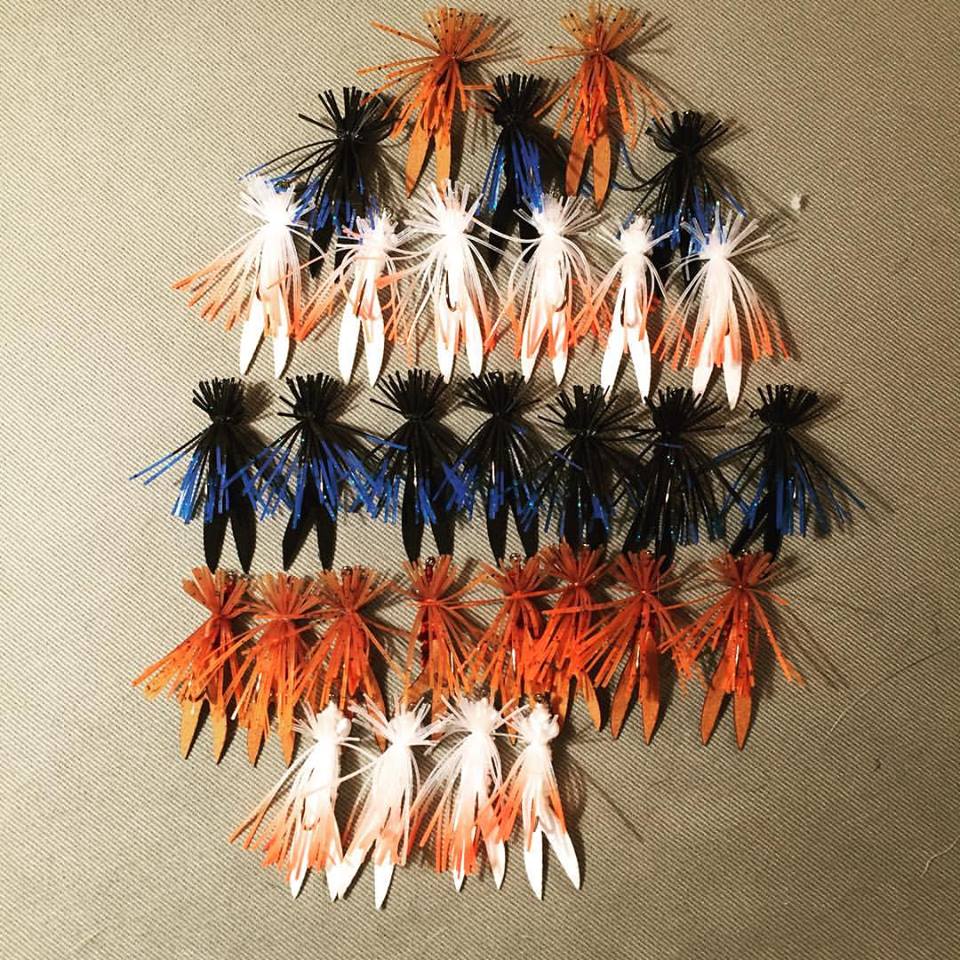
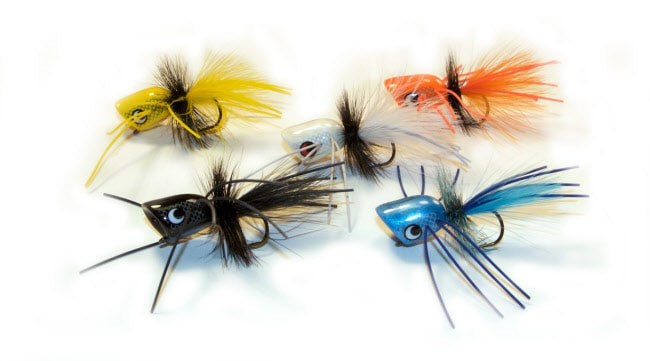
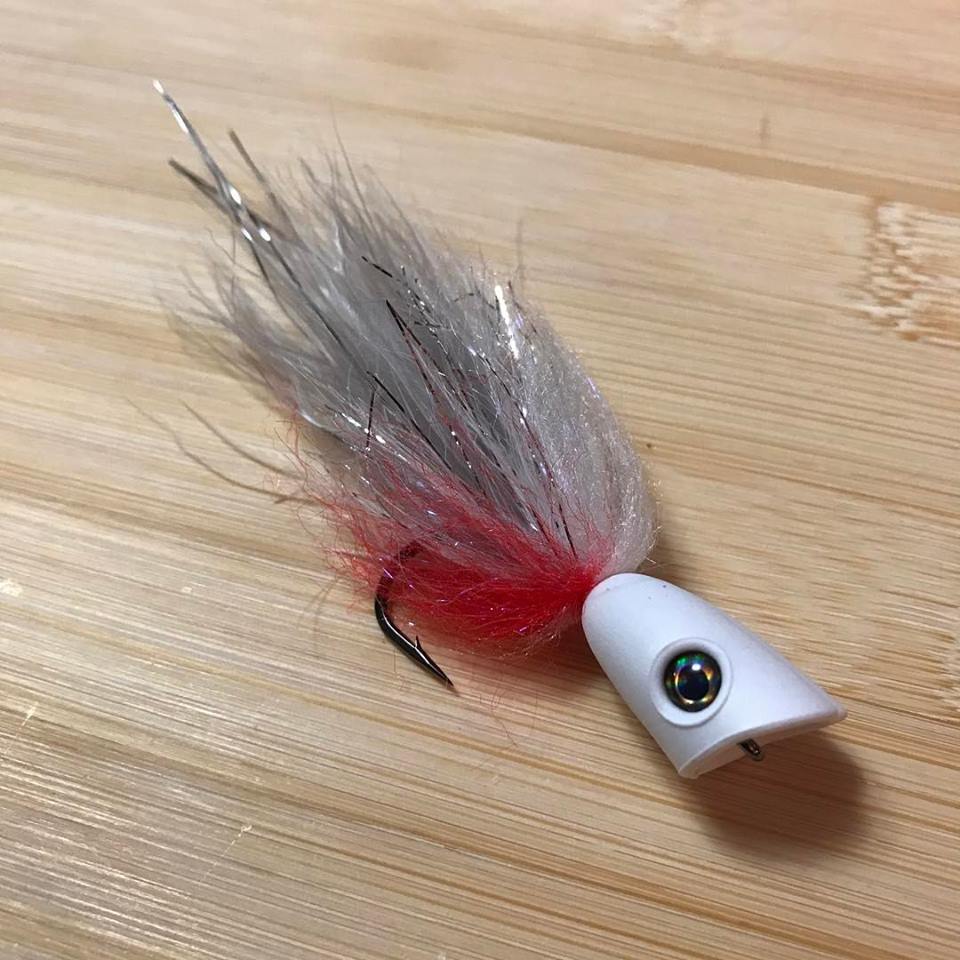
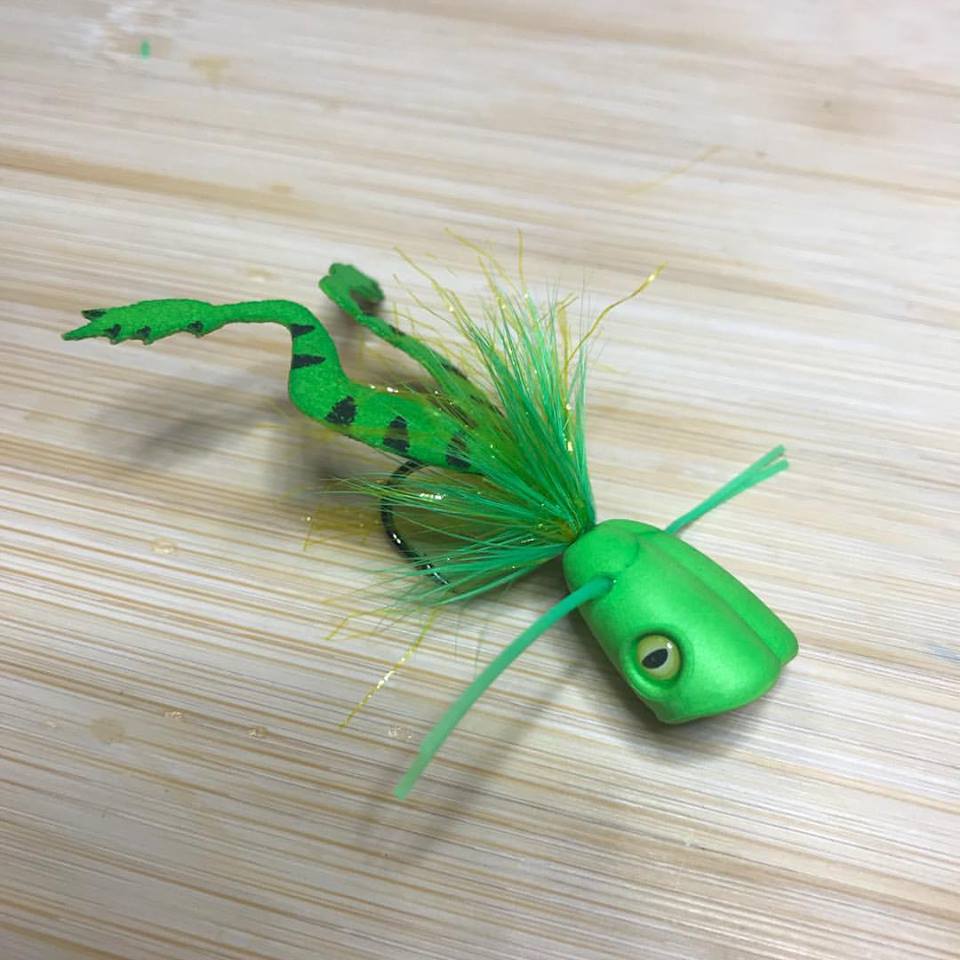
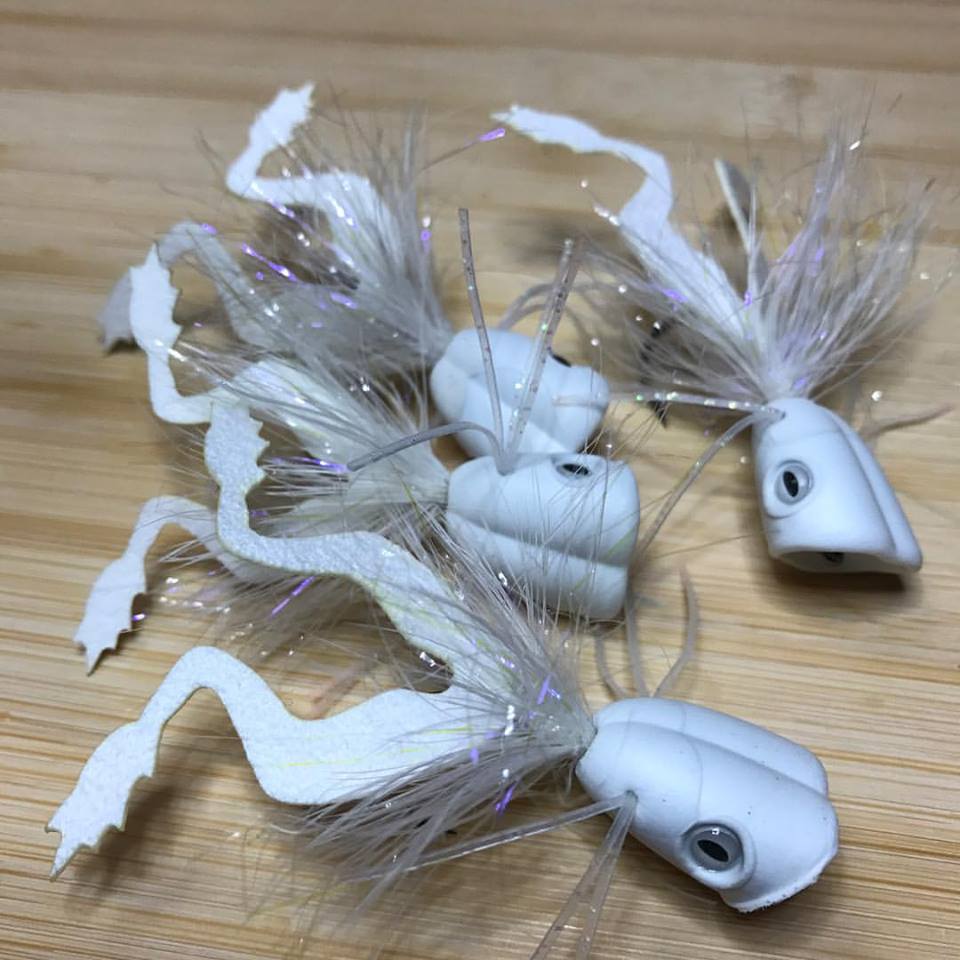
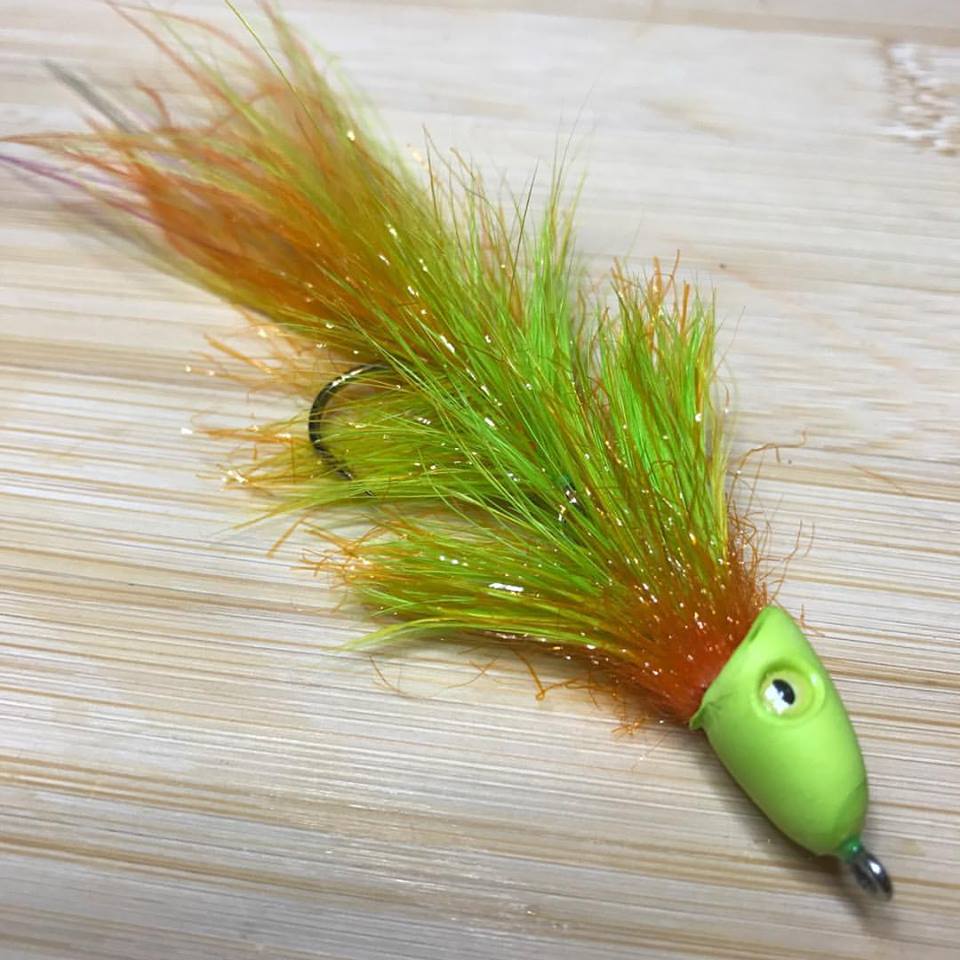
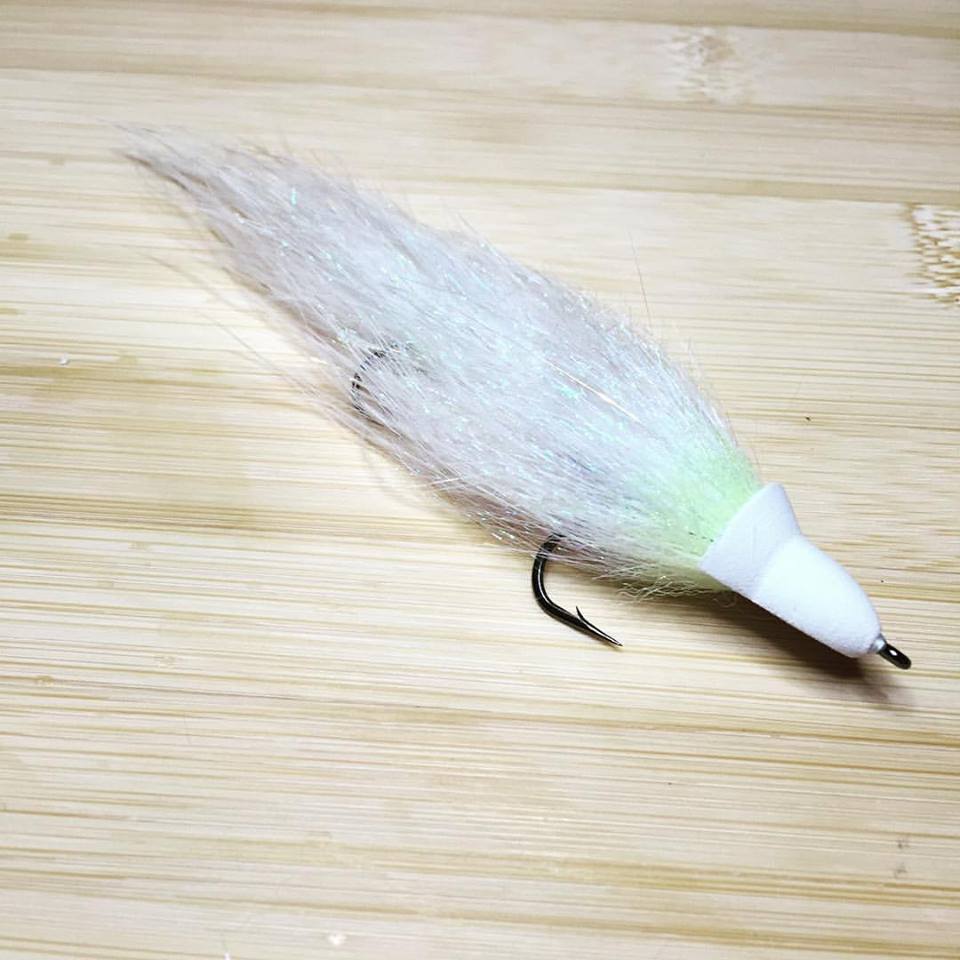
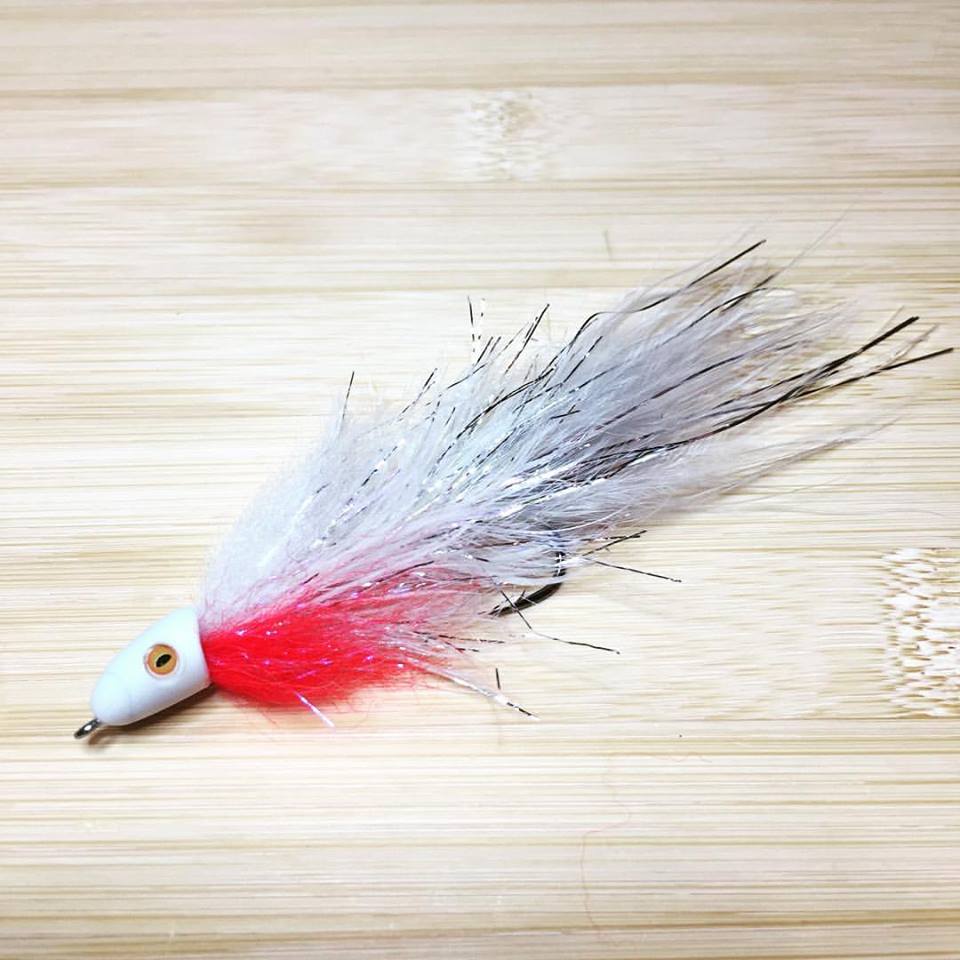
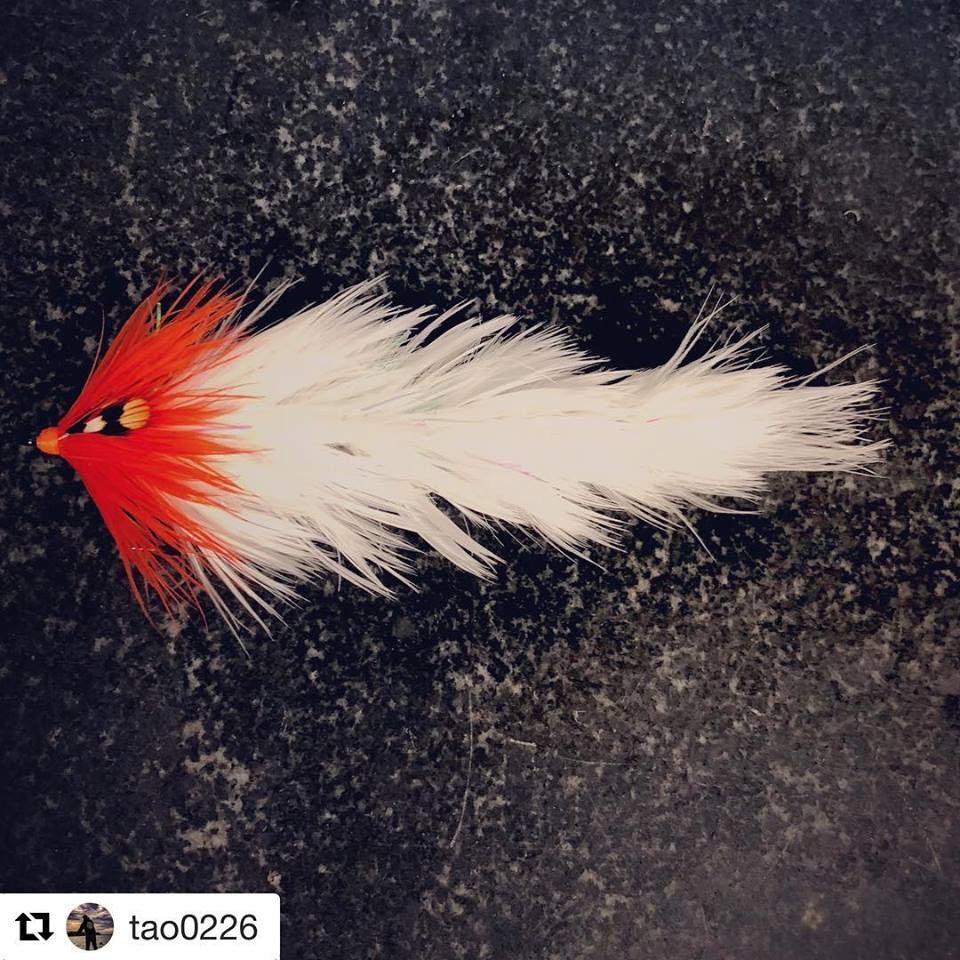
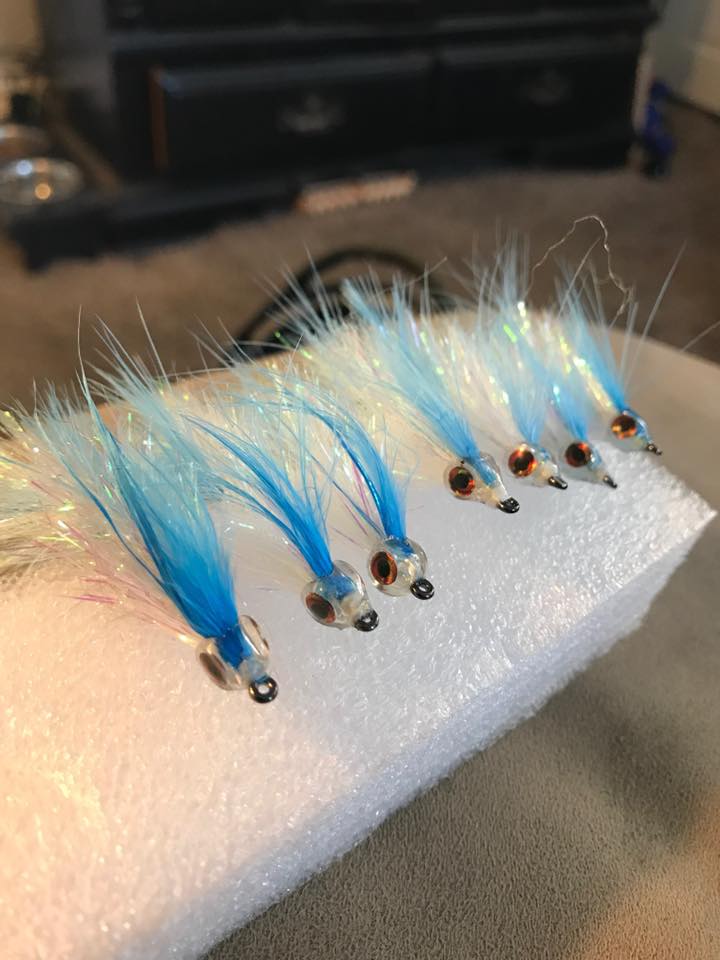
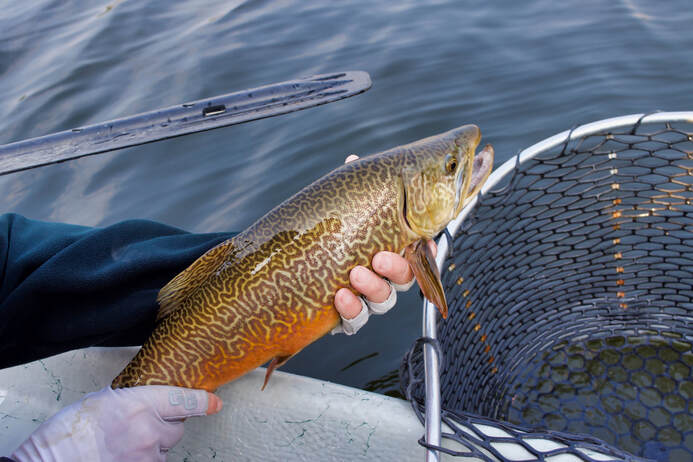
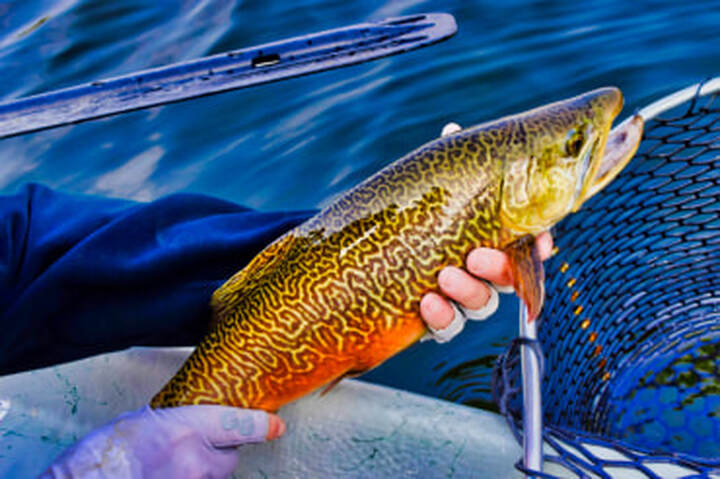

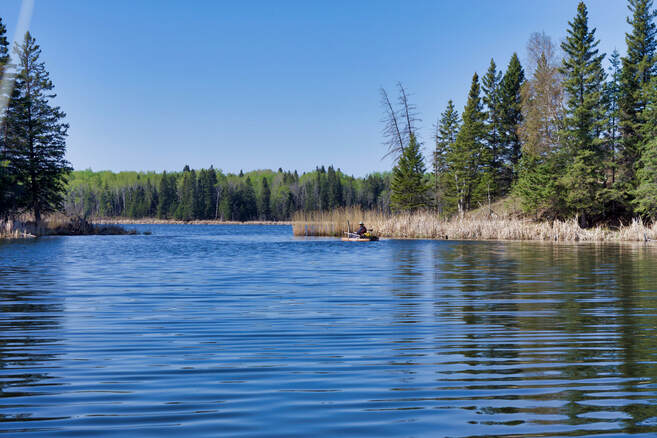
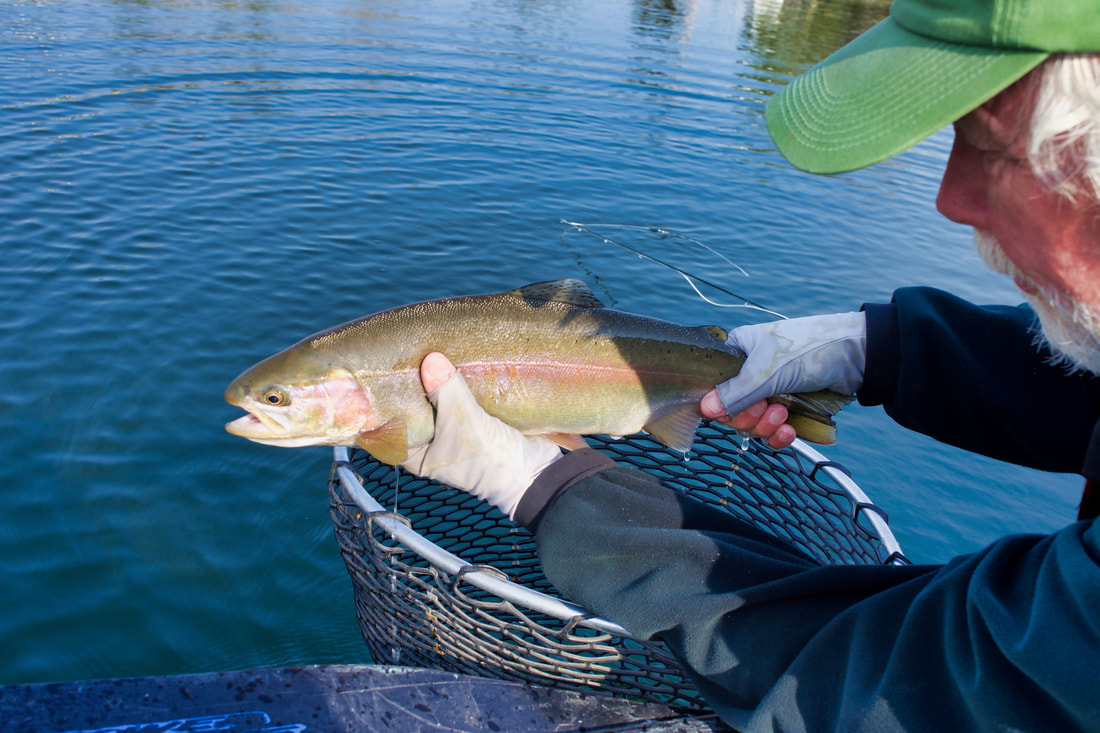
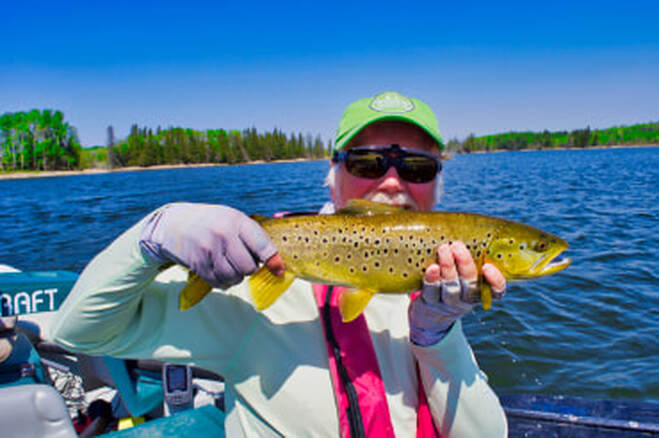
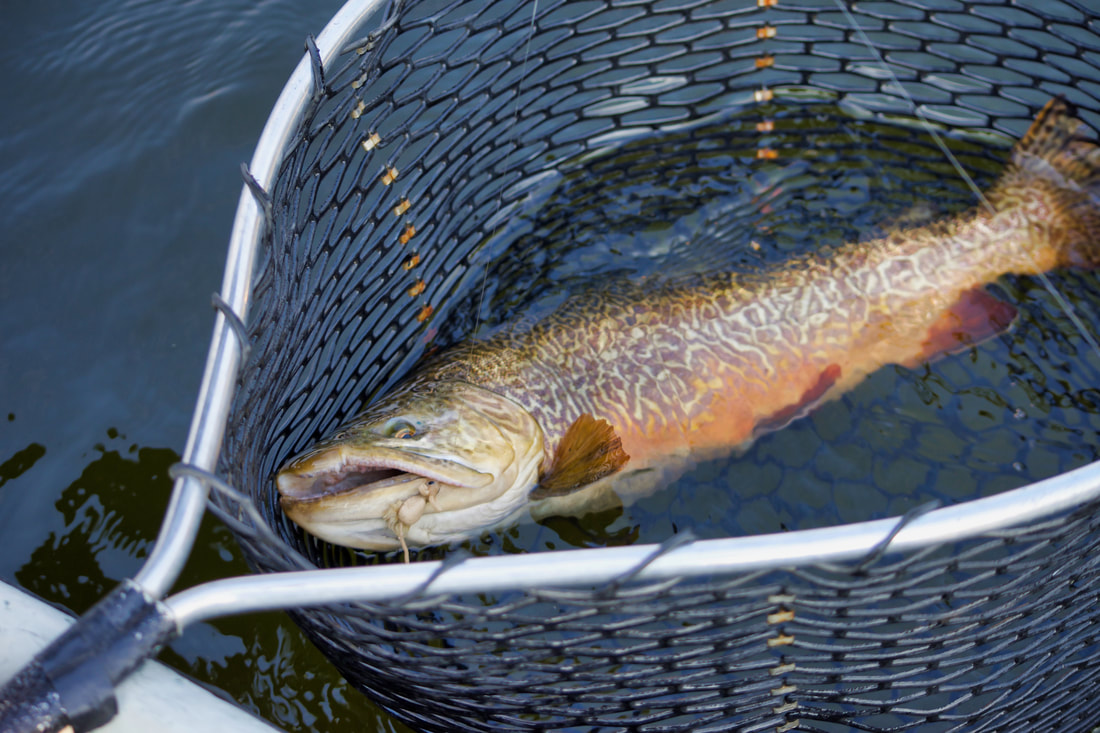
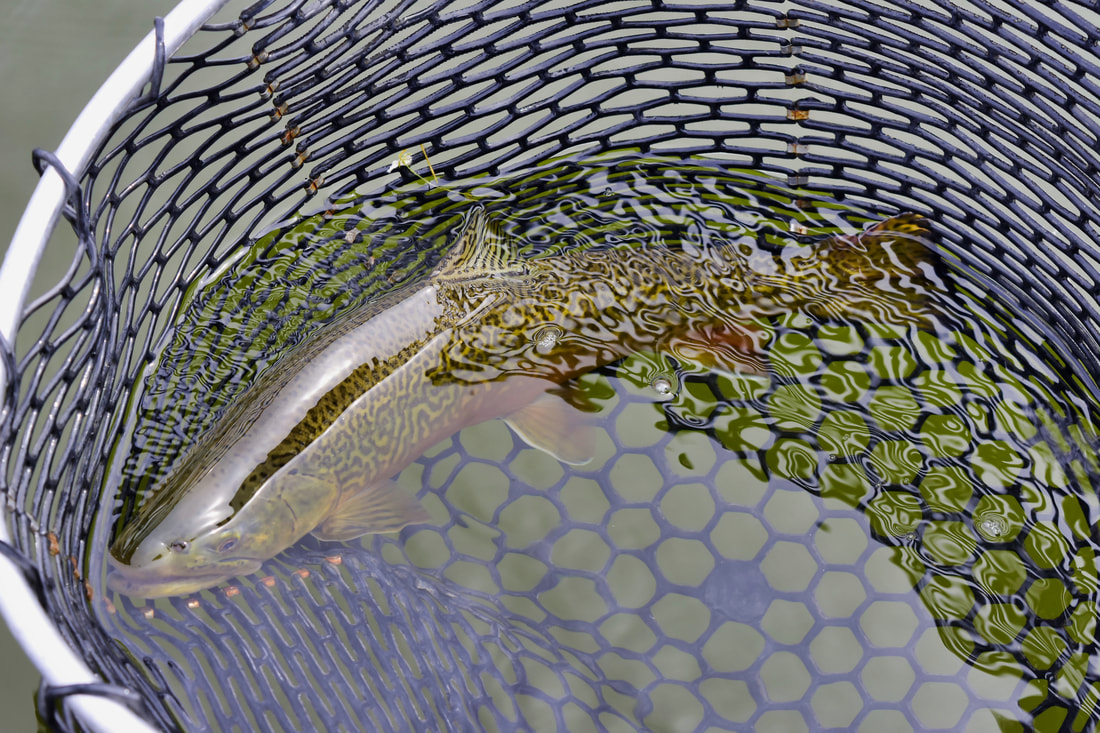
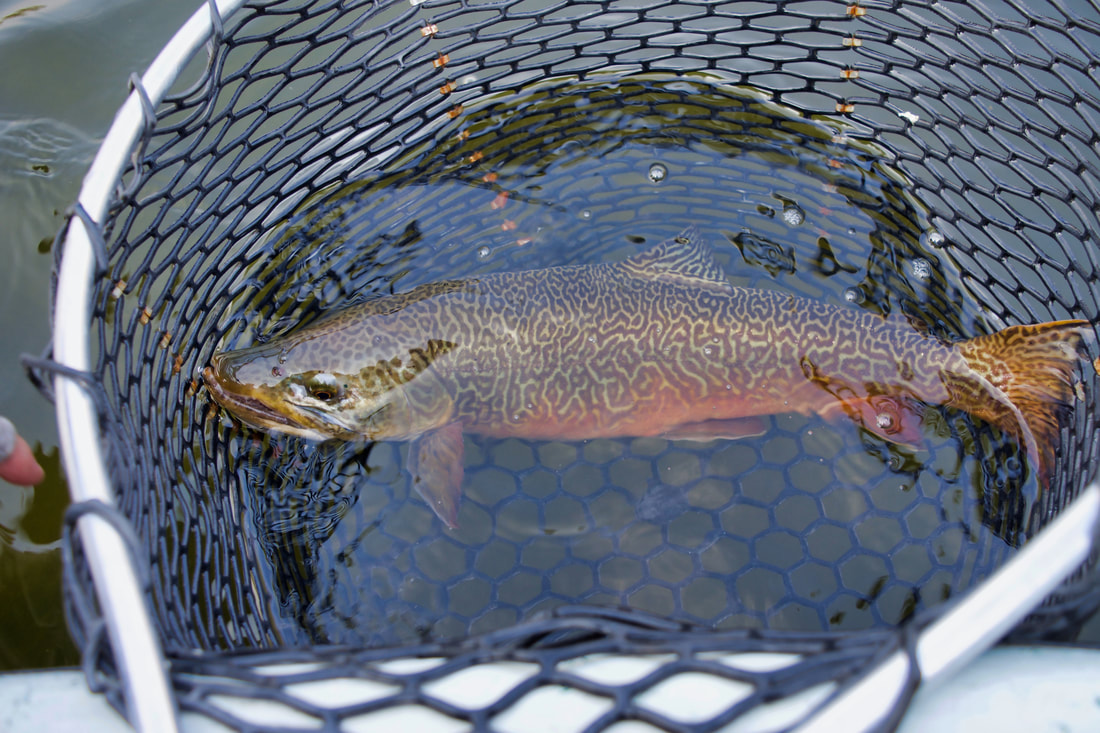
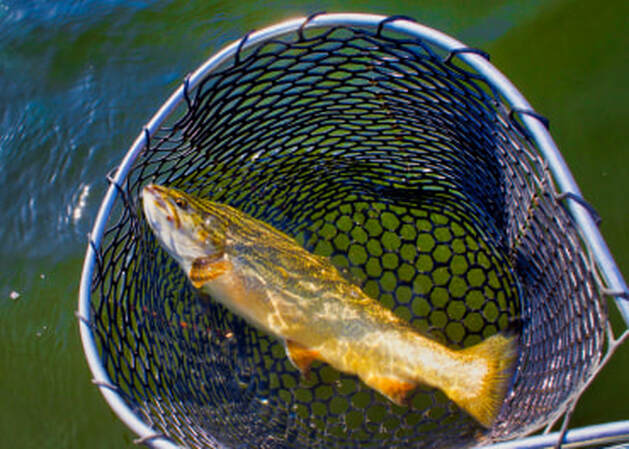
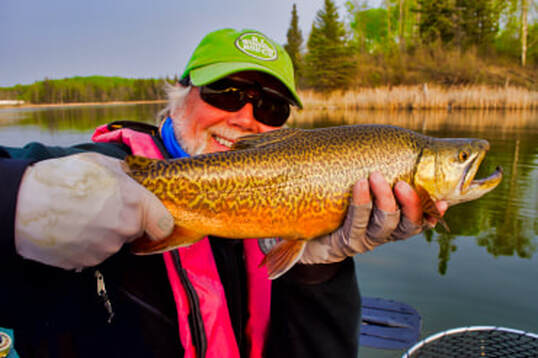

 RSS Feed
RSS Feed
